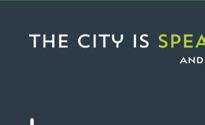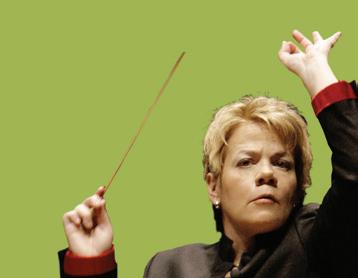An audiologist’s study of over-the-counter hearing aids, a guide to radiator noises, an investigation of ShotSpotter, and much more




An audiologist’s study of over-the-counter hearing aids, a guide to radiator noises, an investigation of ShotSpotter, and much more





CHICAGO
06 Street View George Blakemore shines while bringing attention to his activism.
08 Sula | Review A self-taught home cook opens the city’s second Trinidadian restaurant: D’s Roti & Trini Cuisine.
10 Joravsky | Politics No matter what the city says, you can be sure the casino will cost taxpayers millions of dollars.
12 Isaacs | Culture Still feeling comfortable about reproductive rights in Illinois? Don’t.
alignment, or harboring a dire malefic presence
18 Policing Chicago has quietly expanded ShotSpotter’s footprint—but it’s still listening to Black and Brown communities disproportionately.

21 Greene | Language In defense of subtitles
22 Seeds Englewood rapper Heavy Crownz blends art and community organizing.
24 Reid | Performance Foley artist Ele Matelan explains the history and practice of the cra that gave us slapsticks and thunder sheets.
26 Ludwig | Health Care What if hearing aids were as easy to get as reading glasses?
29 Silents Chicago’s silent film accompanists deliver the music.
30 Transformative Seeing with silence in avant-garde cinema
31 Horror The maddening repetition of Philip Glass’s “Music Box” in 1992’s Candyman and its 2021 sequel
learn in Sara Nović’s True Biz
40 Reid | Review Steppenwolf’s Seagull opens a lovely new space. But the production doesn’t quite take flight.

cinema does best, and no amount of cowboy bravado could pump life into The Last Victim
46 Chicagoans of Note Eli Schmitt, jack-of-all-trades in Chicago’s young DIY arts and music scene
48 Shows and Records of Note Previews of concerts including Gentle Heat, Third Coast Percussion, and Kikagaku Moyo, plus reviews of releases by Cave In, ’Kechi, Ufomammut, and more
56 Early Warnings Rescheduled concerts and other updated listings
PUBLISHER AND PRESIDENT TRACY BAIM
PUBLISHER AND EDITOR IN CHIEF KAREN HAWKINS
PRODUCTION MANAGER KIRK WILLIAMSON
SENIOR GRAPHIC DESIGNER AMBER HUFF
STORY EDITOR SUJAY KUMAR
CULTURE EDITOR SALEM COLLO-JULIN
NEWS EDITOR JIM DALEY
THEATER AND DANCE EDITOR KERRY REID
MUSIC EDITOR PHILIP MONTORO
ASSOCIATE EDITORS JAMIE LUDWIG, TARYN ALLEN
SENIOR WRITERS LEOR GALIL, DEANNA ISAACS, BEN JORAVSKY, MIKE SULA
STAFF WRITERS KATIE PROUT, KELLY GARCIA
AUDIENCE ENGAGEMENT MANAGER
YASMIN ZACARIA MIKHAIEL
EDITORIAL ASSOCIATE JANAYA GREENE
LISTINGS COORDINATOR MICCO CAPORALE
41 Preview The Chinese Lady, which tells the story of the first documented Chinese woman in America, has become painfully legible a er two years of pandemicexacerbated xenophobia.
43 Review Visceral Dance Chicago revisits a 2018 piece.
56 Gossip Wolf Mystery Actions debut a new blast of big-haircut punk rock, thrash-metal supergroup Ready for Death play their first live show, and Daddy’s Boy release an album of agitprop rippers.
VICE PRESIDENT OF OPERATIONS ANN SCHOLHAMER
DIRECTOR OF DIGITAL JOHN DUNLEVY
DIRECTOR OF DEVELOPMENT JT NEWMAN DEVELOPMENT ASSOCIATE DJEMANESH ANETENEH
DIRECTOR OF MARKETING VIVIAN GONZALEZ
14 Collo-Julin | Everyday What does a neighborhood sound like? And what does that mean?
16 Prout | Guide How to tell by listening whether your steam radiator is healthy, out of
34 Comics Coco Picard interviewed artists Dutes Miller and Stan Shellabarger about their practice earlier this spring.
36 Politics of Care Curator and cultural producer Ciera McKissick forges a future in art and community.
38 Allen | Books There’s a lot to
44 Plays of Note The Luckiest gets a stellar production with Raven, Trap Door’s Medea Material evokes inchoate rage, and The Pavilion captures how “what if” rules our lives.
45 Movies of Note Anaïs in Love is as magnetic as its protagonist, Happening is the kind of interpretation of real life that great
58 Savage Love Dan Savage writes a column about worries.
SPECIAL PROJECTS ASSOCIATE SHAWNEE DAY MEDIA PARTNERSHIPS COORDINATOR YAZMIN DOMINGUEZ
CIMA SUPPORT SPECIALIST SAVANNAH HUGUELEY EXECUTIVE ASSISTANT SANDRA L. KLEIN
ADVERTISING
312-392-2970, ADS@CHICAGOREADER.COM CLASSIFIEDS: CLASSIFIED-ADS@CHICAGOREADER.COM
VP OF SALES AND BUSINESS DEVELOPMENT AMBER NETTLES VICE PRESIDENT OF SALES AMY MATHENY SALES TEAM VANESSA FLEMING, LENI MANAA-HOPPENWORTH, TIM OGDEN, TED PIEKARZ, WILL ROGERS, LISA SOLOMON DIGITAL SALES ASSOCIATE AYANA ROLLING
NATIONAL ADVERTISING VOICE MEDIA GROUP 1-888-278-9866 VMGADVERTISING.COM JOE LARKIN AND SUE BELAIR
DISTRIBUTION CONCERNS distributionissues@chicagoreader.com 312-392-2970

READER (ISSN 1096-6919) IS PUBLISHED BIWEEKLY BY CHICAGO READER L3C 2930 S. MICHIGAN, SUITE 102 CHICAGO, IL 60616 312-392-2934, CHICAGOREADER.COM
COPYRIGHT © 2022 CHICAGO READER PERIODICAL POSTAGE PAID AT CHICAGO, IL
ALL RIGHTS RESERVED. CHICAGO READER, READER, AND REVERSED R: REGISTERED TRADEMARKS ®
Nearly half of Chicago police employees applied for exemptions to the COVID-19 vaccine, Taylor Moore reports.
Hundreds demonstrated downtown a er a leaked dra of a SCOTUS decision threatened abortion rights.


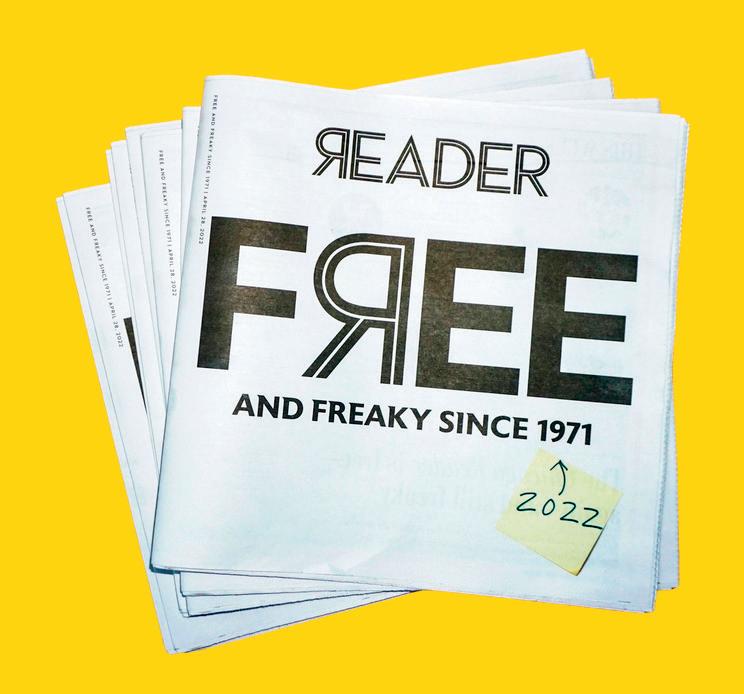



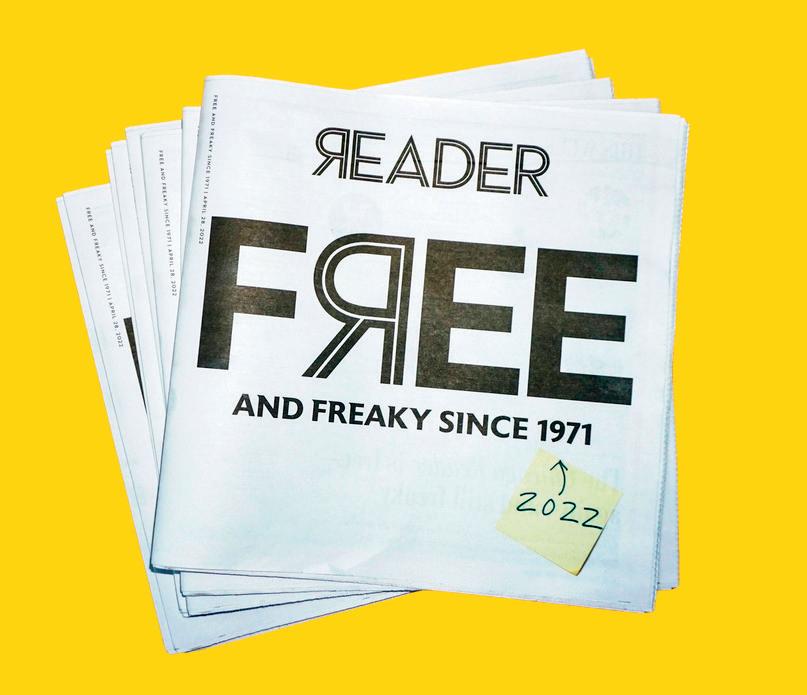


 By ISA GIALLORENZO
By ISA GIALLORENZO
Walking down North Avenue with his bulky Home Depot purchases in tow, George Blakemore sparkled in a glistening metallic-toned ensemble he painted himself. “I think that we all are artists,” he said.


“We all use our imagination and we all are creative. There was a Black gentleman that died called Mr. Imagination who would say everything begins with the mind. When you saw me and thought, ‘I would like to take a picture of this gentleman,’ it started from your mind. And so, even though you are a reporter for the Reader, that’s an art too because you are creating.
“We all are artists because everything comes from the mind. And during the COVID-19 that was good therapy for me, and it would be good therapy for everybody to do something creative. Some people might sew, and might sing, and might dance, and all of that is using your imagination,” Blakemore said, always generously bringing his attention to the person he’s talking to. It is fair to say he interviewed me as much as I interviewed him on that bright Sunday afternoon earlier this spring.
“I paint Chinese umbrellas and I do canvas also. During my birthday party, they had a lot of my artwork there. A lot of people who came over made a purchase, and some of them gave me a little present,” says Blakemore, grateful for the 80th birthday party that the organization ExCons for Community and Social Change (ECCSC) had just thrown for him.
“I just thought it was wonderful that these young men and women were there to honor me. They are ex-o enders who are free now, and they’re doing good things in the Black community. I like to push positive things because there’s so much negativity that’s going on in our community. This is a grassroots organization whose founder, Tyrone Muhammad, stayed in the penitentiary for 21 years. Now he’s out trying to make positive contributions,” Blakemore explained.
An activist himself, Blakemore reminded me he’d been featured in the Chicago Reader 2015 People Issue, which presented him as “The Concerned Citizen.” That profile by Deanna Isaacs showcased Blakemore’s extensive history of attending meetings of local governing bodies and speaking his mind whenever he could. “The citizens have a responsibility and the elected o cials have a responsibility. All of the above have dropped the baton,” he said in the article.
In his activism, Blakemore—a former civics teacher—fights for Black people to receive goods, services, contracts, and jobs in Chicago and Cook County. He considers those to be reparations that the Black community deserves. Having arrived in Chicago in 1970 at the end of the Great Migration, Blakemore said he has mixed feelings about the city he now calls home. “I’m working to make a better, more inclusive Chicago, where all people can benefit from living in this beautiful global city,” he said. v










































A self-taught home cook opens the city’s second Trinidadian restaurant.

 By MIKE SULA
By MIKE SULA
Nobody just wakes up and says, “I’m gonna make roti today.” Not for the first time, anyway, and not without preparation.
So says Dawn Lewis, who over the last four years earned the title of “the Roti Lady” among Trinidadian expats exiting frenetic soca fetes at the South Loop club Bassline,
who grew dependent on her curry-stuffed dhalpuri and flatbreads.
“I’d make 50 or 60 roti and pull up at the end of the night and sell them out of the trunk,” says Lewis. “Ten minutes later they sold out. Gone.” It wasn’t long before promoters started inviting Lewis inside the club to sell, and along with monthly sold-out online roti pop-ups, the
onetime federal government worker built the nest egg that allowed her to move her operation out of her Dolton home kitchen and into a 200-square-foot kitchen at the South Loop Food Company in late March.
If you’re keeping score, D’s Roti & Trini Cuisine is one of two Trinidadian restaurants in Illinois, both of them operating out of that
particular ghost kitchen.
Lewis, 42, isn’t Trinidadian, but she grew up among the south suburban expat community and learned to cook the island’s syncretic Caribbean cuisine after marrying a man from the mountains in the northwest of Trinidad. “I’ve been gifted cookbooks from a lot of Trini people I know,” she says. “I watched videos,
read literature, or it was just trial and error. And we have people in the neighborhood. We have friends. Whenever I cook something I’m like, ‘Come taste this. Tell me how it is. What needs to be improved?’”

It didn’t come easy. Her first attempts at dhalpuri, the yellow split pea-infused roti, didn’t go well. “I did four roti and I thought I was gonna pass out because the dough was so hard to knead.” An ambitious early attempt at her husband Marvin’s birthday party ended up with rotis that were stiff and unyielding and could’ve been a setback if she hadn’t persevered.
“I know people were talking about me,” she says. “But you never give up if there’s something you love to do. I kept at it. I kept at it and here we are today.”
Dhalpuri and paratha are two of the most iconic and celebrated flatbreads in a whole Trini canon, most of them derived from the Indian migrant population. Dhalpuri incorporates ground yellow split peas into the wheat flour dough before it’s rested, rolled, and cooked on a flat griddle known as a tawa, producing a silky-soft envelope for fillings.
Paratha often incorporates a bit of sugar into the dough, which is layered, and sometimes buttered, and pressed in from the edges as it cooks to achieve a tensile but flaky outcome. Paratha is also known as “buss up shut” for its resemblance to a busted up shirt. Lewis o ers each of these with chicken, beef, or potato and chickpea curries.
She also does doubles: smaller fried flatbreads known as bara that come with curried chickpeas and are meant to be augmented with a handful of chutneys, including: tamarind, culantro-based shado beni sauce, pickled green apple kuchela, and hot pepper sauce made with her homegrown pimentos.
Lewis makes between 50 and 60 roti a day by herself, and though she can now bang out a batch of dough in five minutes (not counting one to two hours of resting), it took some time to get there. “You have to wake up early in
the morning and go kill two chickens,” which is her sly way of not revealing certain secrets she’s picked up. “One thing I’ll say, flour is a fickle thing. People think you have to kneadknead-knead the flour—and you don’t. You have to be gentle with it. And you have to have a clean heart and pure hands.”
You might wonder why Lewis chose to move into the same ghost kitchen as the only other Trini restaurant for miles. But apart from the flatbreads, there’s little overlap between her menu and her neighbors at Cafe Trinidad. She o ers fry bake and saltfish, a deep-fried flatbread split open and packed with salt fish, or buljol; reconstituted salt cod, sauteed with tomatoes, and peppers. Pelau is another regular standard: browned rice with stewed chicken, pigeon peas, and calabaza. On Fridays there’s Trini-style Chinese with five-spicelacquered roast chicken and chow mein or fried rice. Saturdays bring more restoratives for folks recovering from the previous night’s liming: thick cow heel soup, or split pea-based corn soup. “There’s always that corn soup man selling after the party,” she says. “You get that corn soup after you’ve been drinking and it brings you back and opens you up. You say, ‘OK, I can go a little bit longer.’”
After that she o ers the classic Trini Sunday lunch of stewed chicken, macaroni pie, red beans and rice, and callaloo. But these dishes represent just a fraction of her repertoire. Over the holidays she’s busy filling orders for tamale-like pastelles, rugelach-like currant rolls, coconut sweetbreads, and the iconic rum or brandy-soaked black cake. Her Instagram features a deeper bench, dishes she could only pull off in a brick-and-mortar, which is her long-term goal.
In the short term, she just wants more people to, “Try meh hand,” she says. “In Trini culture people say, ‘Try meh hand,’ try my food. Or, ‘She have a sweet hand,’ meaning she can cook.” v
@MikeSula

No matter what the city says, you can be sure the casino will cost taxpayers millions of dollars.
By BEN JORAVSKYIn the last few weeks, Mayor Lightfoot has revealed several important details about the casino she’s pushing so hard to develop, including . . .

Where it will go—near Chicago and Halsted on the city’s near north side.
Who will run it—Bally’s Corporation.
And why we need it—to raise money to pay police and firefighter pension obligations.
But she’s not told us the details many Chicagoans probably most want to know—how much it will cost.
For the moment, Mayor Lightfoot is sort of pretending the project has no public costs. As though Bally’s is shouldering the expenses.
Or as the Sun-Times recently reported: “Bally’s will foot the bill for those infrastructure upgrades, according to Jennie Huang Bennett, the city’s chief financial officer. . . . No tax increment financing district will be created for the corporation either, she said during an interview with the Sun-Times editorial board shortly after the casino announcement.”
Wow. That’s quite a pledge. Of course, I hope no one in Chicago actually believes it—that would mean you’ve learned nothing over the last few decades.
To understand why I’m so skeptical, consider the scope of the project that Bally’s and the city have proposed.
They want to build a super-big casino on a site where a Tribune printing plant has been operating for over 40 years—so there’s a lot of wear and tear on the property. Also, they’ve got train rails running along the site.
Before they actually build the casino, someone is going to have to pay to buy the property, demolish the printing plant, rid the site of any toxins, and probably do something about those unsightly train tracks.
Plus add traffic lights, widen and pave streets, and do whatever else it takes to assure locals that said super-big casino won’t overwhelm the nearby River West neighborhood
with tra c.
And the Lightfoot administration is suggesting that all of this won’t cost the public a dime? That Bally’s will foot the whole bill? C’mon, Chicago, you’ve got to be too smart to fall for that.
Mayor Lightfoot is not the first Chicago mayor to cover up the real costs of her fantasies—and I’m sure she won’t be our last.
To hear our mayors, Chicago has an almost magical ability to build stu for no cost to the public. Even as the public winds up paying for it with rising property taxes year after year.
In particular, Chicago’s mayors are skilled at underestimating a project’s cost and overestimating its benefits.
But to suggest that Bally’s will pick up the whole tab? Man, I haven’t heard such a tall tale since Mayor Daley said it wouldn’t cost the public a dime to buy up Michael Reese Hospital, tear it down, and construct an Olympic Village.
Last I heard that deal has cost taxpayers around $100 million in property taxes—even though we didn’t even build the Olympic Village because we didn’t get the Olympics. Mercifully.
So you can be pretty sure that the casino will cost you tens of millions in property tax dollars, which will probably come from a TIF. Because the tax increment financing program is the main source—perhaps the only source— of discretionary money the mayor has for
projects like a super-big casino.
And that brings me to the second part of the statement in the Sun-Times . The part where the chief financial o cer contended that “no tax increment financing district will be created for the corporation.”
That statement may actually be true. That is—the city might not have to create a new TIF district for Bally’s. But that’s only because there are several already existing districts to draw from.
That area is crawling with TIF districts. Thanks to research assistance from John McDermott Jr.—activist, troublemaker, and fellow TIF geek—I can name them. Here goes . . .
River West, Chicago/Kingsbury, Near North, Goose Island, Cortland/Chicago River, and North Branch (South). If I left any o the list, I’m sure John will let me know.
So yes, the city could pay for the casino project by bringing in property tax dollars from nearby TIFs (they call it porting). Is that legal? Well, I suppose. It’s how Millennium Park was paid for.
Look, I love construction projects that give people jobs. But as one of the taxpayers footing the bill, please don’t tell me I’m not footing the bill. Or that there aren’t more pressing development needs—that would also create construction jobs—all over the city, especially on the south and west sides.
What we need with this project is less cheerleading and more skepticism in the form
of an objective cost-benefit analysis. That’s where a dispassionate bean counter subtracts the real costs of building the casino from the anticipated benefits of operating it.
Then we will know if the project is worth the investment.
In this case, Mayor Lightfoot says the casino will bring in about $192 million a year for the city—all of it dedicated to pay for police and fire pension obligations.
Alderperson Walter Burnett—the mayor’s chief casino cheerleader—has been going around saying alderpeople must approve the project or raise property taxes to pay for the pensions.
My guess is that the casino will wind up making us do both. That is—we’ll raise property taxes to build the casino, which probably won’t bring in enough revenue to cover pension obligations. So we’ll raise property taxes to cover the rest of our pension tab.
This is starting to remind me of the parking meter sale, which Mayor Daley insisted was a great deal for taxpayers.
He kept bragging about the $1 billion the deal would bring in—without mentioning the meters were worth around $10 billion over time.
So it’s like we borrowed $1 billion and paid $9 billion in interest. Like I said, this hustle has been going on for a long time. v


























Regarding the recently revealed U.S. Supreme Court draft ruling on Roe v. Wade: WTF?
Because, it’s the F we’re talking about, right?
That little itch we’re biologically programmed to scratch and its inordinate, inequitable aftermath?
As I’ve opined here before, if cisgender men were the ones carrying a pregnancy for nine months, suffering through an excruciating (and dangerous) delivery, and then being saddled with the responsibility for another person for much of the rest of their lives, we would not be in this pickle.
In that world, it would be clear to everyone that nature’s arrangement—whereby the dads would be newly expecting every year or two
for decades—is no longer optimal. And that when contraception (it would be free and available everywhere) would occasionally fail, direct intervention, if desired, is warranted.
Nothing about this would be illegal, socially frowned upon, or hard to access. Dudes would be picking up their uterine reset pills as casually as a Starbucks or a six-pack. And if a surgical adjustment should be necessary, it would be no more expensive or disconcerting than a dental procedure.
But that’s not our world. It’s not the patriarchy that’s getting, as the guys used to say, knocked up. Instead, in the wake of Donald Trump’s appointment of three justices to the U.S. Supreme Court, we’re facing the loss of the wedge of reproductive freedom Americans have had for the last 50 years.

So, shame on us. A year ago, Terry Cosgrove, who’s headed the pro-choice political action committee Personal PAC for more than 30 years, told me that he expected the Trump Supreme Court to “eviscerate Roe v. Wade.” Now that it’s coming to pass, the biggest surprise for him is that people are reacting with shock. “It’s very simple,” an admittedly frustrated Cosgrove tells me: “This is the result of losing elections. The seeds of it were sown a long time ago. Donald Trump told us exactly what he was going to do if he was elected president, not enough people took him seriously, and we lost the 2016 election.”
“Trump said, ‘I’m going to appoint judges that are going to overturn Roe v. Wade.’ What didn’t people get about that? So here we are. I don’t know why people don’t understand how
important it is that we do everything we can to elect pro-choice candidates.”
Well, um, what about that thing people are suggesting now, codifying the right to choice through legislation at the federal level?
“In the Congress? It’s not going to happen this year,” Cosgrove says. “We don’t have the votes in the Senate. I don’t know why people are wasting their time and energy even talking about that when we have two Illinois Supreme Court races [in districts two and three, north and northwest of Chicago] in a few months that are going to decide the future of abortion rights in the state of Illinois. If we don’t win them, the right-wingers have lawsuits in the Illinois court system right now seeking to overturn HB 40 [signed by Governor Bruce Rauner in 2017] and the Reproductive Health Act [signed by Governor J.B. Pritzker in 2019]. If HB 40 is struck down, our trigger law, which says the day Roe v. Wade is overturned abortion and birth control and IVF are all illegal in Illinois, is back in e ect. That’s what’s riding on the ballot.”
If people are serious about undoing this damage, they need to volunteer as much time as they can for the campaign of a pro-choice candidate, Cosgrove says. “They need to donate to pro-choice organizations, talk to everyone they know about registering to vote, and make sure they get out and vote for those pro-choice candidates.”
“If everyone turns all their attention to Washington, D.C., and stops paying attention to Illinois, they’re going to lose everything here. There won’t be a single state left in the middle of the country where abortion will be safe and legal and acceptable.”
His words were on my mind as I drove through Indiana to a college graduation in Ohio last weekend, on highways dotted with anti-abortion billboards. v
For more about this year’s Illinois elections, join Personal PAC (personalpac.org) and Jane’s Army (janesarmy2022.com) for a virtual event, “Illinois Elections 101 & Fighting Back Against SCOTUS,” at 6 PM on Monday, May 16.
If trend studies are any indication, hybrid work—a work style in which employees blend working from di erent locations, such as their home, o ce, or coworking space—is here to stay. With benefits such as reducing stress levels, boosting productivity, and encouraging work-life balance while increasing autonomy, flex working has never been more popular. From a social-impact lens, hybrid o ces can greatly improve the work ing environments for underrepre sented groups, such as members of BIPOC communities and working moms. Here are four overlooked benefits of adopting a flexible, non traditional working arrangement:
Studies show that women are leaving the workforce at a higher rate than men, with some women taking positions below their skill set or with lower salaries in order to balance their job and family-care responsibilities. With a remote or hybrid work approach, mothers can be more involved with childcare without sacrificing their job and their income, whether they work from the o ce or at home.
Although the balance is changing, women are usually the primary caregiver in the household, and having flexibility around when and where they work can be a game changer. Without it women are more likely to decelerate their careers or leave the workforce altogether. In an e ort to accommodate new moth ers, many coworking spaces have created dedicated nursing rooms where they can pump in privacy.

SPACE SPOTLIGHT: Dayhouse Coworking
This women-owned workspace includes a lactation room for moms and a designated children’s play area.

In recent years there has been a rise of female-focused coworking spaces. Some women specifically gravitate toward these comfortable, judgment-free zones as a place where they can utilize amenities that are there to help them thrive, and wear what they want without having to worry about prying eyes over their shoulder. Women also tend to feel more confident networking when they feel safe in their environment.
Even outside of woman-focused coworking spaces, flexible working arrangements increase virtual communication, which can reduce the power dynamics that are often found in male-dominated o ce environments, in which women may be less likely to speak up or contribute to discussions. Remote o ce tools such as Slack allow coworkers to communicate in front of the entire department, therefore reducing opportunities for harassment or closed-door conversations where women are more likely to be negatively a ected.
SPACE SPOTLIGHT: ThinkBar
Lo ed ceilings, large windows, skylights, exposed brick, and natural light make for a relaxed, welcoming work environment.
BIPOC workers may be better represented
As Deskpass cofounder Nicole Vasquez points out, “From an industry perspective, Black, Indigenous, and people of color at tech companies are still unfortunately underrepresented.” They are unlikely to have the same experience at the o ce as their white counterparts, and are more likely to feel discomfort and disconnection at work or with their teammates.
One emerging trend in coworking is a rise in shared workspaces and social spaces that specifically cater to people of color, such as Mox.E in Chicago. Even beyond formal coworking spaces, flexible working arrangements can allow employees to choose a workplace in any neighborhood they choose, and for BIPOC that might mean a neighborhood
with demographics that match their identity. “Another benefit is that seeing people who are successful that look like you is a great inspiration,” Vasquez adds. Having the freedom to choose your workspace is key in finding an environment where you feel safe and supported.
SPACE SPOTLIGHT: Mox.E
This BIPOC-owned space is where under-represented entrepreneurs go to build, connect, and capitalize their businesses.
A healthier work/life balance leads to more human connections
What the traditional 9-5 o ce got right pre-pandemic was the separation of work and home. Many people find it hard to disconnect from work when their kitchen table is now their o ce. Instead of being a place where they’d gather with friends and family, they now consider it their workplace.
While people value flexibility in how and where they work, they still crave human connection. People might enjoy working from home long-term, but they want to feel professional and to have access to professional environments—and they want them close to home and on their schedule. In the future, a positive work-life balance will be a lot more attainable because people will have the ability to go into the o ce when and where it is most conducive to their lifestyle.
SPACE SPOTLIGHT: Art/Work Coworking Open day and night, this spaces offers an integrated collaboration between art, technology, work and life.
Hybrid work allows hiring teams to tap into larger talent pools, increase diversity at their company, and retain happy employees. Here are four best practices for adopting this flexible, non-traditional working arrangement.
Adapt an asynchronous communication style
In an asynchronous communication style, workers are in touch with managers and colleagues throughout the day without the expectation of receiving an immediate response.
Create equitable benefits
Some employees feel le out or not treated as well as their in-house colleagues.
Creating benefits that cater to a remote workforce shows employees that they are valued and still part of the team.
Educate employees on cyber security best practices
A company’s data is only as secure as the weakest individual link. Providing ongoing training around safety practices helps reinforce behaviors such as using a password manager and 2FA.
Invest in remote company culture
Though we live in an increasingly digital world, community remains a core component of any successful business. Encourage camera time on calls, host virtual hangouts, or create a learning hub.
Deskpass is a hybrid work solution for companies with remote or distributed teams. Through our network of thousands of workspaces across the world, we provide on-demand desks, meeting rooms, and private offices by the hour, day, week, and month. There’s no setup or monthly fees—it’s purely pay as you go. Deskpass is available globally.

 By SALEM COLLO-JULIN
By SALEM COLLO-JULIN
“It’s always quiet around here until it’s not,” said my neighbor from down the street, petting her big dog’s head. Her dog was sitting contentedly in the grass near the lagoon in Sherman Park, near my house in Back of the Yards. It’s often silent there, unless there’s a flock of geese fighting—or unless a loud, anxious dog (like my own little bundle of joy) decides to assert his space by letting the whole park know that there’s a bigger dog nearby. I was quietly walking my dog through Sherman, accompanied
only by the occasional notification jingle of some app on my cellular device, until my dog saw my neighbor’s dog and the dog opera began.
My neighbor and I run into each other fairly often in this part of the park, if I get there early enough in the morning to catch her on her own daily nature walk with her sweet giant, and though it’s been years now, my dog always needs to shatter the silence when he spots her dog. My interactions with this neighbor normally consist of just a wave
and a smile. But if my dog sees her dog (or any other dog, really), howling and barking ensues.
This usually manages to wake up dogs in yards near the park, and for what feels like hours, all anyone can hear is the bitter staccato of canine shouting. “Hey hey hey,” my dog scream-yelps, “Where are you? You can’t get me! You can’t get me!” “Shut up,” a dog voice hollers back from the streets west of the park. “What’s going on?” “Who’s yelling?” “Rat-a-tat!” “Rarf rarf hoooooowl!”
My relationship with the lady with the big dog is perfectly fi ne. That day we chatted a little about a car accident that had awakened a bunch of the neighbors a few days prior. One of the semitrailer drivers who parks their rig in an empty lot down the way backed out onto Racine Avenue a little too quickly and managed to reverse T-bone two passing cars speeding in opposite directions. None of the three drivers seemed to be paying attention.
The sound of the truck tires striking the minivan was one loud boom, quickly followed by the sound of another car crunching into the front of the semi—and then, just as quickly, by the sounds of people leaving their houses and heading to the scene of the accident. You could hear them yelling “Is everyone OK?” amid the crunching of various shards of headlight plastic and other car parts under the tires of cars still pushing through on Racine, swerving around everyone and ignoring any semblance of safety. In my head, I remember it like this: at 5:55 AM I heard a few birds talking smack on a wire outside my window (I’m convinced they’re making fun of me), and at 6 AM I heard the crash, then the people. Then I ran outside too. It’s always quiet around here until it’s not.

I sometimes get the question “What’s that area like?” when I tell new people in my life where I live. Many are genuinely curious to fi nd out if the co ee’s good at the grill (it’s all right) or if the bus comes on time (best CTA drivers in the city on this route, in my opinion), but some people always ask “What’s your neighborhood like” in a thinly veiled attempt to suss out whether they’d be afraid to walk around here.
I can’t tell you if any area is safe, and honestly, when there are humans involved, no neighborhood is “safe”—break-ins, bar fi ghts, and homicides can and have happened nearly everywhere. I’m certainly not going to tell you that my neighborhood is either perfect or the worst, especially when you’re a fellow Chicagoan who should know better. We have a terrible history of segregation in this city, and when you indulge your impulse to categorize areas as inherently good or bad, you’re just reinforcing the cycles of crime and pov-

erty that you’re desperate not to see in your own proverbial backyard.

To avoid feeling like I need to teach grown people how to use their brains, then, I usually answer by describing my neighborhood’s variety of noises. It’s quiet around here until it’s not, which also could describe downtown at night, or DeKalb, or Mars. Hate and fear are interconnected, and the disturbing legacy of white supremacy leached into the water when we fi rst built lead pipes underground— and when we segregated neighborhoods by skin color or country of origin. Despite our attempts to fi lter it out of the supply, white supremacy has managed to re-form itself in harmless-sounding questions: “Is it safe around here?” “Is it always this loud around here?”
When it’s not quiet, there are car crashes. My rough count from last summer alone was ten on the corner near my house, where there probably should be some sort of sign saying YIELD or SLOW DOWN or JESUS CHRIST, PEOPLE. Instead, there’s only a remnant of an old, entirely avoidable crash: a pushed-in fence, slammed by a car speeding through on a rainy day. Car crashes attract the people, and half the neighbors will stand outside o ering phones, translation into English for the benefit of a CPD or CFD responder, and the like. The other half will just stand there and cluck.
Crashes happen so often here that they’re like mobile and temporary town squares. Conversations about what just happened and whether or not the passengers are OK are punctuated by the exclamations of people who’ve been waiting all winter to tell someone, anyone, “They should put a sign here!” or “I called 311 and nothing happened!”
There are other things that make loud noises around here, including gunshots. But you hear them less often now than ten years ago—we knew the neighborhood was “changing” when fi reworks sounds started overtaking gun sounds. Firearm owners where I live announce their presence at midnight on New Year’s Eve with what sounds like a collective 100-gun salute, shooting into the air in their backyards. It’s like an industrial noise-fusion composition accompanied by “Don’t Tread on Me”-style shouting.
One year something set off an explosion in a garage a few blocks away—someone had stashed Indiana fireworks near a stockpile of ammo near an old car, so that the power of suggestion would’ve been enough to blow everything up. The fi re department seemed

to get there almost immediately, thankfully. No one ran out of their homes to investigate that incident.
On the fun and loud side, my neighborhood has always been the sort of place where people feel comfortable playing their music and having backyard parties. It’s totally all right with us if you’re talking loudly in your yard, or on the sidewalk, or on your stoop. No one is going to call in a noise complaint about your party, even if it stays loud into the wee hours and beyond. We’ve got other fi sh to fry.
This has resulted in some completely surreal lineups, if like me you think of summer Saturday nights as a series of backyard concerts. The neighbors on our side of the alley pretty regularly hire full bands and set up elaborate outdoor speaker systems for birthdays, graduations, and the like. Nearby there’s a vacant lot (no one knows who owns it, and they haven’t been around in years to check up), and last fall it provided the venue for a wedding reception, complete with horseback rides for the kids, a ten-piece band, and fi reworks. At these a airs, the music can go until the next day.
I’ve since learned that there’s a drummer for a band specializing in rancheras who lives down the way; he often can only practice in the wee hours of the morning, and the acoustics of the side of my house seem to bounce his sound directly into my bedroom window. I’d rather listen to drums than guns at night, but given enough time you get used to both.
When I was a child, I traveled to Iowa for a few weeks one summer to help out on a cousin’s farm. I loved dealing with the chickens and running through the grass, and I was totally happy spending the evenings watching the two VHS tapes that my cousin’s grandfather would let us watch (a Victor Borge tribute compilation from PBS and Dorf on Golf). What was unsettling, though, bordering on frightening, was the complete lack of human noise at night. The sky was a sea of stars, but there were no trucks on the highway, no random couples arguing on the sidewalk, no planes making their way into Midway—none of that. Just stillness and crickets.
People tend to think “crickets” when a sudden, awkward silence befalls a room, but actual crickets can get incredibly loud. I think we use them to mean “quiet” because nothing is louder to us than our own thoughts. When I hear my city, I’m really just hearing my relationship to its evolution. v



to tell by listening whether your steam radiator is healthy, out of alignment, or harboring a dire malefic presence
By KATIE PROUTIn the 2015 horror film The Blackcoat’s Daughter, there’s a midnight scene where a teenager named Kat slips out of her room and into her boarding school’s dorm basement. An older girl named Rose, apparently the only other student left at the school over winter break, grows curious and follows. Old pipes creak and whine as Kat’s indecipherable voice floats on the air, her murmurs part of a one-sided conversation only she is privy to. As Rose creeps toward the boiler room, a dull, rhythmic boom grows louder. She peeks through a window in the door to see Kat violently, repeatedly prostrating herself in front of the enormous glowing boiler.
Part of the horror of this scene comes from a shared, familiar unease: we’ve all had the experience of not knowing what sounds our home is making or why. In this way, my cat Poe is also like a possessed Catholic schoolgirl. Sometimes, he looks like he’s worshipping the miracle of home heating systems, but clearly he’s actually communing with the devil. His conduit isn’t a boiler but rather our apartment radiators, and specifically the one in our bedroom—and only when the radiator is as cold and silent as a headstone. Roll over at 3 AM and crack your eyes open, and there he is, an inky, furry little goblin
sitting upright and motionless in front of the fl aking radiator. Worshipping, communing, listening. When we call his name, not even his ears twitch.
I’m new to radiators. The furnace in the bungalow I grew up in made its own sounds— and shot out dry dust—when it turned on. But radiators, man. As disturbing as it is when my cat fi xates on their silence, it’s taken me a long time not to be equally concerned by their noise. They look like xylophones but sound like teapots, hissing and whistling. Other days, they make a clanking and then a terrible metallic grinding that reminds me of another movie scene—when the iceberg rips raw the starboard hull of the Titanic Occasionally, if the rest of the room is quiet, I can hear water trickling inside the radiator’s coils, like a barely-on bathtub faucet.
The hissing and trickling I kind of like. And because I grew up with five siblings, clanging and banging are noises I’ve long been conditioned to ignore. But the whistling? The whistling really freaks me out. What does it mean? What is my radiator trying to tell me? Is it about to blow up? Am I going to die?
“No,” says José Campuzano, owner of JC Radiators in Humboldt Park. His voice over the phone is gravelly and low, and he’s patient
with my questions and economical with his words. For the past ten years, his job has been bringing old radiators back to life.
José grew up with radiators. In a warehouse in the city, he stores a thousand radiators he’s collected over the years as part of his work. He just fi nished installing 24 radiators throughout his own home, cutting his heating bill to about a quarter of what it was when he used forced air.
“I think a lot of the newbodies, I don’t know how you wanna call them—millennials—they just don’t know radiators,” José says. Guilty as charged. “They see them as an antique, or a dying type of heat. But they’re here for a reason. Forced air is an inferior way of heating property. Radiators should not be removed,” he fi nishes, his growl dropping to a whisper. In the past few seconds, José has spoken more words than he did in the past 15 minutes. I’m interested.
“What do their sounds mean?” I ask. “Is it a language you understand?”
“Yes,” he says. It turns out the whistling I hear is not a threat. Hissing or whistling is just a sign that the radiator is working properly as it releases air. Banging and hammering, however, are something else.
Steam radiators, the kind we’re talking
about, are especially common in old Chicago apartments and homes. They’re powered by water heated in a boiler, which is usually located in the basement (so as to be closer to the devil). The resulting steam travels through a pipe to the radiator, which radiates out the heat; as the steam cools, it condenses back into water and returns to the boiler.
If a radiator is making lots of banging or hammering noises, it’s a sign that either it or the pipes connected to it are pitched incorrectly. As a building settles, pipes can shift so that they’re tilted or angled in the wrong direction, making it harder for the condensing water to get where it needs to go. “You don’t want to hear any of the banging or the hammering,” José tells me.


Water trapped in the radiator or pipes can cause a leak, or worse. Steam forcing its way through water—one of the main causes of those undesirable sounds—puts stress on the metal, because water doesn’t compress like steam. Pooled water can also weaken metal by causing corrosion.


“Cast iron shatters like glass,” José helpfully explains. Imagining this, I let out an involuntary “Oh God.” José gives out a dry chuckle. “Yeah, it’s really soft and brittle, but it’s heavy as heck.”
“I should call my landlord,” I say out loud, thinking about the banging and clanking I hear from the radiator in our apartment stairwell. “No,” José corrects me. “Call JC Radiators.”


A few days later, I do. “José,” I say, “one more thing.”
“Sure,” he says.

“Why does my cat sit and listen to the radiator even when it’s cold and quiet?” I think but don’t ask, Is he possessed?

I can hear the shrug in José’s voice. “They hear better than we do.” So even before the radiator starts up, he hears water in the pipes in the walls, or deep down within the boiler?

“Yup,” he confi rms, then pauses. “Make sure you add my name to that.” v



Chicago has quietly expanded the surveillance technology’s footprint—but it’s still disproportionately listening to Black and Brown communities.
By GRACE DEL VECCHIO AND MATT CHAPMANBefore last March, you might not have heard of ShotSpotter. That month, news of 13-yearold Adam Toledo’s killing by a police officer in Little Village rang through Chicago just as resoundingly as the alleged noise of gunshots that brought cops to his location in the first place.
Almost as soon as the news of Toledo’s death broke, activists began raising questions about the private gunshot-detection
system that summoned police to the scene. That summer, the activists’ voices grew even louder when it became public that the city had quietly extended its $33 million, threeyear contract with ShotSpotter by another two years, through August 2023.
ShotSpotter markets its technology as a “proactive” tool that hears gunshots and gets police to potential crime scenes faster than 911 calls.
But sound is a tricky thing. It travels,
echoes, and reverberates, and can be mu ed, distorted, or unclear. How can ShotSpotter sensors tell the difference between a gunshot or fi rework? They apparently can’t—at least not as accurately as the company has publicly asserted. And there is little evidence to suggest that the Chicago police (CPD) or ShotSpotter test the devices to see how they register di erent loud noises once deployed.
ShotSpotter’s primary purpose is to hear gunshots, but according to a report published
by the city’s O ce of the Inspector General (OIG) last August, only 9.1 percent of alerts generated between January 1, 2020, and May 31, 2021, actually resulted in police finding evidence of a gun crime. And a 2011 study commissioned by the company found that trucks, motorcycles, helicopters, fi reworks, construction, trash pickup, and church bells, among other sounds, have all triggered false positive alerts, mistaking these sounds for gunshots.
In its 2021 report, the OIG found that the very presence of ShotSpotter changed the behavior of police and how they worked in areas where ShotSpotter devices were present. The report found that CPD o cers’ “generalized perceptions of the frequency of ShotSpotter alerts in a given area may be substantively changing policing behavior.”
Until now, where ShotSpotter devices are has paradoxically been a closely guarded secret: the CPD won’t acknowledge the exact locations of the devices, despite the fact that they can be seen from the street. The department steadfastly denies Freedom of Information Act (FOIA) requests for ShotSpotter locations by claiming that such information is exempt from disclosure because the metadata of the device locations may include private addresses. In response to one FOIA request, the department claimed that because ShotSpotter is used for law enforcement, “the release of such information could endanger the life and safety of property owners who are cooperating with police.”

To build a map of ShotSpotter locations, the Reader and the independent research organization Lucy Parsons Labs compared work permits fi led by Motorola Solutions—which installs surveillance devices for the city— and the Office of Emergency Management and Communications with data from the Department of Transportation. Our analysis located more than 750 apparent ShotSpotter devices spread throughout the city, including in districts the CPD has not publicly acknowledged as having them.
The OIG’s report revealed that the city’s violence reduction dashboard confirmed that as of May 2021, ShotSpotter devices had been installed in 12 police districts. (The OIG noted that 0.6 percent of alerts were located in a district outside the 12 with confirmed
However, the Reader and Lucy Parsons Labs found that there are apparently more than 300 ShotSpotter devices in five additional districts outside of those 12 districts. All of the devices our analysis identified were a xed to light poles or otherwise located on public land.

In response to questions about the ShotSpotter devices apparently located outside of those 12 districts, a police spokesperson referred the Reader to the company, which did not respond to our inquiries by press time.
While the devices can be found all over the city, they are most heavily concentrated in predominantly Black and Brown neighborhoods on the south and west sides.
That disparity raises concerns that ShotSpotter disproportionately increases the likelihood of more—and more aggressive—policing in communities that are already overpoliced. According to a study by the MacArthur Justice Center, even residents in the vicinity of a ShotSpotter device can be threatened by overpolicing and “volatile deployments.”
“ShotSpotter primes police to believe that they are heading to a dangerous location where a person has just fired a gun,” the study says. “Any resident who happens to be in the vicinity of a ShotSpotter alert will be a target of police suspicion or worse.”
According to the OIG’s report, there is also a pattern of police stopping people who happen to be in the vicinity of ShotSpotter and using the device’s proximity to rationalize the stops and subsequent pat-downs.
In response to detailed questions from the Reader about ShotSpotter, a CPD spokesperson provided a statement that said in part, “[t]he detection technology is among a host of tools used by the Chicago Police Department to keep the public safe and ultimately save lives.”
Adam Toledo’s death wasn’t the only time the devices made headlines. In March, the Associated Press reported that Michael Williams had been jailed in 2020 for supposedly killing a young man from his neighborhood. During the citywide unrest that followed the police murder of George Floyd in Minneapolis, Williams gave a ride to a man who was later killed. Williams was arrested for the killing based on evidence that prosecutors later said was unsubstantial—a “noiseless security video
showing a car driving through an intersection, and a loud bang picked up by a network of surveillance microphones.”
Williams’s case was dismissed and he was later released from Cook County Jail in July of 2021, but his arrest and the time he spent in the jail—during which he contracted COVID-19 twice—left him “shaken” and feeling unsafe when he walks around his own community.
Another key aspect of Williams’s case is that there appeared to be modifications of the data after the event occurred, which is not unique to this case. According to Vice, “months later and after ‘post-processing,’ another ShotSpotter analyst changed the alert’s coordinates to a location on South Stony Island Drive near where Williams’ car was seen on camera.”
And it seems like this may not be the only time such “post-processing” has occurred.
An analysis by the Reader and Lucy Parsons Labs found that between January 2017
and May 2022, there were 50 days in which at least 10 percent of ShotSpotter detections that were reported in an initial dataset were removed from subsequent reports.
In one example, an initial version of the data that was published in August 2021 showed 90 ShotSpotter alerts citywide for April 21, 2021. However, a version of the data from the same date that we reviewed earlier this month showed only 74 ShotSpotter alerts. That’s a discrepancy of 18 percent.
After being asked by the Reader about the discrepancy, the Office of Public Safety Administration said they are reviewing the database for a “technical issue” and will “resolve it as soon as possible.”
According to the OIG’s report, ShotSpotter devices located near the edge of one district can occasionally pick up sounds in another.
Jonathan Manes, an attorney at MacArthur Justice Center who leads MacArthur’s Illinois o ce on surveillance technology, said this is to be expected because neither ShotSpotter
or CPD tests the devices to determine how they respond to di erent types of sound.
While ShotSpotter claims to have an accuracy rate of 97 percent, Manes said that misrepresents the facts.
“They continue to repeat every chance they get that their system is supposedly 97 percent accurate,” he said. “It’s not, and that number is not an accurate number.” The fi gure is based on the assumption that every alert ShotSpotter creates is based on an actual gunshot, unless the police department disagrees, according to Manes. “We know that Chicago police never send a complaint for false alerts,” he said. “That’s just not an accuracy number, it’s a tally of customer complaints, and the fact that they keep calling it an accuracy number is, in my view, just dishonest and misleading.”
ShotSpotter’s supporters and critics don’t shy away from publicly voicing their thoughts on the devices, and Manes is no exception. He regularly reports his findings on
from 19
ShotSpotter’s inaccuracy and ine ectiveness on Twitter, and about a year ago, a Twitter user under the username of @slayercapital, an account that has since been deleted, started responding, calling his claims against ShotSpotter “disgusting and despicable.”
The account’s owner claimed to have no involvement with ShotSpotter, but Manes said he believes the account was in fact run by Doug McFarlin, ShotSpotter’s vice president. Before the account was anonymized, it included McFarlin’s first name, and most of the account’s followers are ShotSpotter executives.
That wasn’t the only instance where ShotSpotter’s C-suite attempted to use Twitter to further their agenda. Last August, when the anonymous account criticized Action Center on Race and the Economy organizer Alyx Goodwin’s takes on ShotSpotter, she took to Twitter. She says she tweeted questions about whether the anonymous messages were being fi red out from a burner account run by ShotSpotter CEO Ralph Clark.
Clark responded from his account to say the anonymous account wasn’t him. After Goodwin accused Clark of overpolicing Black and Brown communities, she said he called the accusations false.
Goodwin said she also noted an apparent shift in marketing from ShotSpotter. While the surveillance company often boasted its 97 percent accuracy rate, last summer, Goodwin said she saw the company shift to focus on response times, and the ability to get police to scenes quickly.
“Their claim to fame, that I think they’re trying to really market, is that they cut down police response times,” Goodwin said.
Manes concurred. He said that the company’s marketing changes over time with what they believe “resonates in the moment.”
“When discussions about policing were focused on community policing, and having o cers sort of walking the beat and that sort of thing, they were marketing their product as a good way to get o cers into the community,” Manes said.
“Now, I don’t think that sending officers chasing down nonexistent gunfi re is an especially conducive way to improve police-community relations,” Manes added, “but that was the pitch they made then.” v
Ed Vogel contributed data analysis to this story.
@delvecchiograce @foiachapVia its violence reduction dashboard, the city has reported that ShotSpotter devices are installed in the 2nd, 3rd, 4th, 5th, 6th, 7th, 8th, 9th, 10th, 11th, 15th, and 25th police districts (orange dots). An analysis by the Reader and Lucy Parsons Labs found the devices have apparently been installed in ten additional districts (blue dots).


 By JANAYA GREENE
By JANAYA GREENE
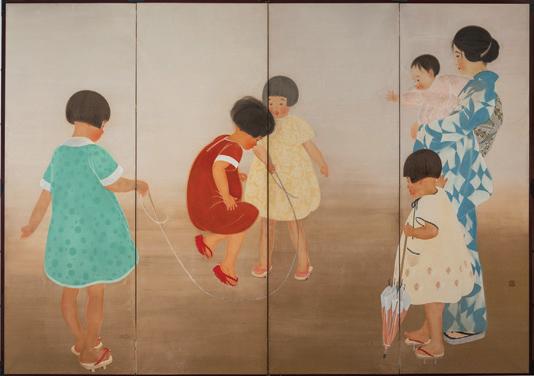

As a child I hated subtitles. The words constantly multiplying and changing on the bottom of TV screens distracted me from the scenes in shows and movies. Sometimes the white words overlaid on a black background moved at a quicker pace than what the characters onscreen were actually saying and spoiled what was to come. I’d rather the educators who screened educational specials at school turn the boxy 90s televisions o altogether. Obviously, a distaste for captions spoke to my privilege as a nondisabled child who had an option to dislike them in the fi rst place. But surprisingly, subtitles have grown on me as an adult. As a lover of many things Black, I love watching fi lms created in other countries like Nigeria, South Africa, and even France (shout-out to Netflix’s Lupin). As my fi lm and TV palate has expanded, I’ve learned of the innate multiculturalism of most Black folks in the African Diaspora (not just in America) that translates onscreen. It is quite common for scenes in these fi lms to have characters who converse in Pidgin English (a mix of a local language and a version of English) or two other languages separate from English altogether. As much as body language is also a very communicative tool, missing even a few words can shift an understanding of what’s happening in a story. Subtitles help put the pieces of these conversations together.
Subtitles are also quite useful for those of us looking to become more confident in speaking another language. I am years from my high school days of studying French and even further from my days learning Spanish in grammar and middle school. Immersing myself in non-American entertainment has renewed my interest in remembering and enhancing my French-speaking skills; it’s also made me want to learn local languages like Bantu people’s Lingala, which isn’t as readily available to learn unless you are in community with Congolese or other Bantu people. Those once-pestering words on the bottom of television screens I now see as an opportunity to refresh and expand my communication.
As beneficial as they may be, subtitles have their faults. Late last year, conversations around Netflix’s Squid Game, one of the streaming service’s most viewed series, brought to light how poor transcriptions in the show completely shift the understanding non-Korean speakers likely have of the storyline. As a native English speaker, it’s a question I often ponder: Are the subtitles presented accurately capturing what’s being communicated onscreen? Still, I’d argue that turning on your subtitles here and there is a great start to expanding your knowledge of other parts of the world. v @janayagr

 By ALEJANDRO HERNANDEZ
Photos by THOUGHTPOET
By ALEJANDRO HERNANDEZ
Photos by THOUGHTPOET
The late, great Tupac Shakur once wrote a poem about a rose that grew from a crack in the concrete. The anomaly of a gorgeous flower growing amid adverse conditions serves as a metaphor for individuals from under-resourced neighborhoods who rise above systemic challenges in order to contribute something beautiful to the world. If there’s anyone in Chicago today who embodies the spirit of a rose growing from concrete, it’s Englewood rapper Heavy Crownz.
The self-proclaimed “63rd Representer” cultivates an organic aesthetic in his music as well as his personal life. He says his purpose is to be a force for positive change, describing
himself as a combination of the rappers Common, Gucci Mane, and Curren$y. The lead single for his newest album, Whole Lotta Seedz, is the appropriately titled “Grow Sumn.” Over a soulful sample and drum loop, he pushes listeners to grow from the things that are holding them back in life.
“My whole brand is agriculturally based. I like to use beats as a landscape to plant seeds,” Crownz says. “With it being called Whole Lotta Seedz, it’s just me keeping people up to date with all the things that I’ve grown through with experiences on my journey through self-growth and reflecting on my upbringing. . . . There’s a lot of places that I put energy into and not look for anything back.
So a lot of places I’ve served and put time into, I can see the fruits of my labor. It’s like been a whole lot of seeds.”
He credits his a nity toward this organic lifestyle to his spiritual beliefs. After reading a book about the power of grace by evangelist pastor Joseph Prince in 2020, Crownz says a switch flipped for him to develop a Christ-conscious approach by extending grace to himself and others. He isn’t just planting figurative seeds in the ears of music listeners, though. After teaching both elementary and high school students on the south and west sides, he currently serves as youth program manager for Imagine Englewood If (IEI), a holistic nonprofit orga-
nization that provides mentorship and food sustainability programs for the community. One of his goals with IEI this year is to put his hands literally in the dirt with community gardening projects that will give residents living in food deserts more healthy options.
“I’ve been blessed to plant seeds of positive intention in those areas,” Crownz says. “I was born and raised in Englewood, 63rd and Parnell. I grew up with a lot of the pioneers of the drill scene and know them on a fi rst-name basis. It was always important for me, once that the scene took o , that that was not the only narrative imagined by residents. Before I even knew of the proper terminology of labels, I always was moving with a loving energy amongst all the di erent chaotic things that was going on in Englewood.”
One of IEI’s upcoming projects is a Unity Day on May 14, when residents and other organizations are invited to help clean up 100 blocks, beautify the organization’s peace campus at 64th and Honore, and come to a community cookout after. Following in the footsteps of his favorite rapper and community activist, Common, Heavy Crownz says he is geared to continue being a vessel for peace and positivity, whether it be creating new music or strengthening bonds with the people he serves.
“I’m proud of going into this purely and organically. I’m making sure that my life reflects my music and my music reflects my life. I’ve been blessed to see a lot of dope momentum grow in the last two years,” he says.
“As I grow, I gotta give myself grace. A plant don’t really stress when they grow, they just grow. The rain come in the air and they grow. The sunlight come, they add to it and they grow. They just stay present. We gonna grow regardless, bro, so let me love on you. And let me love on myself while we at it.” v
With all those liquids descending from the eye, Edging towards the tear of the sky, Recording those modes of ruckus, From the elevator to the staircase, The smell of waste traces the dirt on the mold, At every angle, the isolated block is a common project, So We honed its dis-symmetry Rolled up the dice on the face of doom Cooked up gumbo before the funeral Grilled those migratory phantoms to juke And fed our spirits some soul, In order to Raise our kids on a home On top of another home, In those black skyscrapers Where we wondered on its beat with cheap ragged clothes and torn up soles, Inside the seat of the feet running here and there Our New Orleans heat sizzled up and down Sedgwick Street Going nowhere but anywhere around the block of our Chicago heart.
Sol Cabrini (she/her) is a poet, academic, and mixed media artist born and raised in Chicago. She is currently pursuing a PhD at Performance Studies NYU.
Poem curated by Jada-Amina. Jada-Amina is a South Side Chicago born and based, Black Indigenous American singer, writer, and cultural worker.
A biweekly series curated by the Chicago Reader and sponsored by the Poetry Foundation.







Wednesday, Friday, and Saturday: 11:00 AM– 4:00 PM Thursday: 11:00 AM–8:00 PM


Open Door: J K Chukwu, Momo-dono, GoldGrrl & Alia Shahzad
Highlighting outstanding Midwest writers and poetic partnerships
Thursday, May 12, 2022, 7:00 PM
Little poetry lovers are front and center at this celebration with a reading, cartonera-making, and poetry scavenger hunt
Saturday, May 14, 2022, 1:00–4:00 PM
*Please note that the Poetry Foundation building will only be open to adults accompanying children for this event.
An exhibition of visual poems that leverage the visual language of astronomy.
Learn more at PoetryFoundation.org
Ele Matelan didn’t plan on making a career out of sound effects.
Like a lot of Chicago theater artists, she moved here after college (at Southern Methodist University) to pursue acting. She also did some stage management for her SMU pals who had formed the House Theatre of Chicago in 2001.
But one winter night in 2005, Matelan found herself in the audience at what was then called American Theater Company for

their production of Jordan Harrison’s sci-fi / noir comedy Kid-Simple . Subtitled A Radio Play in the Flesh, the show used live sound effects created and performed by Scotty Iseri— and it foreshadowed and inspired Matelan’s current work as a foley artist (or, as she sometimes puts it, a “sonic storyteller”). If you’ve ever seen a live radio play, such as American Blues Theater’s It’s a Wonderful Life: Live in Chicago! , then you’ve seen foley artists in action onstage. They’re not hidden behind
the curtain. As Matelan points out during our Zoom interview, “Foley is performance.”
“A lot of people that do what I do now, they grew up listening to Prairie Home Companion and Lights Out and pretty much anything that radio theater has had to offer for the past century. But that wasn’t really part of my upbringing,” says Matelan. “My major association with radio theater onstage to date had been seeing it parodied on sitcoms. So I had seen that episode of Punky Brewster where
they do a radio play.
“But [Kid-Simple] was the fi rst time I had ever seen a sound-arts practitioner working without the luxury of a jump cut. Like, he was super present in all of the scenes. His physicality was really paying a lot of attention to what was going on with the other characters onstage. He was also making sure that he was revealing props in a way that helped sell the story as well.”
Matelan’s association with House also helped give her a sense for what foley could do. As another early inspiration, she cites the theater’s 2004 production of Stephen Taylor’s prehistoric tale Cave With Man, where sound designer Michael Griggs used live practical sound e ects. “That’s when I saw a little bit of this kind of instrumentation,” she says. “It was a very traditional percussiveheavy sound design.”
Matelan reaches back and pulls out a rasp. “That was probably my fi rst time seeing one of these in action.” She runs a small stick over the rasp as a demonstration. “In the context of the story, as needed, someone might consider this to be a cricket or a frog. I’ve used it for the sound of a baseball as well,” she says, punctuating herself by rapping the side of the rasp to create a sharp “pop” that does indeed sound like a bat making contact with the ball.
After that night at Kid-Simple, Matelan was entirely sold on the art of foley. But getting practical training was another matter. She notes that her theater education generally didn’t emphasize technical elements, so when it came to learning how to be a foley artist, she did it hands-on and in the field.
“The way I looked into it was by being friends with a lot of folks at Strawdog [Theatre],” she says. “Around the same time, some of them were starting Wildclaw Theatre. That was my fi rst real exposure to getting to do this kind of work. The people that worked at or were company members at Strawdog that also went on and founded Wildclaw had been very active in Strawdog’s late-night radio-play series, which was originally supposed to be like a writing initiative for their ensemble members, so they could get more writing and producing experience. And it was cheaper, generally, to do radio plays than to fully stage and block and produce plays. And so that became like a real common prac-
tice for them. And then Wildclaw sort of stole that idea.”
Wildclaw’s focus on horror lends itself to the use of foley. And live sound is well suited to classic radio drama and comedy, of course—Matelan also works with Locked Into Vacancy, a company that specializes in the latter. “The things that foley is uniquely suited for, I’d say, are the iconic and the fantastic,” Matelan says. “So basically everything.”
Matelan isn’t just jazzed about sonic storytelling. She’s also eager for people to know the history behind foley. The name comes from Jack Foley, a sound designer for Universal who helped negotiate the transition from silent fi lms to sound, particularly with the 1929 release of Show Boat —the studio added synced dialogue and songs to the fi lm after the success of the 1927 Al Jolson vehicle The Jazz Singer raised the stakes. “Sound fi lm stole a lot of techniques from radio,” Matelan observes. “And radio stole all these techniques from the silent-fi lm houses that would have percussionists playing in the house with them, as well as from vaudeville.” To underline her point, Matelan pulls out—what else?—a slapstick.
“One of my favorite historical stories is about thunder,” Matelan says. “There’s this playwright named John Dennis who was active back in the 1700s. And he had this play, Appius and Virginia, and it tanked. But what was successful out of this was the way that he created the sound of thunder by using a thin metal sheet that would get rattled backstage. Before that, a rumble cart was a more common way to go, which was just a big cart fi lled with rocks that the stagehands would roll backstage. That’s a pain in the neck. Who wants to do that? So thunder sheet. Pretty cool!
“A few months later, the same theater was remounting a production of Macbeth , because that was a big cash grab, and they were using the same technique that John Dennis used in Appius and Virginia . That’s where we get the expression ‘You’re stealing my thunder.’”
Matelan explores the possibilities of creating sound almost everywhere she goes. During our interview, she shows me a pair of plastic pastel unicorns she got at Party City—when she squeezes them, they squeak,
and she notes that they sound remarkably like seagulls. In a 2019 talk for students in Northwestern’s sound arts and industries program, Matelan ran through some of her other favorites, including chamois, a soft and porous leather that she calls “one of the most reliable sources for gross. A soaked chamois can give you vomit sounds or squishy gore sounds, depending on how you squish, squeeze, or flop it. Dry and pulled taut, it can also make awesome heartbeats.”

“Found objects are the things that I enjoy incorporating into designs onstage as much as possible,” Matelan says. “Because anything that the audience has some sort of recognizable relationship with already? It feels like a gift for them, like it’s tickling the same part of the brain that likes wordplay. It’s putting something familiar into a new context.”
During the COVID shutdown, Matelan found herself increasingly busy with online radio plays, often via Zoom, and she also works in studios for film productions from time to time. But she maintains that there’s nothing like making sounds in real time in front of an audience, where she’s every bit as important to the ensemble as the rest of the actors.


“I absolutely use a lot of the physical training that I remember from college,” Matelan says. “And to incorporate what I’m doing onstage, there are elements of puppetry that come into play, when you’re acting as a physical extension of voice characters. Also the way that you’re throwing focus to the voice actors when you’re not engaged is also really integral to the way that I try to choreograph things.”
Matelan’s career has given her a fresh appreciation for sound in everyday life too, and as her seagull unicorns demonstrate, she seeks out unexpected sources. “I pay a lot more attention to things,” she says. “Just the possibility that a sound could be found somewhere, and that it might be interesting and compelling. It might not necessarily be something that I’m looking for for a specific gig I have going on at any given time. It might just be like, ‘Oh, I’m glad that exists.’" v
@kerryreidNorthwestern audiologist Jasleen Singh uses a prestigious new grant to research how self-fitted over-the-counter hearing aids might connect more people with care.
 By JAMIE LUDWIG
By JAMIE LUDWIG
When the average person develops vision trouble, they might just pick up a pair of reasonably priced reading glasses at a neighborhood pharmacy. If they require a more customized solution, they could stop by an eyewear retailer to book a professional eye exam and walk away with prescription glasses that same day. But what if they notice problems with their hearing?
Hearing health care is apparently a low priority for our society, even though conservative estimates put the number of Americans living with hearing loss at 30 million. Most insurance plans (including the majority of Medicare plans) won’t touch it. Unlike eye care, oral care, and even foot care, it hasn’t spawned its own retail industry—perhaps because hearing health care has a harder time driving the consumer market with a
cosmetic angle. That’s left people in the early stages of hearing loss with few choices outside of doctors’ visits (which can be inconvenient and expensive) and hearing aids (which cost hundreds or even thousands of dollars per pair). Plus there’s the social stigma associated with hearing loss, which discourages many from seeking help. Eighty-six percent of adults over 50 living with hearing loss don’t wear hearing aids at all.
Jasleen Singh aims to change that. She’s a clinical audiologist and postdoctoral fellow at Northwestern University’s Auditory Research Laboratory, and she was recently awarded the $75,000 Birtman Grant from the American Hearing Research Foundation. Over-the-counter hearing aids are on the horizon, and this grant will allow her to study the way attitudes about hearing loss and hearing health care change when patients consider an over-the-counter model of hearing-aid distribution, as compared to the current doctor-driven model.
While gearing up to launch her research project, a Chicago-area study that will focus especially on underserved and marginalized populations, Singh took the time to speak to the Reader about her work.
Jamie Ludwig: Can you please share a little bit about your background and what drew you to audiology?
Jasleen Singh: I got my AuD from Syracuse University. During my clinical rotations I saw that there was this fundamental need of improving access to hearing health care, specifically in populations that typically are underrepresented. This inspired me into looking into how I could contribute to that type of literature or evidence-based best practice. I decided to pursue my PhD as well at SU, specifically with Dr. Karen Doherty, who has done a lot of work with hearing aids, and I did my dissertation with respect to over-the-counter hearing aids.
To give you some background as to what’s happening in our field: in 2017, the President’s Council of Advisors on Science and Technology recognized that there was this huge limitation, or lack of uptake, in hearing aids, which is super concerning. There was a paper in the Lancet , which talked about hearing loss being the largest modifiable risk against dementia. What that essentially means is, of all the factors that we have control of in our environmental space, unaided hearing loss is neglected, even though it’s the third most common chronic health condition in the U.S.
So there was this very deep discussion as to,

“Why do adults with specifically age-related hearing loss choose to forgo treatment?” To drop another statistic, among people who could benefit from a hearing aid, only about 15 to 20 percent uptake them, and one of the biggest barriers to access is cost. So there was this huge push to see if we could create a new model of health-care deliveries, specifically with over-the-counter hearing aids. That’s where my dissertation came into play, looking at the feasibility of this model in terms of whether or not we’re actually targeting the issue at hand. And that’s where [this idea] came about in terms of my general interest in audiology, and what led me to pursue it a little bit further at Northwestern, which is where I’m currently doing my postdoc.
Is the Auditory Research Lab at Northwestern known specifically for its work on hearing aids?
Dr. Sumit Dhar is the principal investigator of the Auditory Research Lab at Northwestern University. They’re doing a lot of work looking at how we can optimize hearing health care. There’s currently a multisite study that’s looking at the feasibility of the over-the-counter hearing-aid model, specifically when it pertains to actually self-fitting your own hearing aid—the actual process of having the devices in your hand and manipulating them yourself to see whether or not you can get sustainable outcomes.
Why is it that hearing aids are not currently covered by most insurance companies? You can find visual aids in any drugstore, but in terms of the retail market, hearing devices have been so far behind.
In the recent Medicare revamping under Joe Biden, there was a discussion of getting hearing aids covered under Medicare. Unfortunately that hasn’t come to fruition, although I agree that they should be covered by insurance, at least to some degree. It’s unfortunate that our health-care system hasn’t caught up to speed with other analogous fields. I think a lot of it comes down to just the sheer number of people who would require it.
What holds people back from dealing with their hearing loss?
The literature has shown that the number one predictor of hearing-aid uptake is someone’s perceived handicap from their hearing loss.
Hearing loss is so invisible that it takes almost ten years for somebody to notice a change in their hearing. So even though there are gradual age-related changes that might begin in your 40s or 50s, it’s not until later in life when you actually say, “There’s something going on with my hearing, and I would like to do something about it.” At first it’s not being able to recognize it, and then it’s whether or not your hearing loss is causing enough of an issue in your day-to-day activities where you feel like you need to address it.
Outside of that, there are also general stigmas related to hearing aids. I think a lot of people associate having a hearing aid with being old. Unfortunately, the perception that hearing loss is a part of the natural aging process feeds into the idea of pushing off getting hearing aids. Now there’s considerable research that suggests that people who get hearing aids earlier on in their progression tend to do better with them. It’s interesting that there’s all this push for starting earlier in your life, while there are multiple barriers that are preventing people from getting them.
Do you think movies like CODA or Sound of Metal, or American Girl releasing a doll with a cochlear implant, are helping to change the stigma? Have younger generations started to change their minds about hearing loss compared to older generations, or are they at least talking about it more?
I think the discussion around hearing loss—in terms of a lot of the culture platforms—is at least bringing some sort of awareness to the idea of taking care of your hearing. There still needs to be a lot more research to determine whether or not they are making measurable strides as to what people perceive about hearing aids in general, but I’m optimistic that it’s encouraging people to think about their hearing in a more targeted and calculated way.
More and more, our smartphones are actually able to give us much more information about the levels of what we’re setting our headphones to. There are sound-level-meter apps. There are a lot more tangible tools for the individual that can allow them to start thinking about their hearing more seriously.
You start to think about how many people in our city spend so much time playing music or going to concerts, or who work in a field like construction or aviation where there’s a lot of noise. Are younger people
When it comes to violence, formerly incarcerated individuals are subject-matter experts. Violence has a ected our lives on every level, whether we created it or whether we were the victim. Violence is as old as America, and it’s unfortunate that it disproportionately impacts the most disinvested communities.
Violence is a community problem. To me, that means it’s all state sponsored, whether it’s stu that happens in communities or through policy and legislation. It’s centered around a lack of resources and opportunities that allow communities to thrive, behold, and be a part of the American experience. Those things help create and produce violence by extension, because their systemic nature is never addressed. Slavery was never addressed. Then sharecropping, then redlining, then gentrification.
We live in a state where more than 1.5 million people have been convicted of a felony [according to Illinois Criminal Justice Information Authority (ICJAI)]. Most eventually return to the community where they were arrested. If we as ex-cons create opportunities to reduce recidivism, that is a benefit to society.
ECCSC does behavior modification and social justice work that changes the way that those returning think about gangs, drugs, and violence. We represent experience and expertise on how to prevent more at-risk youth from going to prison. With our connections, resources, and partnerships, we’re able to link formerly incarcerated persons to labor opportunities and training that can help them become tax-paying, law-abiding citizens. That’s the definition of public safety: We’re no longer shooting and killing one another. We’re no
longer robbing and stealing. Now we have an income, and a di erent mindset of what community and being a good citizen looks like.
Ex-cons are the most permanently underclass and discriminated against group in this country. So we’re always looking for partners that will say, “You’ve served your debt to society. Now it’s our time to give you an opportunity to provide for the common good.”
We have manhood and mentoring services, we’ve got a trauma-informed prevention program, and we have [our support group program] Phoenix—rising from the ashes to success. Everyone can use support, and ex-cons need support groups more than anyone so that we can encourage them to stay on the right path, not to reo end, and to build networks of trust. Now we’ve become a fulcrum to help them see that change is possible.

Ex-cons are subject matter experts, so I don’t know why we’re not called to the table more to help society with these issues; it’s unfortunate that society doesn’t figure out ways to better use our talents and gifts.

for Community and Social Change (ECCSC): Providing innovative violence prevention, intervention programs, and resourcesTyrone F. Muhammad, founder of ECCSC, as told to Jamie Ludwig Tyrone F. Muhammad is an entrepreneur, author, and activist. A er serving 20 years in the Illinois Department of Corrections, he founded Ex-Cons for Community and Social Change (ECCSC) in 2017. The organization is dedicated to preventing violence and reducing recidivism through job training, mentoring services, and building community networks for formerly incarcerated individuals as well as local youth. ECCSC’s Support Your Local Weedman initiative provides professional development opportunities in CBD production and sales to those hurt by anti-drug laws. This summer, SYLW will open a storefront in Washington Park.
just not conscious of the risks of losing your hearing and the associated potential health consequences over time?
Unfortunately, hearing health care does not get a lot of advertising attention. In general, my guess would be that most people are not aware of what they’re doing and how that can cause issues to the integrity of their auditory system. I’m just happy to keep pushing out that message as much as I can.
You mentioned that preventative care can do a lot to prevent this degradation over time. What are some positive steps that people can take?
Genetics play a big role in whether or not hearing loss is going to be something that you experience at some point in your life. But hearing protection is the number one way to prevent noise-induced hearing loss. Noise-induced hearing loss is super challenging, because of the way that it a ects our auditory system. It specifically impacts the frequencies that are related to speech, specifically consonants, and how we’re able to have intelligibility when it comes to conversations.
So noise exposure specifically impacts our ability to understand conversations over time. You talked about wearing hearing protection regularly, and specifically in situations like concerts, but even going to a restaurant or a bar that’s noisy can cause potential damage in the long run. So just be more cognizant of the areas that you’re going to be, and whether or not you need to bring your plugs along with you.
With this grant, do you have a specific plan in mind for conducting your research, or what the scope is going to look like?
A very important part of my research is looking at the psychology behind using hearing aids as a potential treatment. The plan is currently to use an already FDA-approved self-fitted hearing aid. There are companies which have already started the process of developing technology that is completely consumer driven, so it’s all controlled through a smartphone app—you’re able to do a hearing test, which then provides a prescription. Typically when you purchase hearing aids, you go to a professional who then fits the hearing aid using a specific hearing test, so it’s much more involved.
I’m basically trying to see whether or not this new model of hearing health-care delivery reduces some of the barriers, in terms of being able to actually physically handle the device yourself and program the device yourself. More importantly, are you able to reduce your level of hearing handicap if you have concerns with your hearing? So that’s kinda more the general scope or objective, and one of the major things that we’re also trying to do is to target communities that are typically underserved.
Right. If you don’t have a smartphone, how can you use these new technologies?
Exactly. There is considerable research to suggest that individuals in lower SES [socioeconomic status] populations uptake hearing aids at a lower rate. So we’re also trying to figure out information related to what cost is actually appropriate for somebody who is living paycheck to paycheck. We don’t want to be providing these solutions and have them be sold at a thousand dollars, or any price point that may not actually be attainable for somebody who doesn’t have a lot of disposable income. Plus the smartphone.
We’re trying to work with more community
partners and see what their feedback is on this specific model of health care, and see if it’s something that’s actually going to address what it intended.
Is the study limited to people in the Chicagoland area, or is it a national study?
This is seed funding, so we’re limited to the Chicago area just primarily because of dollars—we can only go so far when it comes to the implementation. We’re still in the process of trying to partner with specific community centers to see whether or not this is something that can be integrated into specific community health centers. So that’s TBD at this point, but I’m really hoping for some more exposure, to see if people would like to get involved. We are hoping for about 90 participants, so it’s a pretty decent-size group. Typically when we do hearing-aid studies, the populations tend to be very small, but we’re hoping to get a pretty su cient sample size.
The specific AHRF grant is intended to kinda wrap out in about a year’s time. Like I mentioned before, it’s seed funding, so the idea is to get you started with an idea and see whether or not it can be scalable. The other study that I mentioned that our lab is doing runs
until the end of next year, so, OK. We do have several projects people can absolutely get involved in with respect to OTC hearing aids.
What’s the clincher that really gets people from saying “I should do something about my hearing” to actively pursuing it?
I think the bare minimum that somebody should do is just get a baseline hearing test. When you think about vision, everyone’s had an eye test at some point, just to ensure that things are working the way they should. That way, if anything does change, you have a reference of what your baseline is. So if somebody is trying to be more proactive about their hearing, that is a great first step.
Then based on the results—of course there’s never any pressure to consider a hearing aid—we typically recommend following up with a hearing test every three to five years. That’s a very low investment. And typically Medicare does cover the cost of a hearing test. So I think that’s a really good first step: being able to know about what your hearing system is doing, and whether or not there’s anything you could do presently to help you.
If you’re a musician, definitely get your hearing checked as soon as you start playing your instruments. But if you’re concerned more about age-related hearing loss, I think your early 50s is a good time to get started on that.

It’s exciting to think about how this research could really change lives. In a generation it might just be common sense that if you need to get a hearing aid, you just stop at the Walgreens on your way home.
Hopefully that will be the norm. For a lot of clinicians, OTC hearing aids are thought of as your entryway into hearing health care. So let’s say you’re not ready for a full-fledged hearing aid, where you have to go into specific appointments—this could be a great primer to get you to think about your hearing. And it’s a low-investment primer, which is super important. Then if your problems continue and you need much more involved health care, you can go to an audiologist or a hearing healthcare professional who can guide you through the process with much more pointed advice. It’s better to start early, so I do see a lot of potential for this market. We just have to make sure that people are set up for success. v
Chicago’s silent film accompanists deliver the music.
By KATHLEEN SACHSSeveral decades after the metamorphic transition from silent to sound, a 1981 article in the New York Times observed that “a live musician is rarely seen at a movie except as a member of the audience.”
That’s not untrue with regards to one Dennis Scott, who can often be found sitting in the fi rst few rows of the main room at the historic Music Box Theatre. But unlike other audience members, he’s enjoying the movie after playing in between showtimes on the majestic theater organ affixed to the left of the screen, a sonic behemoth that for many is now an essential fi xture of the experience.
The aforementioned Times article was about the dearth of live silent film accompaniment, a tradition lost to its heyday but which has since enjoyed periods of revival in limited exhibition venues. Scott has been the Music Box Theatre’s house organist since 1992; in 2011 he started a monthly silent cinema series that continues to this day.

“It was the music,” he says of his deep affection for the pastime. “I always just loved the music, and I loved the sound of a theater organ.”
Scott is one of several musicians in and around Chicago for whom live silent fi lm ac-
companiment is a regular gig. Another in this cadre is Dave Drazin, who accompanies on the piano and has done so at the Gene Siskel Film Center for nearly 40 years, a job he landed quite fortuitously.
“They were showing something—I don’t know what—but I just walked in, and there was a piano on the side. I asked the house manager if it would be alright if I played the piano for the movie, and he said he would ask the director. He came back and said OK. So I just played, and then the director said, ‘We need a guy like you.’”
A longtime hot jazz aficionado who studied music in college, Drazin has often utilized his predilection for extemporization, improvising scores on the spot. Jay Warren, president and cofounder of the Silent Film Society of Chicago, takes another tack, the traditional photoplay organist instead referring to his accompaniment as a “compiled score.”
Warren relies on themes for di erent parts of the fi lm, a tactic imparted by his “uno cial mentor” Gaylord Carter, a renowned organist, fi lm accompanist, and composer who is credited with having helped revive public interest in silent cinema, leading to its initial renaissance.
“One thing we [learned] is not to overplay
the fi lm,” says Warren. “You want to be the background. You want to embrace the film; we don’t want to be the star of the show. You should forget about us.”
For Scott, who for many years worked in advertising and PR and thus knows how to captivate an audience, authenticity is key. He prides both himself and the theater on maintaining high standards of exhibition that honor the nuances of silent cinema.
“In this part of the country, [we do] the most authentic presentation of silent fi lms, because we can do 35-millimeter. We can also do variable-speed 35-millimeter, which very, very few places can do. If a fi lm is shot at 20 frames per second, we can show it at that speed.”
He’s especially proud of the organ itself, which he and his husband spent three and a half years restoring. Soundwise it’s digital, with all the e ects viewers would have heard back in the 1920s; the console, however, is from 1929, like the Music Box itself.
Scott, Drazin, and Warren are the most prolific working accompanists in Chicago, whose names you expect to see connected with a silent film screening; however, they aren’t the only ones.
For example, Chicago-based musician
Maxx McGathey has recently composed and performed original live scores for Robert Wiene’s 1924 film The Hands of Orlac and Alfred Hitchcock’s The Lodger (1927). A few weekends ago, internationally celebrated musicians Min Xiao-Fen and Rez Abbasi accompanied the 1934 Chinese silent feature The Goddess for an event copresented by the Silent Film Society of Chicago at the Reva and David Logan Center for the Arts.
Comfort Film, a program of Logan Square’s Comfort Station, o ers a yearly Silent Film and Loud Music series. Past pairings include Wiene’s The Cabinet of Dr. Caligari (1920), with music from Kassi Cork, Vince McAley, and Anthony Forgrase; F.W. Murnau’s Faust (1926), with music performed by Mexican rock band Los Black Dogs; and Oscar Micheaux’s 1920 fi lm Within Our Gates, accompanied by Paul Giallorenzo and Ben LaMar Gay.
“[It’s] a way to expose our younger audience to these classic films.” says Comfort Film programmer Raul Benitez. The limitations are none; participants are given free rein both in selecting the fi lm and devising their accompaniment. “Every screening is a surprise,” he says. “We even had a band edit a fi lm.”
Keyboardist Kassi Cork doesn’t consider herself especially well versed in silent cinema, but she was nevertheless drawn to the prospect. “There is a history of music performance, primarily organ and piano, for silent film accompaniment that has always intrigued me as a pianist,” she says. “I grew up in a town that still had an organist play before movie showings, and there has always been something magical about that.”
Though new to it, Cork’s process in imagining an accompaniment is similar to that of seasoned practitioners. “While watching the fi lm I create an outline of the overall plot, including mood and ideas it might give me.”
As far and wide as silent fi lm accompaniment reaches in Chicago, spanning melodies from the silent era to music not yet even conceived during that time, there’s one thing these musicians have in common: the fi lm is the thing, the guiding force behind what they do.
“People ask me if I look at the screen,” remarks Scott. “I say, I always look at the screen, that’s more or less my sheet music.” v

Films that omit music and sound can be transformative, instructive, and all the more beautiful.
By JOSHUA MINSOO KIMIn 1928, directors Sergei Eisenstein, Vsevolod Pudovkin, and Grigori Alexandrov began a collective statement with a declaration: “Our cherished dreams of a sound cinema are being realized.” It was a transitional period for the medium, as feature films had recently incorporated synchronized audio, and the year prior saw the first part-talkie in Alan Crosland’s The Jazz Singer. Their excitement, however, was tempered. “Sound is a double-edged invention,” they suggested, wary of how straightforward implementations could “destroy the culture of montage.” Only the most thoughtful would ensure these new technologies led to innovation, and this radical change for fi lm would be, as we now know, a permanent one. This evolution was something they may have seen as inevitable, as they noted that “the whole world now speaks of the ‘silent’ that has found its voice.”
The “voice” that those Soviet fi lmmakers referred to was, of course, actual voices or sounds. But there’s an unintentionally profound statement there regarding silence as having its full potential unlocked, that there exist far more possibilities for silence than we recognize. I’ve spent much of my life thinking about this and, as with most, it began with John Cage. While the American composer wrote a lot on sound and silence, the passage of time has reduced his words to basic ideas stemming from his most famous work, 4’33” (1952): There’s no such thing as true silence, the “extramusical” sounds we
hear outside of a performance should be appreciated as music, silence should be considered as a true compositional and structural element, and so on.
These are perspective-shifting truths, and they certainly transformed how I engage with the world through my sense of hearing, but the music that has followed in the decades since has proven itself less revelatory than it initially appeared. Artists who are (self-)described as “post-Cage” are, in fact, regurgitating his ideas in slightly di erent contexts, and the results are largely inconsequential. Really, it’s works outside of this highbrow tradition of classical music (ironically referred to as “new music”) that surprise me most. One example: the 1970 LP
The Best of Marcel Marceao, a long-form gag showcasing the greatest hits of a mime. Each side features 19 minutes of silence followed by a minute of uproarious applause. It’s funny in a way that most serious music isn’t.
Different contexts allow for different understandings of silence. Especially after I experienced the highs and lows of quiet teaching in a high school classroom, I came to understand silence as instructive through the arts, and mostly appreciate it nowadays when watching avant-garde fi lms. When you watch a silent experimental fi lm, there’s no room for music to dictate anything. Consider the real miracle of sound as an artistic medium: it can be engaged with in a multitude of ways, but importantly, it’s one of few that people regularly interact with passively—
think of white noise machines you keep on when sleeping or any music you comfortably leave playing in the background. What’s not considered in our passive engagement with music is that its inherent rhythms are so impactful that they can readily overwhelm fi lmic ones, which is why it’s such a travesty that countless avant-garde films are ruined by poor considerations of audio. Beyond the mere content of the music being dull, it’s how it usually functions: at their worst, experimental fi lms utilize sound as a cheap mood enhancer. Through an inability to trust the images to evoke emotions and ideas on their own, directors use music as a way to fi ll in cognitive blanks. These artists don’t trust the audience, or even themselves.
This is why the most spellbinding avant-garde fi lms often transcend the need for sound. Stan Brakhage, of course, is one of the most important in this regard. He understood how silence forced an acute awareness of his images: “I feel they need a silent attention,” he once said of his works. Indeed, in Window Water Baby Moving (1959), sheer joy and love are on full display as he captures his then-wife giving birth, and any emotions would’ve been stymied if audio was provided. Through extreme close-ups, rotations of his camera, and dazzling reflections of light on water, he constantly maneuvers in a tight interzone between visual abstraction and clarity. What occurs is a continual refocusing on these bodies, as if he’s reminding you that, yes, what you’re witnessing is actually
extraordinary. More than anything, silence prevents what we’re seeing from diminishing into banalities.
One real power of silence comes in allowing films to be appreciated at their basest levels. It’s so often that it can lead to greater appreciation for light. There’s Brakhage’s own A Child’s Garden and the Serious Sea (1991), which transforms light-reflecting seafoam into mystical colors, or Jerome Hiler’s Words of Mercury (2011), whose glimmering blues and yellows conjure up a sense of the fantastical. In Nathaniel Dorsky’s Threnody (2004), silence allows for a consideration of the contrast in rhythms we encounter in our everyday lives, be it the fading of light on specific textiles, the sway of flora in the wind, or the stillness of a cloudy evening sky. Silence, as people may understand it via meditation, is a way to be more attuned to the world around us.
Even filmmakers who’ve explored sound throughout their careers often find their creative peak when employing silence. Take Bastian Clevé, whose works have been soundtracked by legends such as Eberhard Weber, NEU!, and Klaus Schulze. His silent short fi lm Tollhaus (1979) has rapid cuts that create such an irresistibly frenetic rhythm that every juxtaposition feels like a chance to see every image anew. Such edits would be far less disorienting with a soundtrack, as it would render the footage more seamless via music’s ability to establish an overarching atmosphere.
In the context of fi lm, silence helps us appreciate the beauty and gift that is our sense of sight. We need to understand silence as infi nite in its capabilities, that there may never be a point at which it fully “finds its voice” or stops teaching us. Just as there exists a difference between hearing and listening, there is a huge gulf between merely looking and intently watching. Silence, when used e ectively, ushers us into the latter. v
“Candyman. Candyman. Candyman. Candyman. Candyman.” The repetition is a summoning spell which repeats the past in the present. Horror is a sound you can’t stop saying.
Bernard Rose’s 1992 film Candyman repeats its summoning spell as an echo that turns words into sounds and back again. Set around the Chicago housing project of Cabrini-Green, the movie features protagonist Helen Lyle (Virginia Madsen), a white anthropologist studying urban legends. She becomes fascinated by the story of Candyman, a Black artist in the 1890s who painted the picture of a white woman, fell in love with her, and was duly murdered. His hand was cut o and replaced with a hook and his genitals
smeared with honey and exposed to bees.
Candyman supposedly haunts Cabrini-Green, which stands on the ground where he was killed. If you look in a mirror and say “Candyman” five times, he appears, whispering loving, terrifying promises. “I am the writing on the wall, the whisper in the classroom.” Tony Todd’s incredibly sensuous voice drips with honey and blood. To say his name is to summon forth a sweetness of sound and terror; the pain, as he says, is “exquisite.”
Philip Glass’s soundtrack for piano, pipe organ, and chorus mirrors the repetition in the summoning spell. His iconic minimalist iteration, sketching the same fi gure over and over like images in glass, forms a backdrop for the boxes of Cabrini-Green, stark identical apartments and identical apartments
stacked. Glass’s insistent, stark hum collapses, at key moments, into the white noise buzz of massed bees, the carefully ordered divisions of space and sound pressed together into a single trauma crawling on the rib cage, an iron hook dragged through a honeycomb.
The most famous theme from the film is “Music Box,” in which Glass’s characteristic repetition mirrors the tinkling loop of a child’s toy. “Music Box” is introduced early in the fi lm; it’s the background music for one of Helen’s interviews, in which an informant tells her the story of Candyman.
Per the informant, a woman was babysitting when a lover came over. The babysitter tells him the story of Candyman, the story in the story culminating in the repetition of the name and the wet sounds of death.
Glass’s music is a theme for the baby. But its maddening loop is also an auditory mirror of the loop of story which is also the loop of history. The past is a story repeating in the present. Horror is a sound you can’t stop saying.
Nia DaCosta’s 2021 Candyman sequel/ reboot is scored by Robert Aiki Aubrey Lowe. His incidental music is influenced by Glass, holding up a kind of buzzing electric mirror to Glass’s crystalline compositions.
Lowe does reproduce one piece from the original score, though. Glass’s “Music Box” theme is used in a scene that reprises and retells the events of the previous fi lm.
In a flashback sequence told through artist Kara Walker’s eerie shadow-puppet cutouts, we see Helen Lyle start to investigate Candyman and then go insane. She makes snow angels of blood and throws a child into a fi re. Glass’s music tinkles and chimes as the words grind on, echoing the horror story campfi re tale of the fi rst movie. The story the shadow puppets tell here is garbled, though; in the “real” events of the fi rst movie, Candyman, not Helen, was the murderer, and the baby lived. To reflect this, Lowe adds ambient hiss and echo. The music box fades toward white noise buzz, space and sound collapsing into a single trauma, a bloody hook dragged through a honeycomb.
The “Music Box” theme has a fi nal, clearer rendering at the end credits of the 2021 fi lm. By this point we’ve walked again through the razed, gentrified landscape of Cabrini-Green. The baby rescued in Candyman , artist Anthony McCoy (Yahya Abdul-Mateen II), has become ensnared in the story, learning to his sorrow that Candyman isn’t one ghost, but a genre, or a hive. A Black man who moves into a house in the wrong neighborhood; a Black boy executed for a crime he didn’t commit; a Black man accused of putting razor blades in candy—they all die and are born again as a story of death. Racist violence repeats in a predictable path, like a bee following a scent trail.
Kara Walker’s puppets reprise each story in a ritual of dark and light as the music box repeats its unending theme. The movie is the music is a sound is a story is a word. Candyman. Candyman. Candyman. Candyman. Candyman. Horror is a sound you can’t stop saying. v













If
ATTENTION ALL HCV PROGRAM PARTICIPANTS, PUBLIC HOUSING RESIDENTS, & RAD PBV RESIDENTS
listed Lawndale Complex or the Lawndale Community Area on your Housing Choice Survey as a place you would like to permanently live, please read the information listed below.
Proposed Updates to the Housing Choice Voucher (HCV) Administrative (Admin) Plan, Admissions and Continued Occupancy Policy (ACOP), & Lease

The Chicago Housing Authority (CHA) is releasing proposed updates to the FY2022 HCV Admin Plan, ACOP & Lease for public comment.

The 30-day public comment period begins April 29 and ends May 31, 2022. While CHA encourages and welcomes all program participants, residents, and the community-at-large to review the proposed updates to the FY2022 HCV Admin Plan, ACOP & Lease you are not required to attend the public comment hearings in order to submit comments. Your presence or absence at the hearing does not a ect your housing.
The Draft Tenant Selection Plan (TSP) and Lease for Ogden Commons, a mixed-income community is available for review. The Chicago Housing Authority (CHA) has worked with its development partner to develop a Draft TSP and Lease for use at the private development known as Ogden Commons (previous site of the Lawndale Complex). The units within this development will be used as replacement public housing units for Lawndale Complex and the Lawndale Community area. If you listed Lawndale Complex/Lawndale Community area on your Housing Choice Survey as a place you want to live or maintain a right to return to new CHA replacement housing per the Relocation Rights Contract (RRC), you can comment on the Draft TSP and Lease during the 30-day public comment period.
The 30-day public comment period will be held for CHA to receive written comments starting April 7 through May 7, 2021. The Tenant Selection Plans (TSP) will be available on CHA’s website beginning April 7, 2021.
CHA will host two public comment hearings, livestream, and in-person: Wed, May 11, 2022 at 6:00 pm, FIC 4859 S Wabash (Sign and Spanish interpreters will be present.) and Mon, May 16, 2022 at 11:00 am, https://youtu.be/PgGi1HWFytM or go to www.thecha.org click HCV-ACOP Public Hearing button (A recording of the livestream session will be available following the hearing. Sign and Spanish interpreters will be present.)


Due to COVID-19, CHA has suspended all in person public meetings and instead, CHA will livestream one public comment hearing. The date and time of the public comment livestream hearing is as follows:
Tue, April 20, 10:00am: https://youtu.be/QBGG47BHXMg
We ask that comments pertaining to the HCV Admin Plan, ACOP & Lease be submitted electronically to commentontheplan@thecha.org prior to the livestream session or submitted in the chat during the livestream. All comments will be added to the comment grid and receive a response during the livestream and/or in writing in the comment grid.

We ask that comments pertaining to the TSP & Lease be submitted electronically to commentontheplan@thecha.org at least 48-hours prior to the comment hearing. Comments will be read live during the time outlined above. Comments received after the hearing will be added to the comment grid.
A summary and the full Proposed FY2022 HCV Admin Plan, ACOP & Lease will be available on CHA’s website at www.thecha.org April 29. You may also mail or fax comments for the Proposed FY2022 HCV Admin Plan, ACOP & Lease. All comments must be postmarked and received by May 31, 2022.
If you require translation services, please read the attached notice or check with your property manager for more details. Do not mail comments to CHA.
Mail, E-mail or Fax comments to: Chicago Housing Authority

E-mail or Fax comments to: commentontheplan@thecha.org Fax 312. 913.7837

Attention: Proposed FY2022 HCV Admin Plan, ACOP & Lease 60 E. Van Buren Street, 12th Floor Chicago, IL 60605
Email: commentontheplan@thecha.org | Fax: 312. 913.7837
Ifyouhaveaquestionaboutthisnotice,pleasecalltheCHAat312.913-7300.
If you have a question about this notice, please call 312.913-7300. To request a reasonable accommodation, please call 312.913.7062.
Torequestareasonableaccommodation,pleasecall312.913.7062.
TTY 866.331.3603
TTY 866.331.3603


Through 5/27: Thu-Sat, 3-7 PM, Arts Incubator, 301 E. Garfield, 773 702 9724, artsandpubliclife.org and relicexhibit.info
In the summer of 2020, the people of Chicago rose up in support of Black life, with thousands taking part in dozens of actions across the city. That season of uprisings had curator and cultural producer Ciera Alyse McKissick thinking about Black people moving through space: about how Black migration and travel has been a portal into the future, and about how cultural artifacts record history. She wondered what legacy Black people wanted to leave behind, what stories they wanted to tell. Her thinking evolved into the curation of the compelling, concise group exhibition, “Relic,” on view until May 27 at the Arts Incubator gallery, part of the University of Chicago’s Arts and Public Life initiative.
Inspired in part by Alisha Wormsley’s traveling billboard project, There Are Black People in the Future, “Relic” includes tender depictions of Black cultural artifacts and asks how those objects might inform the years to come. The exhibition marks a new era in McKissick’s practice, an era that allows for slower movement, deeper research, and a politics of
care. “Relic” is the main curatorial project for McKissick this year—a marked di erence from her usual pace. In 2021 she curated six exhibitions and additional work for the Terrain Biennial, took part in two art fairs, curated film screenings, organized virtual artists talks and an album release, held a two-day food and arts festival, and hosted a pop-up event. This was all undertaken as part of her independent curatorial work as well as her work for AMFM, an online arts magazine-turned-brand that McKissick founded in 2009. All this on top of her day job as public programs manager for the Hyde Park Art Center, a position that she has held part-time alongside other jobs for pay until this January, when HPAC made her a full-time employee.
“The pandemic really opened up my eyes to the way that I was working before. I was very busy, it felt like I was flipping shows a lot, putting one up and taking one down. I didn’t have enough time to process what I was really doing, and be able to sit with and let the things meander in my body,” she says. “I hope to
make that a deeper part of how I continue to work. It’s important to be able to really hone in on a theme or subject matter. How can I engage the public and make this information digestible for everyone to be able to take in? I think arts oftentimes can be really inaccessible or people don’t feel comfortable in those spaces. And I don’t ever want people to feel that way.”
McKissick, 34, was raised in Milwaukee. As long as she can remember, she has been interested in writing and in the arts. Her parents enrolled her in an arts elementary school. She took dance and art classes, played multiple instruments, and did stage crew in theater productions.
As a kid, she made magazines out of notebooks, writing quizzes and even assigning articles to her friends. Her father took her to gallery nights. In middle school, she hated the drab vibe of her school library, so she convinced the principal to let her redesign it, putting together a team of classmates to pick paint colors and decide what books to feature.
She grew up watching films on IFC and the Sundance channel with the help of her family’s black box cable; in high school she wrote a screenplay, carrying around a camcorder and making friends audition. She initially wanted to study film in college—she attended the University of Wisconsin at Madison—but settled on journalism, which felt more practical. At Wisconsin, she wrote for the school newspaper and music magazine, where she covered local acts but also big names like Beyoncé and Kanye West. “I got really disillusioned with writing about these people who were already famous,” she says. “I knew so many artists in my community, who were making amazing stu , and I was just like, you should be the one who’s getting these stories. I have so much faith in people and think that they could be famous someday or be really successful. I wanted to be a part of telling those kinds of stories.”
In her senior year, she created a web magazine as part of an independent study. AMFM, which stands for Arts Music Fashion Magazine, had a section devoted to each category, for which McKissick wrote the articles and designed a pink cassette tape to enhance the branding. She got an A on the magazine, though she didn’t initially envision it as a long-term project.
But AMFM stayed on her mind. When she moved to Sacramento after graduating, she put together an issue focused on the arts scene of the city. After more than two years there, she moved home to be closer to family, and got a job working on a large-scale campaign trying to change discourse around the LGBTQ+ community. “That’s honestly where I learned a lot about how to do those large-scale events, and how to organize something from the ground up,” she says.
She put out another, Milwaukee-focused issue of AMFM, and organized a few cultural events around town, but she was thinking bigger. McKissick’s mother, Cameo Anderson, says her daughter has never been the type to sit still. “She always had grandiose plans,” Anderson says. “She always wanted big things and Milwaukee was not the place.”
In 2013 she moved to Chicago. “I was only supposed to stay for a year,” McKissick says. “But I fell in love with the arts and the community of the city. Here I am nine years later.”
She became enmeshed in the arts scene,

going to open mikes and meeting people. “AMFM kind of resurrected,” she says. When she first put together art shows, she realized she wanted something more engaging to happen in the space than just wine and cheese. She started a jazz series, working with Cultura in Pilsen until the space was shut down, and held other pop-up events. While in residency at Chicago Art Department, she had carte blanche over their two galleries for programming.
“I was like, everyone should be able to have the opportunity to do this,” she says. “I wanted to be able to lay the groundwork for people to incubate, come up with ideas, and flip the space as they saw fit, as I was able to do at Chicago Art Department.”
McKissick launched a GoFundMe to come up with enough start-up money to rent a space of her own, and opened AMFM gallery in Pilsen in 2016. “It was really born out of me going to all of these di erent types of spaces that I would pop up at and then there was so much overhead,” she says. “I wasn’t able to have as much autonomy over things, and I wanted to have more power over my vision.”
At first it was a live/work space, with McKissick living behind the storefront gallery. “That was a wild ride, my cat was at the gallery for a while,” she says. After moving out, she turned the room into a music production studio. There was also a gallery, studio space for artists, and a small shop, all in about 1,000 square feet. “It was a labor of love,” McKissick says, adding that friends helped paint murals inside and build out the space.
Over the roughly two years it was open, AMFM gallery hosted ten resident artists and held over 200 events. Erin LeAnn Mitchell was one of the resident artists. She was initially connected with McKissick through a mutual friend who correctly guessed they’d get along. “I think we have similar ambitions and drive,” Mitchell says.
Having a studio at AMFM was a game changer for Mitchell at that point in her career. She was in an arts education graduate program, but really wanted a place to make work. At AMFM, Mitchell created a body of work called Black Sauce, which she showed in the gallery. “That show, having that space, I feel like it really catapulted me into the place where I’m at right now, where I’m working mainly as an artist.”
But in 2018, McKissick made the difficult call to close the space. “We were actually doing well, which I think was also a part of the problem,” she says. Because the gallery was
in a residential neighborhood, on 21st Street, some neighbors had been complaining to the landlord about AMFM’s events, which were typically held Thursday through Sunday. McKissick also experienced anti-Blackness in the neighborhood. One person threw a brick through the gallery’s window. Others would throw gang signs at patrons outside the space. The police were called when someone alleged that a prostitution ring was operating out of the space.
Though McKissick said she tried to be welcoming to the neighborhood, inviting folks to events and encouraging guests to patronize local businesses, it ultimately became too much. “It got to the point where I felt like I was walking on eggshells,” she says. Her closing announcement garnered dozens of supportive comments on Facebook.
“I was really vague about it when we closed,” she says. “Honestly I was really hurt by it. I had quit my marketing job to put my all into the space. I felt like it was just ripped from us.”
McKissick stresses that she doesn’t want to paint Pilsen in a negative light. “It was unfortunate, but in retrospect, after thinking through what it means to activate a neighborhood and go within a space, I would definitely do a lot more research, listening to see what the community would want out of a space in their neighborhood,” she says. “As I think about a future space, I’m actively thinking through where I’m celebrated, rather than just kind of tolerated.”
One of the seeds that led to “Relic” was a three-in-one bronze comb created by Haitian American artist Abigail Lucien. An object of cultural significance for Black folks, elevated by its material. It was useful but also beautiful, and it was something that a Black audience would understand innately. Three works by Lucien are in the show: two wall-hung sculptural pieces and a gorgeous video, A Softening, which shows the artist embracing a large chunk of shea butter.
Another inspirational seed was LaKela Brown’s sculptural reliefs, which feature plaster imprints of door-knocker earrings and chain necklaces. They recall ancient artifacts imprinted in clay, or fossilized remains. Two of Brown’s plaster earring reliefs are included in the exhibition, with layered compositions and heart-shaped or geometric imprints, some painted gold.
Upon entering the gallery, the viewer is confronted by a standalone wall, papered with gold, screen-printed ledgers from the
Freedmen’s Bureau, documenting the lives of some of the nation’s first Black entrepreneurs. The entries contain the person’s biographical information, as well as their last wishes. In an essay for the exhibition, McKissick writes that the centerpiece references the fact that “Black people’s labor created the economy of the country,” with the illegibility of the handwritten pages “representing the barriers of entry Black entrepreneurs faced—and still do.”
“It’s honestly a show for Black people,” McKissick says. “In the sense that, just like that comb, if you don’t know then you don’t understand. It’s been a beautiful testament to Black culture in time and space. Thinking about the future of it all like, what is going to be left behind of us here? The things we see in the media are so sensationalized. It’s trauma porn and I don’t like to engage with things in that way. I’m trying to think beyond that. We don’t talk about the history that happened before slavery. I’m thinking about: what kind of stories do we wish to tell or what do we wish to leave behind? I posed that question to all six of the artists and they met with me those objects in the show.”
After almost a decade of producing events in Chicago, McKissick has thought a lot about what she wants AMFM, and her own practice, to look like. She recently registered AMFM as an LLC and wrote a three-year strategic plan for the business.
Some of that looks like slowing down, having more of a research-based curatorial practice. “Relic” was a two-year process, which allowed McKissick time to think deeply about the work. Along with the essay, McKissick built a website that features related work, including music and video, to expand the exhibition’s reach beyond those who can physically visit the gallery. She’s also put together robust programming, including virtual artist talks and a manifestation session with artist Rhonda Wheatley. A closing session on May 27 will feature a dance performance and a DJ set by Sadie Woods.
“Relic” has also served as a lesson in what it feels like to work with more resources. Arts and Public Life provided both curatorial and artist stipends, though more often curators and cultural producers are on their own when it comes to funding. “I find that, especially as a curator, there haven’t been many opportunities in the past to receive grants,” McKissick says. “I know that some of that is shifting now, especially after the pandemic, because people think about arts workers and creatives in a di erent capacity.”
She still gets comments from people who miss AMFM’s gallery. “It really felt like home,” Mitchell says. McKissick hopes to open up her own space again in the future. She envisions an institutional space, with room for performance, studios, and opportunities for mentorship and artist services. “I’m thinking a lot about the south side and the lack of studio space,” she says.
With fewer DIY or artist-run cultural spaces, people go to institutions instead, many of which have increased their opportunities for BIPOC artists following 2020’s calls for racial equity. “People are really catching on that POC and artists are the gatekeepers of culture,” she says. When BIPOC artists work with whiteled institutions, it benefits the institution. “I would love for them to be able to uplift something that directly impacts the artists more. That’s my hope, to create that institution specifically for them.”
With McKissick’s drive, there’s little doubt she’ll realize these goals in due time. Her mother says that she’s always been fearless: “She just has this like, ‘I’m not gonna wait for somebody to tell me to do it.’ And that’s with everything.”
It’s important to McKissick to maintain relationships with all the artists she’s worked with, connecting folks with opportunities when she can. “We’ve gotten to this point in our relationship where I fully am trustful of Ciera,” Mitchell says. “Ciera is someone who will have my best interests at heart. It’s really good to have someone on your side like that. That looks out for you when you’re not around and speaks your name in rooms that you’re not in.”
The description of AMFM on its website really sums up McKissick’s whole approach: “AMFM is a brand for artists and the people.” She wants her work to uplift artists and the community in an approachable, accessible way. “I don’t want to perform,” she says. “My work is authentic. I try to always meet people where they’re at and have conversations on their own level. I think that’s a testament to why I’ve been able to do the work that I’ve been able to do here in Chicago for so long, and why I was welcomed in so openly. There’s a certain level of trust that you have to build with people and with artists. I think that that’s something that’s really, really important, especially when you’re dealing with something as sensitive as telling people’s stories and their truths.” v




 By TARYN ALLEN
RTRUE BIZ BY SARA NOVIĆ
By TARYN ALLEN
RTRUE BIZ BY SARA NOVIĆ




Hardcover, 388 pp., $28, Random House, penguinrandomhouse.com




Biz
“Body Language,” a page full of illustrated instructions for signs like “naked,” “flirt,” and a range of other (dirtier) sexual words and actions, perhaps from Austin Workman-Bayard, Charlie’s mentor at school, whose family have been Deaf for generations. We also learn from Charlie herself, who encounters new concepts in the Deaf world and subsequently looks up Wikipedia pages such as “Black American Sign Language (BASL).” My personal favorites are her awestruck observations of her Deaf friends: Charlie marvels at their ability to ride the bus while signing with both hands, highly adept at balancing without holding on.
As Charlie gets more acclimated to River Valley, so too do we get acquainted with Charlie, her peers and family, and Deaf culture.










yeth—get it? In the Deaf storytelling tradition, utopia is called Eyeth because it’s a society that centers the eye, not the ear, like here on Earth.”
That’s the opener to “Ear vs. Eye: Deaf Mythology,” one of the many brief lessons sprinkled between the chapters of Sara Nović’s realistic fiction novel True Biz, released March 29 by Random House.

Charlie Serrano is a Deaf high school student in Ohio. Her cochlear implant has created language deprivation and family strife rather than improved hearing, but after her parents’ divorce, Charlie gets the opportunity to enroll in the fictional River Valley School for the Deaf, experiencing Deaf culture for the first time over the course of the book. Unfortunately, River Valley is at risk of losing its funding and shuttering.
The point of view switches in third person between Charlie and other main characters with each chapter, denoted by the ASL symbol for the first letter of their name, but even when readers can’t focus exclusively on her point of view, chapter-break lessons allow us to look over Charlie’s shoulder at her coursework or research.


“Eyeth may be a pun, but it’s not a joke—it’s a myth.”
This particular lesson—meant to reinforce that Deaf culture is a culture, as well as to provoke questions about accessibility and design-
ing a Deaf world—is one of many in Nović’s new book. They never feel dry or preachy, but I suppose I was primed to be interested from the get-go.

I’m hearing, but learning the basics of American Sign Language (ASL) was an early quarantine hobby for me, and around the same time, my TikTok algorithm steered me deep into DeafTok. My “For You” page was full of Deaf creators, a wonderful mix of mini ASL lessons, stories, skits and jokes, and more. As immersive as TikTok, YouTube, and other resources can feel, I knew my experience of Deaf culture was still very limited and very online.
When I read the synopsis of True Biz—which is an expression in ASL that means “real talk” or “seriously”—I snatched the book up, and I was delighted to see the illustrations and bitesize lessons as I flipped through the pages.

Since Nović herself is Deaf, it initially feels like these teachings, like the Deaf mythology page, come directly from her to the reader. But the further you get into True Biz, the more you can tell that the lessons are for Charlie, from the other characters that Nović brings to life.

We learn lessons like “Spelling Doesn’t Count,” on the American Sign Language (ASL) alphabet, and “Deaf President Now,” a history lesson about a student protest at Gallaudet University, from the syllabus of Dr. February Waters, a CODA (Child of Deaf Adults) and the headmistress at River Valley. We learn

Nović’s writing is smooth and easy, even while jumping between perspectives. She balances dialogue in ASL, spoken English, and over text, with italics and alignment indicating who’s communicating. It’s interesting to read Deaf characters written by a Deaf author, as the use of sound as a key sense and descriptor is altered, but it’s no disadvantage. A key theme is language/sound access, and in many cases, Nović only lets us know what Charlie knows, creating vulnerability and slowing the pace of many conversations. A frequent refrain is Charlie seeing or hearing only a long blank space, signing or saying, “What?”, and someone having to repeat themself or fingerspell.
Both in the chapter-break lessons and in the narrative sections, Nović manages to cover many intense topics without it feeling too jarring: bodily autonomy, Deaf “cures” and medical trauma, eugenics, anarchism, marital and family struggles, the cochlear implant debate, and more. In fact, Nović’s writing feels so steady that she never gives a true sense of urgency to even the most high-stakes parts of the plot, and the ending wasn’t as satisfying as I hoped. Still, True Biz is a page-turner, an intriguing character exploration, and an honest survey of the basics of Deafness.

It might be imperfect, but I finished the book ready to recommend it and full of renewed excitement for learning ASL, eager to consider how I too might work toward the ideals of Eyeth in my own everyday life. v


 @itstarynallen
@itstarynallen
True biz? There’s a lot to learn in this new book.
Compelling characters drive the plot, buoyed by Deaf culture lessons.The cover of True was designed by Elizabeth Rendfl eisch, using illustrations by Brittany Castle. COURTESY RANDOM HOUSE





















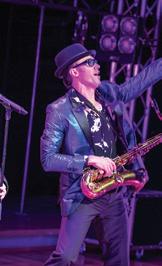



























































































-$ 88
But the production doesn’t quite take flight.
By KERRY REID“Here is a theater. No curtain, no wings, no scenery. Just an empty space.” Konstantin Treplev, the young and hungry artist manqué in Anton Chekhov’s Seagull, intones these words before the disastrous and abortive premiere of his play-within-the-play for his family. But at the Saturday opening of ensemble member Yasen Peyankov’s production at Steppenwolf, it sure felt like a clear-the-throat, point-to-the-roomaround-you moment.
The room in question is Steppenwolf’s new Ensemble Theater (officially, the Ensemble Theater in Honor of Helen Zell, because multimillion-dollar complexes require generous donors), and it happens to be in the round. So: No curtain. No wings. Pointedly, the benches onstage for Treplev’s family are first set up for a proscenium seating arrangement, then reconfigured for in the round. But there is scenery in Treplev’s play, where his beloved Nina is first raised up from the wooden floor on a circular platform, and then encased in a white lattice cagelike structure that descends from the ceiling.

It’s an odd moment, and one that encapsulates some of the incongruities in Peyankov’s staging. (He also translated and adapted the script; according to a program note from co-artistic directors Glenn Davis and Audrey Francis, he’s been working on it for 15 years.) Why would Treplev talk passionately about the importance of the empty stage, only to deploy mechanical contraptions? Is it to show us that he lacks the strength of his strongly worded convictions? Or is this staging choice to reassure the audience that semi-fancy stagecraft is still on tap in the new home? The former could be interesting to explore, but the latter gets in the way.
In truth, there’s often a sense in this play that Treplev (Namir Smallwood) rails about the importance of new forms as a way to take revenge on those he sees as artistic sellouts— namely his actress mother, Irina Arkadina (Lusia Strus), and her lover, the popular writer Boris Trigorin (Joey Slotnick). By contrast, Nina (Caroline Neff) sincerely idolizes both Arkadina and Trigorin. Not that it does her much good. Masha (Karen Rodriguez), the
daughter of the caretaker for the country estate where the action unfolds, carries a torch for Treplev, while the dull schoolteacher Semyon Medvedenko (Jon Hudson Odom) walks miles to court Masha despite her barely concealed contempt for him. Masha dresses all in black because she’s “in mourning for my life.” (Aren’t we all?)
This is a play where nobody’s fully satisfied, not even the seemingly self-satisfied Arkadina (played to the brassy hilt by Strus, making a welcome return to Chicago, where she cut her teeth with the Neo-Futurists and Peyankov’s European Repertory in the 1990s). The adaptation by Peyankov feels contemporary and sharp, with acidic to-the-gut lines that land when they need to. Neff is a cooler and steadier version of Nina than the fluttery naifs of other productions I’ve seen, where the impulse to play the doomed seabird of the title colors everything too soon. We can almost believe that Neff’s Nina, even with all her vulnerabilities, will somehow find a way to get by, even if it means selling out her own values. Or perhaps she always was more in love with
the possibilities of fame o ered by Arkadina and Trigorin’s careers than the reactive Angry Young Man posturing of Treplev.
Generational differences are present in the casting. Smallwood, Ne , and Rodriguez are newer members of the ensemble, and it’s a pleasure to see them in the company of cofounder Jeff Perry (who plays Sorin, Arkadina’s querulous brother and owner of the estate) and longtime ensemble member Eric Simonson, who plays country doctor Dorn, the one person who genuinely enjoys Treplev’s play. (Scott Jaeck takes over Perry’s role beginning May 24.)
But even with the intimacy a orded in the undeniably lovely and comfortable new theater, there is emotional distance in this show and a presentational quality to moments that should be as stripped-down and accessible as Peyankov’s text. Some of that is the nature of the (feathered?) beast with this play, which always lodges uneasily between tragedy and comedy—a state of a airs implied by the poster, featuring a cartoon bird with a toy gun at its head and a banner reading “BANG!!!” spilling out of the barrel. Everyone is slightly out of sync in the story, but that doesn’t mean that the actors should feel like they’re in di erent plays, which sometimes happens here.
I think it again goes back to our not having a clear idea of Treplev, who is the catalyst for much of what happens or doesn’t happen. He is beloved by Masha (and at least for a time, by Nina). His tragedy, perhaps, is that he cannot see the former at all and cannot see the latter for who she really is.
Smallwood’s Treplev nails the self-pity and inchoate rage inside. But if we don’t get a sense of the life and pleasure he derives from trying to create even his clumsy attempts at “new forms,” we’re left with a bit of a void, and Peyankov’s staging hasn’t given us that yet. He doesn’t seem to fully trust that we’ll be able to hold both sides of Treplev in our minds. In that way, the rising platform and descending cage in Treplev’s play are perhaps appropriate metaphors, after all. This is a Seagull striving to have it both ways: celebrating Steppenwolf’s past and pointing to its future, yet feeling a little trapped between the two. v
@kerryreid3121 N. Rockwell, 773 772 1771, visceraldance.com, $ 40 -$ 60

Visceral Dance Chicago revisits Nick Pupillo’s 2018 piece.
By IRENE HSIAOOn an industrial strip of Rockwell just o Elston, beyond a white door with numbers painted in red, past a makeshift bar, through a dark curtain lies a white brick room filled with smoke. Through the haze, folding chairs line each wall, leaving bare an expanse of concrete, above which soar long sheets of white fabric. Long prisms of light slice across the space, confining the darkness, opening angular apertures for action.
Every seat in the house has a front-row view of Visceral Dance Chicago’s TAKE, with choreography by founder and artistic director Nick Pupillo, lighting by David Goodman-Edberg, costumes by Moriah Turner, and sound design by Johnny Nevin.
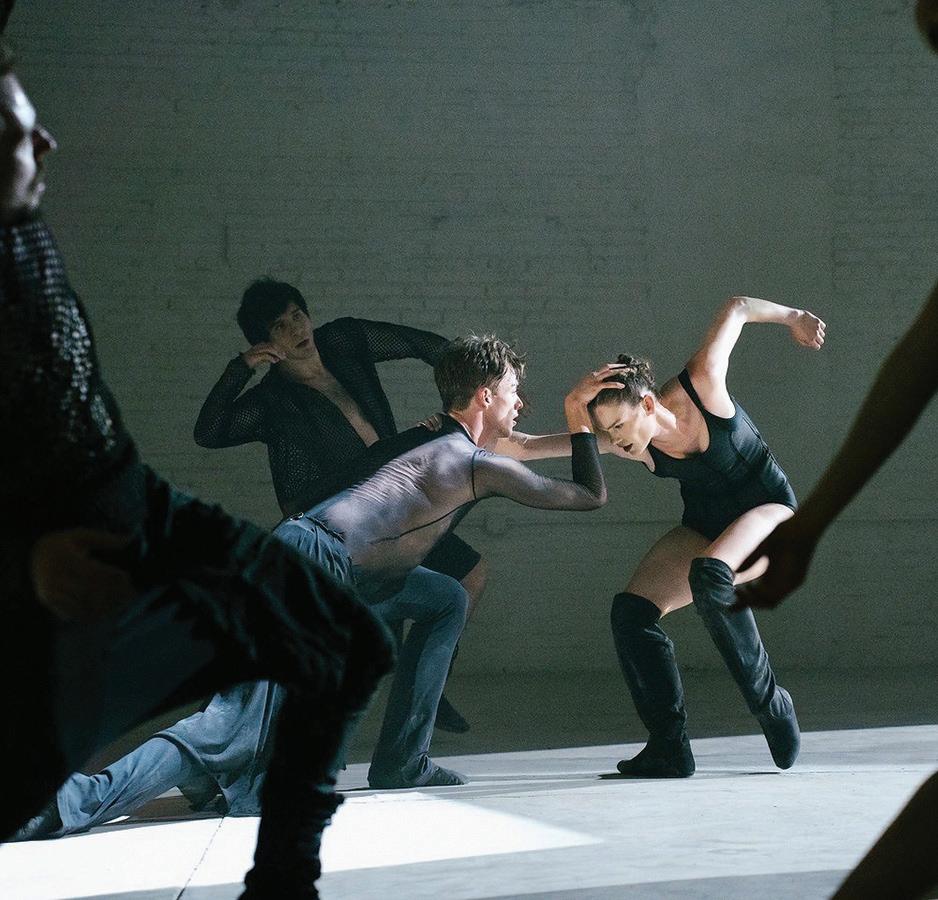
First to enter is Meredith Harrill, whose commanding presence focuses attention to the center of the space, then opens the floor for the rest to follow as if storming a runway, in costumes that are simultaneously futuristic and retro, Jean Paul Gaultier-meets-The-Matrix. The mood is aggressively energetic, the
movement throughout a dazzling display of flawless technique in episodes dramatically and spatially partitioned by shifts in the light.
The light drives the story: in a blistering solo, Andres Castillo Gomez is pulled by its
force—then, immediately following, Meagan Cubides is pushed in all directions by a bright beam wheeled around her and across the floor by Brandon Talbott. Duets and trios materialize within bright polygons defined by their
contrast with the darkness surrounding. From their geometric masses, Michelle Meltzer is lifted into the air and passed from hand to hand, peering down from the air like an exquisite extraterrestrial. The company clusters in a corner, shadows looming out the length of the long diagonal, throwing patterns far larger than humans can reach on the floor.
For all our proximity, the dancers stare stoically above our heads and hardly seem to make eye contact with each other; the e ect makes viewers into voyeurs, almost close enough to touch but never to really make contact. Until, abruptly, on a single count the focus shifts: the dancers gaze upon us, arms outstretched, commanding us from our chairs. We are drawn into the center of the space, then abandoned there for a serenade by a single string player, Nicole Watson, who paces through the maze of bodies playing a simple melody.
The dancers return, hoods pulled down over their eyes, marching like warriors to an unseen enemy. The hoods fall, exposing faces and trembling hands. Then, with the light, the space changes again, brightening and expanding to the walls beyond, upon which supported dancers delicately step, as if discovering a new gravity—and by extension the audience, which is now within the confines of this new border. We are invited to join them in a last joyous dance as white petals fall from above. v
It's more than birth control.
It's a way to feel more comfortable in your body and take control of your life.
There are options for every body.@IreneCHsiao
THE CHINESE LADY
Through 6/ 18 : Wed-Thu 7: 30 PM, Fri 8 PM, Sat 4 and 8 PM, Sun 2 PM; also Tue 6/ 14, 2 PM; no show Sat 5/ 14, 4 PM; distanced performances
Thu 5/ 19 and Tue 6/ 14; open captions Fri 6/ 10 and Sat 6/ 11, 4 PM; audio description Fri 6/ 17; Theater Wit, 1229 W. Belmont, 773 281 8463, timelinetheatre.com, $ 42-$ 57 (student discount 35 percent; military, first responders, veterans, and their families $25).
New Orleans, Boston—as well as to Cuba. Her feet were advertised and fetishized—a body part that symbolized a barbaric foreign custom to be feared and detested, as well as an erotic body modification. In Charleston, to her reported shame, her unbound feet were a spectacle presented to an ogling public; in Philadelphia, they were a medical curiosity examined by physicians.
The year was 1834. Indigenous communities were being displaced from their ancestral homelands on the forced march known as the Trail of Tears. Over two million people of African descent were enslaved. And America’s first model minority, Afong Moy, was imported to New York: a 14-year-old girl with bound feet, made to perform for the white public in a room decorated with teapots, vases, lanterns, paintings, and other goods put on display by her white owners to arouse white middle-class desire for exotic objects. This month and next, TimeLine Theatre closes its 25th anniversary season with the Chicago premiere of Lloyd Suh’s The Chinese Lady (2018), directed by Helen Young, with Mi Kang in the role of Afong Moy and Glenn Obrero as her translator, Atung. Slated for production since a TimeLine reading of the
play in January 2020, the story of the first documented Chinese woman in America has become painfully legible after two years of pandemic-exacerbated xenophobia, nationwide reflection on past and present racial inequities, and ongoing anti-Asian violence. In the recent past, the country has witnessed the shootings of eight people, including six Asian women, in Atlanta in March 2021, hate crimes against Asian elders across the country, and even a brutal attack on a dancer on his way to perform before the first preview of Ma-Yi Theater Company’s production of The Chinese Lady at the Public Theater in New York earlier this year. However, these incidents are not new—rather, they exhibit the same performance of fascination, derision, and obliteration enacted upon Afong Moy in the brevity of her known life.
“The history of Afong Moy was lost to us,” said Suh in an interview with TimeLine dramaturg Yiwen Wu. (Wu shared the full transcript with the Reader.) “She disappeared, she was forgotten, she was discarded . . . . Her absence is significant to our accounting of what it is to be human, to study history, [and] to examine history.”
Afong Moy was not her real name—nor was “Julia Foochee ching-chang king,” the name under which she was first advertised. Bought by traders Nathaniel and Frederick Carne, she was exhibited in fine clothing on an ornamental chair, sang songs in Chinese, demonstrated eating rice with chopsticks, and walked upon her four-inch feet—over and over again, for hours a day, before spectators who paid 25 cents to see her act. Though some Chinese men already lived and worked in America— and millions more would follow in the decades after to labor under inhumane conditions for inferior pay—Afong Moy was the first documented Chinese woman to come to America and, for thousands of white Americans, the first and only Asian person they would ever see.
No first-person account of her life remains, as Afong Moy could not read or write. Instead, we know of her today only through the eyes of others, in advertisements, in the newspaper, in journal entries, and in poems—all in English, a language she could not speak the first years of her life in America. One advertisement touts her “mild and engaging . . . manners” alongside her “ASTONISHING LITTLE FEET!” An 1834 writer raves about her “delicate figure” and calls her “a perfect little vixen.” Another describes her “quiet demeanor and imperturbable composure.” Another catalogues her anatomy, from her “high and protuberant” forehead, to her eyes “with the peculiar obliquity of the outer angle,” to her “yellow silk pantalets from beneath the ample folds of which peeped her tiny little feet.”
The Carne brothers toured Afong Moy across major cities of the United States: New York, New Haven, Philadelphia, Washington, Baltimore, Richmond, Norfolk, Charleston,
When economic downturn blunted the white middle-class appetite for foreign luxury products in 1837, the Carnes evidently abandoned Afong Moy. She survived several hard years, coinciding with the first Opium War, allegedly in a New Jersey poorhouse. During this time, Eurocentric attitudes shifted from admiration and desire for China’s advanced technologies, refined commodities, and exoticism into the perception of an alien and enemy other, fueled by drug addiction and skirmishes over territory created by Europeans using opium to dominate the global market.
Afong Moy returned to the stage in 1848 among a menagerie of freaks shepherded by P.T. Barnum, “the master marketer of difference.” By this time able to speak English, Afong Moy began to talk back to an increasingly jeering public. The circus cast her aside in 1850, in favor of a younger, more docile woman, Pwan Yee Koo, a new “Chinese Belle.” Afong Moy had by this time spent over half her life in America in servitude to a vision of China created by white men. No record of her remains beyond this time.
“Afong Moy was a real person,” says Young. “She was brought to America by two American merchants who were looking for a live demo doll of the products they were trying to sell—products that were not necessarily authentically Chinese, though they were made by Chinese artisans. I first looked at this as an opportunity to share a Chinese story. As I looked at it more and more it is not a Chinese story—it’s an American story.”
“The tricky thing about this play is, because it’s set in a time when Chineseness was appropriated, how are we going to represent these stories onstage without appearing as if we don’t know anything about China?” says Wu. “That friction was always there for us: Do we do what they were imagining China to be like? Or what the real China was like in the time?”
Yet China and narratives about China are impossibly intertwined with the white gaze, just as, in white America, all Asians look and therefore are “Chinese”: alien, foreign, feared, fetishized, feminized, elevated, cheapened, dismissed, discarded, overlooked, excluded,

presumed wealthy, bought for less, exploited, silenced, never enough, hypervisible, invisible—other.


“When other people use you as a way to look at themselves, your own reflection will become blurred and fractured. You may even start to hate that reflection. The image that Moy presented to white Americans about Chinese people (and by extension, all Asians) persists to this day: Quiet and submissive. Foreign and exotic. Dirty and diseased,” writes Diep Tran in an American Theatre article on The Chinese Lady. “Some of those stereotypes were unfairly placed upon Asian Americans. Other stereotypes were performed by Asian Americans as a means of survival.
“For so long, being Asian American meant privileging the American part of that descriptor, subsuming the Eastern parts of yourself for the Western parts, which were deemed superior. It meant separating yourself from your diasporic community, and their pressing concerns around poverty, incarceration, deportation, and healthcare, and entering the upper ladders of society, which were inevitably Western. You give away your community
to ascend, and then wonder why there isn’t anyone who looks like you when you get to the top.”
But as the only ethnicity that was deliberately prohibited by law from immigration to the United States by the Chinese Exclusion Act of 1882 (which was repealed in name in 1943 and in practice in 1965 with the elimination of quotas that limited Chinese immigrants to 105 visas annually); denied American citizenship until 1952; and is still omitted from most mainstream American narratives—including those on race—is it surprising that Asian Americans have internalized the message of exclusion to the point of diminishing and rejecting Asian and Asian American culture, in order to better perform the role of a proper “American”?
“It goes back to the exoticizing—it’s [white] society’s fault that Asian Americans feel they have to prove they’re American,” notes Wu, who is from Shanghai. “I was talking about the play in an Uber the other day. The driver was Chinese American. I was like, ‘Do you know how unusual it is to have an all-Asian cast?’ And he was like, ‘Girl, I think you’re doing a great job, but have you considered hiring a
white actor? That way more people will come to see your show!’”


“The view of Asian immigrants as ‘sojourners’ and European immigrants as ‘settlers’ is both a mistaken notion and a widely held myth,” writes Ronald Takaki in Strangers from a Different Shore . “Coming here from Asia, many of America’s immigrants found they were not allowed to feel at home in the United States and even their grandchildren and great-grandchildren still find they are not viewed and accepted as Americans.”
This sense of homelessness, of loss of place and identity, is the core and the vacancy of the Asian American experience, which recognizes its distance from its presumed homeland yet is not recognized in this one. “I was born in Hong Kong but came here when I was one,” says Young. “I always feel I’m less than Chinese. It would be better if I could say I lived in Hong Kong until I was 15 and can speak Mandarin perfectly, but here I am in America. I have this feeling of inferiority.”
To be less than is the only possible conclusion from a cultural standpoint that expects to see the vastness of China—or even of all
of Asia—contained and presented in a single human being. And to be less than is the only possible conclusion from a cultural standpoint that has reduced that vastness to bound feet, vases, chopsticks, and chop suey.
“What is happening is a performance. For my entire life is a performance. These words you hear are not my own. These clothes that I wear are not my own. This Room in which I am seated is intended to be representative of China, just as I am intended to be representative of The Chinese Lady: the first woman from the Orient to ever set foot in America, and yet this Room is unlike any room in China, and I am unlike any lady to ever live,” Afong Moy says in the first minutes of a play written by a contemporary Korean American man from Indianapolis.
“The characters should be played by Asian or Asian American performers,” writes Suh in his notes to the play. “They should speak in their natural and organic speaking voices . . . the characters should simply move the way the actors move.” v
@IreneCHsiaoDigging Up Dessa combines paleontology and personal loss.
Laura Schellhardt’s Digging Up Dessa was commissioned by the John F. Kennedy Center as part of its Theater for Young Audiences program in 2018. But this play, now in its Chicago premiere with Theatre Above the Law, is like a lot of great YA fiction—relevant to many audiences.
Dessa (Star Smith) is a young girl grieving the death of her father in a car accident, trying to fit into a new school in a new city, and engaging in dialogue with the spirit of 19th-century paleontologist Mary Anning (Stephanie Stockstill), whose pioneering fossil discoveries along England’s “Jurassic Coast” in Lyme Regis were given short shri in her own lifetime. Under protest, Dessa partners up with rich boy Nilo (Anders Danielson) on a science fair project inspired by Anning’s work (and the way it was ignored by the patriarchs of paleontology). Meantime, her musician mother, Esther (Melanie McNulty), struggles to connect with Dessa while writing jingles for a paper company.
In Tony Lawry’s staging, the story unfolds with engaging wit and poignancy. Digging up the past for Dessa doesn’t just mean restoring Anning to a place of honor on the wall of the local museum. It also means understanding the truth about her dead dad and the mother she blames. Stina Taylor’s set, with hand-drawn fossils on the floor and a curio cabinet reflecting objects of symbolic importance in the play, provides a spare but smart environment, and the cast delivers Schellhardt’s dialogue, which ranges from scientific disquisition to soul-searching grief, with simplicity and empathy.
KERRY REID DIGGING UP DESSA Through 5/22: FriSat 8 PM, Sun 3 PM; Theatre Above the Law, 1439 W. Jarvis, theatreatl.org, $20-$23.
The Luckiest gets a stellar production with Raven.
When everyone on the stage is excellent, it shows a director fully in command of the material. That’s the case with Cody Estle’s production of The Luckiest by Melissa Ross, receiving its Chicago premiere at the Raven Theatre. Plays about a young woman’s disability and impending death always risk straying into Love Story-style bathos, while pieces involving a straight woman and her gay male best friend can easily seem copied from Will & Grace But Ross, incredibly, has fresh takes to offer both on their relationship and on the health crisis which comes to dominate their lives, and she introduces Lissette’s lasagna-making mother into the mix without turning her and her Boston accent into a cliché of maternal overreach.
As Lissette, the over-the-top protagonist who contracts ALS in her 30s, Cassidy Slaughter-Mason brings just the right amount of manic energy to a role which could easily become grating. Similarly, Tara Mallen brings Lissette’s mother to life with such genuineness and humor that we can see both what Lissette has inherited and what she’s been desperate to escape. These two are ably supported by Christopher Wayland as Lissette’s best friend Peter. That makes his role sound smaller than it is—big moments are spread pretty evenly among the three of them, and their ensemble work is never anything less than generously collaborative—but what a pleasure it is to see a piece with women at the center and a man playing straight (so to speak). —KELLY
KLEIMAN THE LUCKIEST Through 6/19: Thu-Sat 7:30 PM, Sun 3 PM; open captions Sun 6/5; Raven Theatre, 6157 N. Clark, 773-338-2177, raventheatre.com, $40 (students/military/veterans $15).
Trap Door’s Medea Material evokes inchoate rage.
A wooden rowboat and plastic sheets lining two back walls are the only decorations for Sarah Tolan-Mee’s English-language adaptation of Heiner Müller’s 1982 cry-of-anguish riff on war, betrayal, and the messiness of identity. Using the Greek legends of Medea and Jason as a jumping-off point, this is a raging, poetic rant against tyranny and fate rather than any kind of coherent narrative. But I don’t mean that as a criticism. There was no way to deliver the inchoate rage so palpable throughout this brisk 70-minute piece in anything like a three-act structure. Instead, a half-dozen Medeas and several Jasons take turns reciting, dancing, and ritually enacting acts which will be familiar to theatergoers from the dawn of time. Departures, arrivals, violence, and couplings each get evoked repeatedly, with every performer adding their own wrinkle to what—in less capable or adventurous hands—might have been shopworn gestures.
This is a difficult play to write about because its effect is a mood or vibe rather than anything verbal. I wish I could just tell you to go and let it engulf you with no forethought, warning, or explanation. It does the thing art’s supposed to do—it shows rather than tells. Through the barest of means Trap Door manages to summon a massive, elemental vision. Just as the nine cast members seamlessly slide in and out of identities, foreground, and background, so that wooden boat serves variously as refuge, coffin, and shrine; the plastic sheets are sometimes water, other times a barrier between this world and other worlds. Under Max Truax’s able direction, this group of actors makes o en complicated feelings utterly palpable. I don’t know how
they did that and don’t want to ask, but I’m grateful to them for working their dark magic. —DMITRY SAMAROV MEDEA MATERIAL Through 6/4: Thu-Sat 8 PM, Sun 7 PM; Trap Door Theatre, 1655 W. Cortland, trapdoortheatre.com, $25 (2 for 1 Thu).
The Pavilion captures how “what if” rules our lives.
Like several post-pandemic shows in Chicago, the Artistic Home’s production of The Pavilion, written by Craig Wright and directed by Julian Hester, is about an intimate relationship between two people over time. It is also about the creation of the universe, being tethered to the past, and literally burning down sentimentality. High school sweethearts Peter (John Mossman) and Kari (Kristin Collins) reunite at their 20th reunion of the class of 1980. (Cue awesome 80s tunes.) Things didn’t end well, and Kari is not interested in letting go of her resentments. But neither is Peter able to let go of his notion of “what if . . . ” he and Kari had stayed together.
Mossman is perfectly stoic in exhibiting the male notion of a woman as a muse being able to singlehandedly “fix” his screwed-up life. Collins’s Kari on the other hand, while not entirely happy, has accepted her predicament. Todd Wojcik as Narrator shines in the best role of the show; dynamic and hilarious, he also gets to play every other reunion attendee in this small town, o en in rapid succession. While the story itself is not especially deep, it delves into perhaps one of the most important human quandaries: our connection to our past, how strongly we hold on to and revisit it, and how much we let it dictate our present lives. Hester succeeds in keeping the focus on the characters and their relationship to regret. Wright’s extremely well-written one-act creates an eminently engaging world that is a delight to experience.
—JOSH FLANDERS THE PAVILION Through 6/5: Thu-Sat 7:30 PM, Sun 3 PM; Den Theatre, 1331 N. Milwaukee, 773-697-3830, theartistichome.org, $35 (students/seniors $15). v

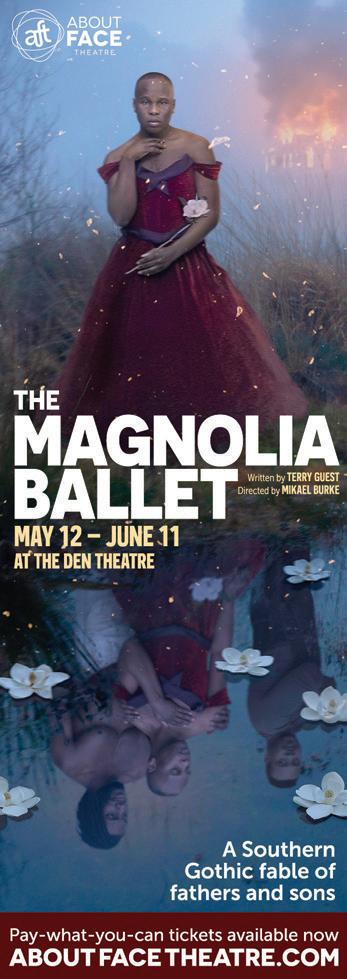
Anaïs in Love is as magnetic as its protagonist. From the start, Anaïs (Anaïs Demoustier) is messy, flitting from one stressful situation to the next. Except she does it with admirable ease, whether explaining to her landlord why she’s behind on her rent or arriving too late to a date with her boyfriend. By the time she awkwardly encounters the much older man she’ll embark on an affair with, Anaïs seems to be treading dangerously close to manic pixie dream girl territory. But filmmaker Charline Bourgeois-Tacquet never lets her get there. Instead, Bourgeois-Tacquet offers a much more charming character whose nuance becomes more apparent when she falls in love with Emilie (Valeria Bruni Tedeschi), whose husband is the aforementioned man. Again, she’s messy, but the film embraces that in a way that honors the character, giving her room to grow autonomously and with an authenticity viewers won’t be able to shake. —BECCA JAMES 98 min. Wide release on VOD


The past several years have been an ongoing study in prevailing disquietude—this is especially true of the current moment, when the rights of people who can get pregnant are all too easily threatened. As the saying goes, prohibiting abortion doesn’t stop people from doing it but rather makes it unsafe and potentially fatal. Audrey Diwan’s poignant adaptation of writer Annie Ernaux’s memoir about undergoing an illegal abortion as a 20-something woman in 1963, when abortion was still illegal in France, lends compelling imagery to this truism; the French director spares little in her harrowing depiction of a young woman’s quest to terminate her pregnancy. Anne (Anamaria Vartolomei) hails from a working-class village, where her parents (Sandrine Bonnaire is notable as her mother) own a bar and wish better for their gi ed daughter, who studies literature at a nearby university. Her future is jeopardized when she becomes pregnant; a disapproving doctor tricks her into taking medicine that only strengthens the embryo, and an attempt at aborting it herself proves futile. And that’s just the beginning. Anne contends not only with this physically torturous quagmire but also with suffering grades and isolation from her peers. Diwan charts her
journey to the eventual abortionist’s makeshi clinic with aplomb, depicting the lengths people will go to in order to exert bodily autonomy. The no-holds-barred approach to the procedure and its a ermath is the kind of interpretation of real life that great cinema does best; one can only hope such empathy translates offscreen as well. —KATHLEEN SACHS R, 100 min. Limited release in theaters

No amount of cowboy bravado could pump life into director Naveen Chathappuram’s debut film. On paper, The Last Victim should be a knockout Western thriller fueled by high-speed chases, gruesome shootouts, and comfortably familiar stoicism, but despite its promise, the film is a tangled mess of lukewarm plotlines that fails to captivate. Filled with uninspired performances and listless dialogues, it only presents a single absorbing mystery: “What just happened?”


For fans of classic Westerns, The Last Victim’s central plot is commonplace for the genre. The film follows small-town Sheriff Herman Hickey (Ron Perlman) as he tracks down a group of outlaws led by the stone-faced antagonist, Jake (Ralph Ineson), who is responsible for the senselessly heinous massacre that opens the film. This proverbial Western plot is complicated when a professor (Ali Larter) and her husband (Tahmoh Penikett) cross paths with the outlaw gang. Suddenly caught in Jake’s unintelligibly brutal rampage, the movie begins to feel like a pointless game of cat and mouse until this violent carousel of pursuits finally comes to a stop.

Tethered by the theme of revenge, this film attempts to expose the vulnerable underbelly of grief as the characters become enveloped by a horror-like game of survival. Instead, The Last Victim delivers a story with whiplash-inducing pacing and an ensemble of underdeveloped characters that will easily be forgotten. The film requires the audience to string together incoherent and fruitless plots that supposedly lead to the conclusion of some hidden motivation or mystery. This is simply asking too much. The movie holds some potential to foster a cult following, but overall, The Last Victim is a tepid action thriller that is carried almost exclusively by Perlman’s sonorous monologues, but even he seems bored. —MAXWELL RABB 103 min. Wide release in theaters and on VOD v

Eli Schmitt, 20, moved to Chicago a couple years ago to attend DePaul, where he studies journalism and art history. In that time he’s become a crucial connector in an emerging youth arts movement best known for its bands, which include Lifeguard, Post Office Winter, Friko, Dwaal Troupe, and Horsegirl. Schmitt wears a lot of hats in the scene. He plays the bands’ music on his Tuesday-night Radio DePaul show and books local DIY concerts. In his apartment, he shoots the live-performance YouTube series New Now and hosts an ongoing informal music-listening hangout he calls Record Club. Schmitt also documents the scene

via the zine Unresolved, whose third issue he expects to have printed by June 5—in time to sell it at Horsegirl’s Thalia Hall record-release show that night. Schmitt will be onstage too, playing drums for Post Office Winter.
Istarted out just doing a radio show through DePaul, Mother Night Radio Hour , in the fall of 2020. I’d always wanted to have a radio show, and so for a while that was the only thing that I was doing—until about a year ago, when I had the idea to do a “locals” episode of the radio show. I would play local musicians, and that got me in contact with a
lot of musicians, including Horsegirl. So now, along with the Mother Night Radio Hour, I do a program called New Now, where I record live bands from Chicago in my apartment. I originally wanted to do that in the DePaul studio, because they have nice equipment. They wouldn’t let me do that. They were just like, “Oh, you can do that over Zoom.” I was like, “That’s not happening, it would sound terrible.” I figured if no one else was gonna let me do it, I would just do it myself. I’ve been doing that since October. I also have a zine called Unresolved, which attempts to document the current art scene in Chica-
go—not just music but also visual art, poetry, photography, and people that I think are doing stu that’s forward-thinking.
I also drum for Post O ce Winter. I started doing that in January of this year. Before January, I’d never picked up drumsticks; they asked me to play with them. I said, “You know that I don’t know how to play drums, right?” They were like, “Yeah, but that would be awesome.” I started playing with them at the Beat Kitchen show, which was on February 27. I’m really excited to play at Thalia with them.
I paint. That was the first thing I really did. I enjoy experimenting with materials. Recently I’ve been working plaster and fruit—like, ground-up fruit—into pigment. I’m interested in maps and landscape. Saying all that out loud makes me think about how it seems like a common theme with my work and my artistic interests is documenting—things that are very fact-based. Maybe that stems from my majors—as, like, a journalism major, and my interest in art history, which is my minor at DePaul.
I grew up in Indianapolis, which wasn’t a city that had a lot of an arts scene that I was interested in. There was really nothing going on for kids. Indianapolis is a great city to be a little kid or to be an adult in. There’s no space for teenagers to go, because all the clubs are 21-plus, and there’s no real space for people to get together and grow a community. The only place that I found was Luna Music, which is a record shop near my house.
I started going there when I was 13, like, every weekend. I would just go hang out there on a Sunday afternoon. I ended up getting a job there when I was 16, and that was really a godsend for me. It was really a place that allowed me to explore all these interests in music. Just being around other—they were all 40 years old, all my coworkers, but they got it on a level that I felt like I could relate to, like, as an artistic individual.
I moved to Chicago in the fall of 2020. I didn’t know anyone, really—I think I knew three people here. I’ve always been someone who enjoys being by themselves, but it was hard to not have a community. I couldn’t really find that with people at DePaul, for the most
“Don’t let anyone else tell you, ‘It has to be this way, you have to follow these set of rules.’ Go out there, do it, and figure out the rest later.”

part. There weren’t people that inspired me and really pushed me. There were people that were “artsy,” in the common sense of the word, or “indie,” in the common sense of the word— where they dress that way, and they might like art. But there was something missing.

I was really lucky to find Horsegirl. I met them at an art show—they came up to me, and I was really nervous that they were there. I saw them come in, and I was like, “Oh my gosh, it’s Horsegirl, I’m gonna freak out.” I wanted to talk to them, and they ended up coming up and talking to me. They were like, “Hey, thank you so much for playing us on your radio show, it was really cool.”
We ended up talking about music for a while. By the end of the conversation—we talked for about an hour—I was like, “Hey, I had this idea for this thing called Record Club, would you be interested in coming?” They said they would love to come.

I have people over at my house every other Friday and just hang out and listen to records. It’s still going on today—it’s been one year of doing it. Record Club gave me that home. It gave me that space to create for myself and also for others, to be around like-minded people that had drive and were creative—but also very kind. It’s never been a very cliquey or pretentious space. I think that was, like, the clicking moment for me.
There’s an Instagram group chat, which everyone is in. I just text them, “Hey, there’s gonna be a meeting.” So people just come, and they bring records, and we just hang out for, like, six hours. And there isn’t really any structure, or things that we need to do, or things that we need to accomplish.
It’s not like a normal club. It’s more of, like, a very informal gathering. It doesn’t feel only important to me, but it feels so important to everyone else that’s a part of it. There’s people that you only know through the Record Club. . . . I’m getting used to opening my apartment to people that I don’t know at all. Like, sometimes people just show up, and I don’t really know who they are, but I always try to welcome them with open arms, because I know that they might be in the same position that I was in at one time.

I think it’s created something that feels important and lasting. And I know, just from experience, that things don’t last forever, in that the things that you create change and flow. I feel so thankful to be in the community, right here, right now, and it feels really right, and I never had that before. It makes me lucky, because so many other people in Record Club


never had that either. I feel like we’re all discovering this thing all at once. And especially it seems like there’s more momentum within the music scene in the last couple months, especially Horsegirl, Friko, Lifeguard, Post Office, Dwaal. It seems like there’s more momentum, and just more love, in the community.
I have this feeling that I always need to be doing something. I have a fear of wasting my time, and I feel like I always have so little time to do the things that I want to do, and so I need to just go out and do them. I’ve never been someone that procrastinates either, so I think that helps a lot—that I’m someone that feels very passionate about the things that I do, and I’m driven to do them, and feel like I have the energy to do them. I’m very dedicated to this idea of DIY, in that there’s no one else that can do it better than you for yourself. It’s like, “OK, we want to have a show. Let’s just do it ourselves—that way we have control over all the elements of it, and we don’t have to be reliant on other people that might not get what we want.”
I’m really inspired by so many other punk artists who’ve done the same thing. Like the Raincoats—the drummer, Palmolive, is a big inspiration for me, in that she’s a self-taught drummer and an artist. She didn’t really care about the traditional conventions of drumming or anything like that, and they just went out and did that. And I’m really inspired by bands like Fugazi, and the scene in Olympia in the 80s—like, with K Records, and how much they were like, “OK, we’re gonna do this ourselves, and we’re gonna have this be an all-ages thing, and it’s gonna be cheap and affordable,” and really opening that to the public. And I feel like I share those sentiments a lot with Kai [Slater] of Dwaal Troupe and Lifeguard and Hallogallo
There’s this great Pharrell song with the Clipse, “You Can Do It Too.” Don’t let anyone else tell you, “It has to be this way, you have to follow these set of rules.” Go out there, do it, and figure out the rest later. Just take that leap.
I met someone on the beach once, and they told me this: “To be a sturdy stick in a swift river.” Be confident in who you are and what you believe in, and let the world take you where it may. Be open-minded and let the stream of life figure it out for you, but know who you are, and make the decisions that you believe in, and don’t compromise if you don’t have to. v
@imLeor

Third Coast Percussion 7:30 PM, Gannon Concert Hall, Holtschneider Performance Center, DePaul University, 2330 N. Halsted, $25, $75 premium, $10 student. b
I love Third Coast Percussion—I ranked their 2018 release Paddle to the Sea number one on my list of the best Chicago albums of the 2010s—and I’m a big fan of Jlin. So when I heard that TCP had commissioned music from my favorite experimental footwork producer, I started counting down the days till they’d get a recording out. It took a couple years, but the wait is over: on Friday, May 13, TCP release their new album, Perspectives (Cedille), whose center piece is a seven-movement, half-hour suite by Jlin called Perspective. She wrote the suite using so ware, never creating a notated version, and then TCP worked with her to develop an arrangement, searching through their vast collection of instruments to take optimal advantage of their dazzling variety of sounds, densities, and energies. Jlin’s mutable tracks—sometimes brooding and severe, sometimes frenetic and exhilarating—translate beautifully to an acoustic setting. When their programmed layers are played by hand, they lose the superhuman bass detonations that footwork accomplishes electronically, but they gain new dimensions in physical space. Jlin excels at stacking rhythms, pitches, textures, and metabolisms to create the impression of huge three-dimensional volume— her music towers to airless heights over thundering depths, and TCP’s lively, rigorous performances preserve its mind-boggling sense of scale even as they render its sounds literal and tangible. Perspective combines explosive cacophony, taut negative space, microscopically tight gestures, glassy shimmers, slashing spasms that tangle with relentless ostinatos, and the occasional slamming, sashaying backbeat. The final movement, “Embryo,” adapts a track that appears on Jlin’s 2021 EP of the same name, providing a fun chance for an A-B test.

Thu 5/19, 9:30 PM, Hideout, 1354 W. Wabansia, $12. 21+
CHICAGO BAND GENTLE HEAT play no-nonsense indie rock that captures the allure of a towering blaze in the space of a single spark. On their new full-length, Sheer (Flesh & Bone), they pack dream-pop’s gauzy atmosphere into tidy, loud-quiet-loud tracks. The songs hit hard and move briskly, driven by sprocket-wheel rhythms, while retaining shoegaze’s heavenly whoosh—despite their solid, grounded drumming, they’re dreaming of the stars. Guitarist David Algrim and keyboardist Sarah Clausen take turns on the mike (and occasionally duet), and their contrasting personalities—Algrim seems to be testing out a nasal a ectation on his dry, strained voice, while Clausen pushes out her downy coo with straightforward gusto—lend the material an extra depth of character. When everything clicks into place, like it does on the rollicking single “Total Orbit,” Gentle Heat sound like they could fit an album’s worth of music into two and a half minutes. —LEOR GALIL
Five movements of Perspective will form the heart of the program at Third Coast Percussion’s first in-person Chicago concert of 2022. Part of the pleasure of seeing this kind of music played live is the chance to connect every element in its dizzying kaleidoscope of sounds to a concrete source.
TCP’s performance video for the movement called “Derivative” is edited pretty briskly, but I can spot vibraphone, cowbell, woodblocks, fl exatone, tambourine, a large spring, muted button gongs, a squeaky toy with multiple plastic horns, some sort of crank ratchet or cog rattle, a devil chaser (a buzzing cut-bamboo striking stick, also called a koplok), metal bowls and pots half-filled with water, and of course drums and cymbals of every conceivable size and timbre—including one cymbal cut into a long, dangling vertical helix.
The program also features two other compositions from the new album: a percussion arrangement of Philip Glass’s 1988 solo piano piece Metamorphosis I (by Peter Martin of TCP) and the Chicago premiere of Danny Elfman’s Percussion Quartet, written for TCP at Glass’s request. (The remaining composition on Perspectives is Rubix , a






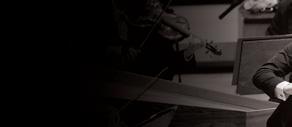












three- movement collaboration between TCP and Flutronix, aka flutist-composers Nathalie Joachim and Allison Loggins-Hull. It couldn’t be adapted to the flutists’ absence.) Glass’s piece is lush and meditative, foregrounding varying elements of its mesh of repeated patterns against a steady, lyrical chord progression, while Elfman’s retains some of the character of his scores for 80s and 90s Tim Burton movies: playful, spooky, surging, and dramatic. Lastly, the concert includes works from two other recent TCP albums: “Fields” by Devonté Hynes, aka Blood Orange (from 2019’s Fields), and “The Hero” by Clarice Assad (from 2021’s Archetypes, rearranged here by TCP’s Robert Dillon because Clarice and her father, Sérgio, won’t be present to play the piano and guitar parts).
—PHILIP MONTOROJoeboy 8 PM, Park West, 322 W. Armitage, $29$40. b
Throughout the next few months, Chicago will host several concerts featuring contemporary Nigerian pop stars, and Joeboy in particular is a mustsee. Born Joseph Akinwale Akinfenwa-Donus, the 24-year-old singer attracted international attention in 2019 for his summery single “Baby,” a love song with a loping chord progression and an overarching yet understated chipperness that’s ready to burst at the seams. When Joeboy maneuvers between heartfelt singing and rapping, “Baby” explodes with so much color that it channels the exuberant delirium of a relationship’s honeymoon phase. On that song and others, Joeboy proves more adept than most pop stars of the moment at making infatuation palpable. “Show Me,” from his triumphant 2021 debut album, Somewhere Between Beauty and Magic (Banku Music / emPawa Africa), employs an incredible, barely perceptible transition in the moods of his synths. Though their tones initially feel mysterious, Joeboy’s heartfelt declarations as the song progresses propel them into a zone of complete confidence and unbridled euphoria—he
won’t stop chasing a er love. Somewhere contains Joeboy’s best material to date, and shows that he knows how to ride along to the beats that drive his songs.
On “Focus,” his rapping and the percussion engage in a subtle interplay: the soft musical accents and insistent rhythm feel lighter and more buoyant because of his elegant voice. “Runaway” cruises at a slower tempo but is just as resplendent because Joeboy’s singing intertwines with the track’s numerous shimmering guitar melodies. Most of his songs have an admirable brevity too; “Celebration” reflects quietly on life’s small joys in under three minutes, closing the album with charming gratitude. Since the album’s release last January, Joeboy has put out a handful of singles on his own and with other artists. The most commercially successful among them is “Sip (Alcohol),” a bleary song about escaping life’s miseries—it’s proof that he can povide a potent dose of any emotion he wants to conjure up and leave you feeling elated.
 —JOSHUA MINSOO KIM
—JOSHUA MINSOO KIM
RLYR Djunah and Salvation open. 10 PM, Empty Bottle, 1035 N. Western, $10. 21+
I heard a lot about the glory days of the Fireside Bowl even before I moved to Chicago, and I loved the way the venue brought together bands from disparate subscenes with almost every show. Chicago instrumental trio Rlyr exemplify that freewheeling spirit: in their wondrous thrashing, I can hear the residual effects of growing up seeing grindcore, emo, no wave, and ska all on the same bill (well, maybe not so much the ska). On their new third album, Rlyr (Gilead Media), the group demonstrate that even the tiniest punk and metal sub genres are branches of the same river, and that they can flow back together too. Rlyr’s songs spill emo guitar loops into metal dirges, and parsing them is as pointless as trying to pour the cream out of your coffee. Rlyr’s approach to their instruments sometimes pushes them out of their customary roles in a way that feels similarly fluid: on a tense passage in “Distructure,” for instance, guitarist Trevor de Brauw rattles off a barrage of sharp stabs whose
percussive pulse mirrors the chattering hi-hat of drummer Steven Hess. Hess, de Brauw, and bassist Colin DeKuiper are great musicians with enviable resumés—if you need me to tell you about their other bands (which include Locrian, Cleared, Pelican, Chord, Russian Circles, and Bloodiest), then seek them out immediately. But for me, what stands out most about Rlyr is how much fun these guys clearly have playing together. I don’t say this just because “Head Womb” breaks into a pop-punk gallop that reminds me of Blink-182’s “What’s My Age Again?” for a moment. I say it because Rlyr’s heated breakdowns and exultant crescendos make their stylistic hopscotch feel as thrilling as though you’re hearing such leaps for the very first time.
—LEOR GALIL
Gentle Heat See Pick of the Week, page 48. Discus and Smut open. 9:30 PM, Hideout, 1354 W. Wabansia, $12. 21+
adult. A small number of tickets will be available at the door, but this show is otherwise sold out. Kontravoid and Spike Hellis open. 10 PM, Empty Bottle, 1035 N. Western, $18. 21+
It’s tempting to call Adult. electroclash; the synth duo of Nicola Kuperus and Adam Lee Miller debuted in 1998, coinciding with the style’s peak, and they’ve collaborated with notable groups in the genre such as Fischerspooner and Ladytron. But while the Detroit-based husband-and-wife team share some traits with the genre—particularly the way they pair an arty rock ’n’ roll swagger with a frenetic mechanical pulse—Adult. don’t lean into the heat and hedonism of the dance floor the way electroclash pioneers such as Goldfrapp and Peaches do. Instead they exercise a chilly restraint. Across nine albums, they’ve explored austere themes—exis-

tential wanting, capitalist alienation, the inevitability of death—with hip-thrusting rhythms that feel more spastic than sexy. (To me, spasming in the club while thinking about death is sexy—but that’s a subject for another day.)
On Adult.’s latest release, February’s Becoming Undone (Dais), they channel grief and despondency that stem not only from the pandemic but also from the decline and death of Kuperus’s father. Her vocals have always echoed the flat wails of Los Microwaves’ Meg Brazill and the sultry, reverbdrenched moans of Throbbing Gristle’s Cosey Fanni Tutti, but on this album, she unleashes more snarls and yelps, which she layers like uneven bricks on tracks such as “Fools (We Are)” and “She’s Nice Looking.” Miller’s militant bass lines and machinelike flourishes root Adult.’s music more firmly in EBM and industrial than in the postpunk and new wave that inform electroclash. Their sound is aggressive in its lack of poptimism, navigating a tight line between rapturous darkness and bouncy recklessness without getting too playful. Whatever you want to call Adult.’s music, on Becoming Undone they show their staying power lies in their ability to guide you through a ritual danse macabre.
—MICCO CAPORALE
40 years of touch A showcase by London collective Touch featuring Jonathan Thomas Miller and Cleared with Olivia Block. 7:30 PM, International Museum of Surgical Science, 1524 N. Lake Shore, $22. 21+
London-based Touch isn’t a record label in the traditional sense; it’s far more multifaceted. It might be more accurate to describe Touch as a collective that also extends into publishing, performance curation, and site-specific multimedia events driven by a loosely defined stable of international avant-garde electronic and sound artists, who include guitarist and producer Fennesz, experimental electronic composer Phill Niblock, multiinstrumentalist Oren Ambarchi, noise and tech-







































no producer Mika Vainio, and Icelandic composer Hilda Guðnadóttir.
This year Touch turns 40, and it’s celebrating its big anniversary with a chain of showcases in the U.S. and Europe that kicked off in Berlin in January. The Chicago event, held at the International Museum of Surgical Sciences, has a great lineup. Ohio native and Los Angeles resident Jonathan Thomas Miller is a multi-instrumentalist and composer for film and TV, and his credits include the Life Below Zero documentary series. Last year his versatile style, which blends esotericism and whimsy, landed him a composer-in-residence position at Columbia College.
Hard-working composer and sound artist Olivia Block has been one of the brightest lights in Chicago electronica and minimalism since the 90s. Her latest solo work, last year’s Innocent Passage in the Territorial Sea , is absolutely mesmerizing. The track “En Echelon” recalls noise pioneers Suicide while also managing to suggest glitch culture, harpsichords, and drum circles—all within less than six minutes, a span that feels longer than it is in the best possible way. For this show, Block will collaborate with minimalist Chicago duo Cleared, aka percussionist Steven Hess (who also plays in Rlyr and Locrian) and guitarist Michael Vallera (also of Luggage). Block contributed a remix of a Cleared track to their 2020 album for Touch, The Key, and she’s collaborated with Hess in experimental group Haptic. Block will provide fi eld recordings and synth organ for this performance, which she says will include a shared piece in two parts: one focusing on fi eld recordings and electronics, the second on instruments and tones. The venue for the concert, the International Museum of Surgical Science, is a Chicago gem that deserves its own write-up—its environment creates an intense combination of the luminous and the grotesque, and these artists are perfect for threading that needle.
—MONICA KENDRICKThe Honourable Elizabeth A. Baker 8 PM, Elastic Arts, 3429 W. Diversey #208, $15. b
Since January 2020, vocalist Julian Otis and Elastic Arts executive director Adam Zanolini have programmed AfriClassical Futures, a series offering an antidote to the overwhelming whiteness and deadness of the classical canon. Each AfriClassical concert invites a Black artist working in or springboarding from the Western classical tradition for an intimate live performance and conversation, though the exact form is up to the artist. Cellist Olula (who formerly performed as Olivia Harris), who came aboard as a curator of the series in its second season, explained this approach to Adam Zanolini for Elastic’s newsletter: “Because this is a ‘Western classical music’ series, it’s very important that we don’t bring in those hierarchies, that we don’t prop up the structures that we’re trying to fi ght against. . . . I want to continue to see a more expansive approach to [the question], ‘What is classical music?’” Previous AfriClassical guests have included chamber collective D-Composed, Milwaukee-based violin-and- cello duo Sista Strings, pianist and polymath Charles Joseph Smith, prolific composer and string player Renée Baker, and singer and composer Ayanna Woods, who’s behind some of the most engrossing choral music being written in Chicago right now. (Musical talent may be a family trait; her sister is Jamila Woods.) Next up in the series is the Honourable Elizabeth A. Baker, a Florida-born multiinstrumentalist and electronics artist whose cerebral, slow-developing music constantly re invents itself. When she premiered her work “Strange Loops” here in October, the performance managed to amuse several AACM musicians—no small feat—by employing overlapping scales in different keys and directing musicians to bounce PingPong balls inside a piano and use the bodies of other instruments as resonators, either by singing or blowing their horns into them. Ever out of the box, Baker will use this solo set to spotlight a harmonics guitar (specially designed by experimental luthier John C.L. Jansen) and the 16-channel speaker system at Elastic Arts, which the Chicago Laboratory for Electro acoustic Theatre installed just before the first U.S. pandemic shutdown.
—HANNAH EDGARKikagaku Moyo Joshua Abrams opens. 8:30 PM, Thalia Hall, 1807 S. Allport, sold out. 17+
Earlier this year, Japanese psych band Kikagaku Moyo announced that they would go on indefinite hiatus following their 2022 tour. It’s always surprising when a successful, globe-trotting band call it a day at the top of their game, and their multitudes of fans got pretty upset in response to the news. Over the past decade, Kikagaku Moyo have become one of a handful of cult-favorite bands to make the break from underground psych heads to more mainstream indie-rock audiences, a la Wooden Shjips and Earthless. And they deserve this wider attention for how they’ve ingeniously toed the line between immaculate songcra and spacey experimentation. Kikagaku Moyo (whose name means “Geometric Patterns”) formed in Tokyo in 2012 around the duo of drummer Go Kurosawa and guitarist Tomo Katsurada, then expanded into a five-piece influenced by a disparate mix of sounds, including Indian music, hip-hop, black metal, and power pop.

Japanese audiences weren’t particularly welcoming to the band, so they turned to the U.S., playing events such as Austin Psych Fest and releasing albums on stateside labels, including New York-based Beyond Beyond Is Beyond. In recent years, Kikagaku Moyo have toured their psychedelic asses off (except during pandemic lockdowns, of course) and started their own imprint, Guruguru Brain. While their hiatus is a sad development, at least they’re going out with a bang: to coincide with this tour, they’ve just released their swan-song LP, Kumoyo Island (Guruguru Brain). The seeds of the album were planted while the band were stuck in Amsterdam during the early days of the pandemic and germinated in a studio in the Shitamachi area of Tokyo.
The album is a fitting epitaph; the songs on Kumoyo Island sound like the culmination of Kikagaku Moyo’s shared musical experiences. Opener “Monaka” (named for a type of Japanese adzuki-
bean sweets) is inspired by minyo, a Japanese folk-music style, and aided by sitar, snaking wahwah guitar, and a funky groove; “Dancing Blue” slaps just as hard. It’s is nice to hear the band sing in their native language (they sometimes use their own made-up tonal tongue), which they also do on the gently flowing “Yayoi, Iyayoi,” which spirals into a fierce Flower Travellin’ Band-style freak trance. Overloaded Eastern-style guitar adorns “Field of Tiger Lillies,” and “Nap Song” is a gentle sleepwalker (as one might expect from its name). The band even take on “Meu Mar,” a dreamy tune by Brazilian troubadour Erasmo Carlos—a bold choice, considering the aesthetic distance. “Maison Silk Road” and “Daydream Soda” (which wins song title of the year for me) are the most musically challenging tracks on the LP, with densely layered field recordings and unidentifiable sounds that could’ve come from the beyond. It’ll be interesting to see how Kikagaku Moyo re-create these songs live, and I’m curious to see to what extent they mix it up with back-catalog material at this final Chicago gig. —STEVE
The title and story behind Cave In’s 2019 LP, Final Transmission, led many to believe that the eclectic rock band’s two-and-a-half-decade run had come to an end. Following the tragic passing of bassist and vocalist Caleb Scofield in 2018, the group fleshed out the last demos they’d made with him and turned them into a complete record. It seemed like a fitting conclusion to the band’s arc as well as a heartfelt goodbye to the man who’d given them so much of their heart and soul. But to the delight of Caveheads such as myself, the band have decided to carry on. Their new album, Heavy Pendulum (Relapse), isn’t just another collection of songs in their catalog; it’s another step in the evolution of a band whose shi ing sound is one of their biggest












Find more music listings at chicagoreader.com/musicreviews

assets and most defining features.
Cave In emerged from the mid-90s Boston hardcore scene, and their 1998 debut LP, Until Your Heart Stops , essentially reinvented metalcore with unrelenting, knotty, incredibly complex dualguitar shredding topped with the even more shredded vocals of front man Stephen Brodsky. Finding out what new musical moves a Cave In record would contain soon became one of the most exciting things about following the band: In 2000, they issued their prog-rock space-metal masterpiece, Jupiter , where Brodsky traded in his scream for a velvety falsetto. They toyed with shoegaze-adjacent indie rock on 2003’s Antenna , then blended sludge metal with space rock on 2005’s Perfect Pitch Black and 2011’s White Silence. Since Scofield’s death, Converge bassist Nate Newton has stepped in, and his grimy, groovy low end is a perfect fit. Heavy Pendulum is Cave In’s most straightforward, focused release to date, with direct heavy-metal riffing laying the groundwork for Brodsky’s signature vocal hooks (and the occasional trade-off with Newton’s menacing growl). Cave In’s beloved stargazing space-guitar leads are less of a presence, but the record is fun, catchy, and heavy as hell—once again, the band show us a fresh new side of their sound rather than something expected. Still, when 12-minute album closer “Wavering Angel” kicks in with “Stairway to Heaven”-style flutes and guitar leads worthy of Steve Hackett from Genesis, you’re immediately reminded that the opulent, prog- loving, metalhead side of Cave In that you’ve loved all along hasn’t gone anywhere.
—LUCA CIMARUSTI
tice he credits with transforming his passion for music into a calling. ’Kechi reached for those journals while he began working on ’Kechi Tunez. ’Kechi blends hip-hop, R&B, and soul into a smooth, inviting sound, plush with gentle keys, smoky saxophones, and light, nimble percussion. He positions himself as an artist in a state of reflection, which comes through especially strongly in the interludes—on “Meditate,” he talks about the Igbo roots of his name and the years he spent growing up in Chicago’s suburbs, before and a er his time in Imo. His gentle, understated singing and rapping make him sound like he’s considered every inflection carefully, and his pitter-patter flow atop the knotty bass of “Distant Memories” will have you paying close attention to his every word as well. —LEOR GALIL
Nick Macri & Mono No Aware , Amache Cunieform cuneiformrecords.bandcamp.com/album/amache
Chicago their home after the war. Macri has a familial connection to this heritage, and the piece’s solemnity makes it feel a bit like a prayer of remembrance. —BILL MEYER
Neurot ufomammut.bandcamp.com/album/fenice
kechimusic.bandcamp.com/album/kechi-tunez
Chicago producer, rapper, and singer Ikechi Chijiuba Ihemeson, aka ’Kechi, performs as though his entire life has led up to the moment he steps to the mike. He started recording his new full-length, ’Kechi Tunez (Ojuba Music), in 2020, though he traces the album’s roots back to a year he spent in Africa a decade ago. ’Kechi was 14 when his mom sent him and his sisters to live in the Nigerian state of Imo; he spent his freshman year at a boarding school there and started writing in journals, a prac-

Chicago bassist Nick Macri is the model of versatility. He has appeared with a formidable gallery of jazz, folk, and rock musicians, including Ken Vandermark, James Elkington, Laetitia Sadier, Bobby Conn, and instrumental combo Stirrup. Adept on electric bass guitar and acoustic double bass, he can be unassumingly supportive or assertively tuneful, depending on what the situation requires. But he rarely performs on his own, which makes the music on his debut LP, Amache (Cuneiform), especially surprising. It’s credited to Nick Macri & Mono No Aware (“mono no aware” is a Japanese phrase referring to cognizance of the impermanence of things), but Macri is the only musician on it. He opens the album with tolling, almost prayerful metal percussion, but that vibe proves quite transient when he abruptly burps his electric bass. “How to Be in the Body . . . Without Jumping Out of Your Skin (for Tracy Pew)” is named for the late bassist of the Birthday Party, the ferocious postpunk combo where Nick Cave made his bones. The piece wraps around one and a half sides of a vinyl record, taking a winding path from simple, scorched melody to electronically scoured noise. Then Macri turns to his acoustic bass for the title track, dedicated to the thousands of Japanese American citizens who where shipped to internment camps during World War II and then made
I’ve never been the type to have a single favorite artist (I’ve probably got 100, depending on the context or mood), but for more than a decade I’ve counted Italian psychedelic-metal group Ufomammut among the best bands on the planet. So in January 2020, when they announced that their drummer, Vito, was departing and that the other members were taking a break a er 20 years together, I hoped their hiatus wouldn’t turn permanent. In the years since, we’ve experienced so much loss, but Ufomammut have thankfully not become a casualty of the time; their new album is titled Fenice (“Phoenix”), and they’ve emerged from their own ashes with a renewed sense of purpose and spirit. They’ve long been known for pushing the boundaries of heavy psychedelic music and building dense, titaniumstrength walls of sound replete with far-reaching cosmic experiments and cavern-scraping doom, and their philosophical underpinnings have seemed to grow more ambitious from album to album. But as they note in the press release for Fenice, all those complexities began to take their toll. And so, joined by new drummer Levre, they decided to shake off the past and get back to basics. A listen to the album suggests they’ve accomplished their mission. Fenice twists and turns but never loses momentum or focus, and its relatively stripped-down atmospheres suggest that Ufomammut have burned off their music’s impurities (well, most of them) while preserving the white-hot essence. Written as a single track and divided into six pieces, Fenice is best experienced in its entirety. Between the church bells, whispers, and flying-saucer-invasion synths of opener “Duat”; the stunning, serene melodies that contrast with increasingly thunderous bass on “Metamorphoenix”; and the grimy, pulverizing grooves of “Empyros,” each song can more than stand on its own, but when you’re offered a journey as heady as this one, you want to make it last as long as possible. —JAMIE LUDWIG v

’Kechi, ’Kechi Tunez
Ojuba Musiccontinued from 52 ’Kechi COURTESY THE ARTISI









Moyer, DJ Suzanne Shelton, DJ Bill Saveley, DJ Rob Kokot, DJ Glenn Russell 7/16, 8 PM, Metro
Never Come Down, Man Crush 6/1, 8 PM, SPACE, Evanston b
Joel Paterson Trio featuring Beau Sample and Alex Hall 7/15, 9 PM, Hungry Brain Pelt, Bill MacKay & Nathan Bowles 5/28, 9:30 PM, Hideout
Piano Guys 10/22, 8 PM, Auditorium Theatre b John Primer, Larry Taylor 6/1, 8:30 PM, FitzGerald’s, Berwyn Racetraitor, Si Dios Quiere, Terminal Nation, Midwestlust, Sarin 5/27, 7:30 PM, Cobra Lounge, 17+ Resonant Rogues 7/2, 8 PM, Montrose Saloon
Robot Civil War, Lollygagger, Ovef Ow, Dead Lucid 6/18, 8 PM, Golden Dagger
Adjacent Cruise 5/30, 9 PM, Montrose Saloon
Airborne Toxic Event, Mondo Cozmo 7/9, 7:30 PM, the Vic b
All Hail the Queen featuring Ms. Philly, Jayonna Sims 8/12, 7 PM, the Promontory b
Luciano Antonio 6/1, 8 PM, Jazz Showcase b
Apocalypse Hoboken, Kyle Kinane, Boris the Sprinkler, Vacation Bible School, Wig 6/24, 7 PM, Chop Shop, 18+
Apocalypse Hoboken, Kyle Kinane, Off With Their Heads, Copyrights, Tijuana Hercules 6/25, 7 PM, Chop Shop, 18+
Arcade Fire, Beck 11/12, 7:30 PM, United Center b
At the Gates, Municipal Waste, Enforced 8/24, 6:30 PM, Concord Music Hall, 17+
Awolnation, Badflower, Mysterines 10/13, 7:30 PM, Riviera Theatre, 18+
B-52s, KC & the Sunshine Band 10/7-10/8, 7:30 PM, Chicago Theatre b
Barren Heir, Iron Gag, Sarin, Urine Hell, Martha’s Got a Limp Wrist 6/9, 8 PM, Cobra Lounge, 17+
Battles, Axis: Sova 6/4, 9 PM, Lincoln Hall, 18+
Beveled 6/2, 9 PM, Hungry Brain
Chris & Heather’s L’il 16mm
Film Festival featuring Phil Angotti 6/2, 8:30 PM, FitzGerald’s, Berwyn Chris Brown 8/4, 7 PM, Hollywood Casino Amphiteatre, Tinley Park b
Cat Power, Arsun 8/3, 8:30 PM, Thalia Hall, 17+
Circuit des Yeux, Jon Mueller 6/16, 8:30 PM, Constellation
Circuit des Yeux, Olivia Block 6/17, 8:30 PM, Constellation
Claud 6/5, 8 PM, Sleeping Village Covet, Hikes, King of Heck 5/29, 7 PM, Lincoln Hall b
Cradle of Filth 6/2, 7 PM, the Forge, Joliet b
Christian Dillingham 5/31, 8 PM, Jazz Showcase b
John Doe Folk Trio 6/26, 7 PM, Maurer Hall, Old Town School of Folk Music b
Dreamcatcher 7/7, 7:30 PM, Radius Chicago b
Em Spel, Health & Beauty, Elenna Sindler 5/26, 8:30 PM, Constellation
Emo Night Brooklyn DJs 5/27, 9:30 PM, House of Blues, 17+
Footlight District, Oregon Space Trail of Doom 7/22, 8 PM, Cobra Lounge, 17+
Forest Ray, Joyfriend 7/13, 9:30 PM, Hideout
Franc Moody 6/17, 7 PM, Chop Shop, 18+
Fred Again 10/5, 8 PM, Riviera Theatre, 18+
Full of Hell, Blood Incantation, Vermin Womb, Mortuous, God Is War 9/30, 7 PM, Reggies Rock Club, 17+
John Fullbright 6/17, 7 and 10 PM, Golden Dagger Grayscale, Guardin, Bearings, Ivy 7/6, 6 PM, House of Blues b
Norberto Guerra’s Modern Cuban Jazz Band 5/28, 7:30 PM, Epiphany Center for the Arts
Gwar, Goatwhore, Nekrogoblikon, Native Howl 6/7, 7:30 PM, the Forge, Joliet b Gyptian 8/20, 10 PM, the Promontory
He She They featuring Maya Jane Coles, Hiroko Yamamura, Martyn Bootyspoon 6/25, 10 PM, Concord Music Hall, 18+
The Head and the Heart, Shakey Graves 10/1, 7:30 PM, Huntington Bank Pavilion b Heet Deth, Sweet Pill, Scrunchies 6/16, 8 PM, Golden Dagger
Paula Herrera 6/22, 8:30 PM, Maurer Hall, Old Town School of Folk Music Fb
Billy Howerdel 6/28, 7:30 PM, Metro b
Iceage 5/29, 8:30 PM, Empty Bottle
Paul Jacobs 6/1, 9:30 PM, Hideout
Josh K and friends 5/27, 7 PM, the Promontory Juls 8/13, 10 PM, the Promontory
Kara Kesselring & Sugarcreek Road, Desperate Bastards 7/23, 7:30 PM, Epiphany Center for the Arts
Tim Kinsella & Jenny Pulse, Randy Randall 8/3, 8 PM, Schubas, 18+
Lil Nas X 9/10-9/11, 8 PM, Aragon Ballroom b

Lonesome Ace String Band 6/8, 8 PM, Montrose Saloon
Carmen Lundy Quintet 5/265/28, 8 and 10 PM; 5/29, 4 and 8 PM, Jazz Showcase b
Matt Maltese 11/1, 8 PM, Bottom Lounge, 17+ Man Man, Pink Sock 6/24, 9 PM, Sleeping Village Matmos, Jeff Carey 8/1, 8:30 PM, Constellation
Meat Puppets, Garcia Peoples 6/25, 9 PM, Sleeping Village
Memphis May Fire, From Ashes to New, Rain City Drive, Wolves at the Gate 7/6, 5:30 PM, Bottom Lounge b Metalachi, Fonzie & the Dago Tees, Tentakills 5/27, 8 PM, Reggies Rock Club, 17+ Metric 10/18, 7:30 PM, Chicago Theatre b
Neo Reunion 2022 featuring DJ Scary Lady Sarah, DJ Jeff
Ruido Fest featuring Cuco, Los Fabulosos Cadillacs, Babasonicos, Cypress Hill, Carla Morrison, Maldita Vecindad, Beach Goons, Bonnz, Browns Crew, Bruses, Cardiel, Carmen DeLeon, and more 8/19, 3 PM; 8/208/21, 1 PM, Union Park b Sam Thousand & the Soul Vortex 5/31, 7 PM, the Promontory b
Santa Fe Klan, Tornillo, MC Davo 8/11, 8 PM, Rosemont Theatre b
Scandal [Japan] 7/16, 8 PM, House of Blues, 17+ Camilo Séptimo, Francisca Valenzuela 7/23, 8 PM, House of Blues, 17+
Sasha Alex Sloan, Jessie Murph 6/22, 8 PM, House of Blues, 17+
Sleeping With Sirens, Don Broco, Point North, Garzi 6/14, 7 PM, House of Blues, 17+
So Speaker, Dirty Blond, Ryan Traster 5/28, 8 PM, Montrose Saloon
Son Rompe Pera, Bang Data 5/26, 8:30 PM, FitzGerald’s, Berwyn Steeldrivers 5/26-5/27, 8 PM, City Winery b
Straight No Chaser 12/23, 8 PM, Chicago Theatre b Stray Kids 7/1, 7:30 PM, United Center b
Harry Styles, Jessie Ware 10/6, 8 PM; 10/8-10/9, 8 PM; 10/1310/14, 8 PM, United Center b Syd 6/8, 8 PM, Thalia Hall, 17+ Torres 6/4, 10 PM, Empty Bottle
Traitrs 6/7, 8:30 PM, Empty Bottle
Umi 6/29-6/30, 7:30 PM, Lincoln Hall b
Roger Waters 7/26, 8 PM, United Center b
DJ Wayne Williams, DJ Andre Hatchett 5/27, 8 PM, Epiphany Center for the Arts
Vince Willis 5/30, 7 PM, Reggies Music Joint
Max & Iggor Cavalera, Warbringer, Healing Magic 6/4, 8 PM, the Forge, Joliet, lineup updated b
Chase Atlantic, Leah Kate, Xavier Mayne 7/16, 8 PM, Radius Chicago, lineup updated b
NLE Choppa, Lil Eazzyy & Scorey 5/31, 8 PM, Avondale Music Hall, lineup updated b Kurt Vile & the Violators, Natural Information Society 5/27-5/29, 8:30 PM, Thalia Hall, 5/27 and 5/28 sold out, 17+
AJR, BoyWithUke, Blue Man Group 6/3, 7:30 PM, Hollywood Casino Amphitheatre, Tinley Park b
Aldous Harding 6/3, 8:30 PM, Thalia Hall, 17+ Bayside, Thrice, Anxious 6/15, 7:30 PM, Radius Chicago, 17+ Belle & Sebastian 5/26, 7:30 PM, Riviera Theatre, 18+ Phoebe Bridgers 6/4, 8 PM, Huntington Bank Pavilion b Cancerslug 6/15, 8 PM, Reggies Rock Club, 17+ Chicago Blues Festival 6/96/12, Millennium Park Fb Chicago Gospel Music Experience 6/4, Pritzker Pavilion, Millennium Park Fb Crawlers 6/13, 7:30 PM, Subterranean b
Dadju 6/1, 7:30 PM, Concord Music Hall, 18+
Darts, Mystery Actions, Rumours 5/28, 10 PM, Liar’s Club
De ones, Gojira, Vowws 5/27, 7 PM, Huntington Bank Pavilion b
Dehd, Pixel Grip 6/4, 9 PM, Metro, 18+
Iris DeMent, Ana Egge 5/26, 7:30 PM, SPACE, Evanston b
Dying Fetus, Chelsea Grin, Body Snatcher, Frozen Soul, Undeath 5/28, 5:30 PM, Concord Music Hall, 17+ Emmit Fenn 6/8, 7:30 PM, Metro b
Ezra Furman 6/1, 8 PM, Thalia Hall, 17+
Generacion Suicida, Dark Thoughts, Evil Empire 5/26, 8 PM, Cobra Lounge, 18+ v
LOCAL FOUR-PIECE Mystery Actions remind Gossip Wolf of the cool, slightly intimidating kids from the Chicago streetpunk scene in the late 80s and early 90s, when it centered on Clark and Belmont— specifically Punkin’ Donuts and the Alley. Perhaps that’s because the band—vocalist Nikki Mouse , guitarist Lucy Dekay , drummer Rose Beef, and bassist Mikhael Hell—crank out tough-as-nails, high-speed punk that’s earned them slots supporting timeless heroes such as the Dead Boys, Buzzcocks, GBH, and the Adicts. Mystery Actions have been working on an as-yet-untitled EP that’s due on Friday, May 20, and last week they dropped its scorching debut single, “War Beat.” On Friday, May 13, they debut the “War Beat” video at GMan Tavern as part of a show there with Watermelon and Exedo.
They aren’t mercenaries who escaped from a military stockade, but brandspanking-new local thrash band Ready for Death are kind of like the A-Team—five weirdos brought together by unlikely circumstances who reliably create explosive action. The group includes members of Racetraitor (Dan Binaei), Luggage (former Reader staffer Luca Cimarusti ), Pelican (Dallas Thomas), Indecision (Artie White), and Haggathorn ( Shawn Brewer ), and in April they released their ferocious debut single, “Cyborg Priest.” On Saturday, May 14, they play their first live show, at 7 PM at Tone Deaf Records , with an opening set from sludgy stoner trio These Beasts.
Chicago punks Daddy’s Boy have a heck of a lineup: Jon Strasheim (aka Oblivious Newton Jon), Bandcamp Daily editor Jes Skolnik (Split Feet), Neal Markowski (Retreaters, Future Living), and Bryan Gleason (Fake Limbs). They’ve been pretty quiet lately, and their new full-length, Great News! , sounds like they’ve been saving up things to rail against. Recorded by Steve Albini at Electrical Audio, Great News! channels every ounce of the past few years’ frustration into agitprop rippers! —J.R. NELSON AND LEOR GALIL
Got a tip? Tweet @Gossip_Wolf or e-mail gossipwolf@chicagoreader.com.

See which artists are coming to Chicago with this essential music calendar of forthcoming shows and concerts—inboxed every Tuesday.

chicagoreader.com/newsletters
A weekly newsletter featuring exclusive new writing by our critic Mike Sula and the latest restaurant reviews, chef profiles, and more from our site. Hot off the grill every Friday.


chicagoreader.com/newsletters









tion—if they gossip about you, you’ll gossip about them—is usually enough to restrain bad actors, as is the threat of the obvious follow-up question. (“Wait, why are you on Feeld?”) And most people on hookup apps aren’t bad actors, HUSH, but fundamentally decent people like you and your wife, i.e., singles and couples looking for a little fun, not for an opportunity to hurt anyone. A friend or a relative or a coworker who spots your wife in a bar with a strange man—or in the lobby of a hotel or on her way into your apartment—is likelier to cause you headaches than one of your fellow perverts online.
This is a column about worries.
 By DAN SAVAGE
By DAN SAVAGE
Q : I’m a straight guy, married to a straight woman for 15 years. Several years back, I opened up to my wife about my fantasies of her sleeping with other men. I was nervous about bringing it up. Her views on sex had always been traditional, and she had always expressed a very strict idea of monogamy and commitment. So, I was extremely relieved when her reaction was intrigue rather than disgust. She was curious about it and wondered if I really wanted it to happen or if it was just something I wanted to keep in our rotation of dirty talk. Fast-forward to this week, and my wife tells me she is interested in exploring this. (Note to other guys who want this from their wives: be
respectful, don’t pressure, and give her time to think about it. Your patience might be rewarded!) Here is the problem: We both have careers that could be complicated or damaged by the stigma around “cheating.” I know about all the apps out there, but we live in a large city, and there is a nonzero chance that we might run into someone on the apps we are connected to professionally or socially. Are any of the apps out there geared toward folks who want to go about this carefully? Is it possible to minimize the risk of professional or social embarrassment here, or is this just something we must accept to pursue this lifestyle? —HOOKING UP, SEEKING HELP
A : There are lots of dating apps for people and/or couples looking for casual sex and/or kinky sex (Feeld, 3Somer, #Open, et al.), and lots of people—single and partnered—looking for casual and/or kinky sex on regular dating apps (Tinder, OKCupid, Christian Mingle, et al.). But hookup/ threesome/swinger apps, while perceived as sleazier, are a safer bet for a couple like you and your wife.
While there’s no way to eliminate your risk of being recognized on an app, HUSH, anyone who spots you on Feeld looking for extracurricular dick was on Feeld looking for and/or offering up a little extracurricular dick of their own. The threat of mutually assured destruc-
To minimize your risk of being spotted and outed on the apps, HUSH, don’t post face pics and only share them after you’ve established—to the best of your ability—the person you’re talking to isn’t a bot, a pic collector, or an extortionist. Again, there’s no way to fully eliminate the risk, but at a certain point you have to trust your gut and take a risk. You also have the option of creating a profile in a city you visit regularly but don’t live in, HUSH. After you’ve found and vetted a few good candidates, get yourself some airline tickets and a hotel room and have those drinks in a bar that a colleague, a fan, or your father-in-law is unlikely to walk into.
Q : There’s a story making the rounds on Reddit about people getting those metallic “bejeweled butt plugs” all the way into their asses and needing pretty intense intervention to get them out, ranging from partners pulling them out with their fingers (the unfun kind of double penetration) to actual surgery in a hospital (only fun for a very
select few). The blame, apparently, is the fact that the base of these toys is rarely wider than the widest party of the head, which is pretty damning, and that lubed metal is slipperier than lubed silicone. So here are the operative questions: Are metallic bejeweled butt plugs safe or not so much? Are silicone bejeweled butt plugs any safer? Are there any safe bejeweled butt plug options out there? The world isn’t going to stop being obsessed with sparkly butt toys any time soon, so we’re going to need to find a way to do it safely. —INSERTION
A : I’ve seen those jeweled butt plugs in shops and in photos online—they’re usually made from stainless steel and have glass “gems” mounted at the end of an alarmingly narrow base—but I’ve never actually seen one in person. Or in a person, at least not in person. But knowing what I do about butts (and how they relax a er some play), and knowing what I do about plugs (a flared base is your first line of defense against a trip to the ER), I would’ve worried too much about losing one to use one. As for safe bejeweled butt plug options, ITEMS, you’re going to want a flared base and a jewel that’s at least the size of Cullinan I Diamond, the fist-sized rock on the Queen of England’s royal scepter, which come to think of it . . .
Q : As you’ve surely heard, the conservative Supreme Court majority plans to overturn Roe v. Wade While my wife and I were lamenting the state of this fucking country, she mentioned that nobody ever hears men talking about the abortions that kept their lives on track—even though that’s obviously a very common thing that happens. How many guys shat their
pants a er a condom failed during sex with a woman they weren’t that into? How many prominent men knocked up their mistresses or assistants or babysitters? How many Republican boys have pressed a wad of their parents’ money into a girl’s hand because having a baby would ruin his future? These men need to speak up. I’m not expecting actual Republicans to do so, but perhaps there are men out there who are willing to speak up and admit what we all know: Men benefit from abortion while bearing none of the shame associated with it. It’s time we heard from them. I’m sorry I don’t have a catchy name for this or a cute sign-off. I’m so tired and the world is falling apart.
A : Now for some real worries. We are weeks away from American women being stripped of a fundamental constitutional and human right. And we face the prospect of an out-of-control and illegimate Supreme Court stripping us of a host of other rights: the right to contraception, the right to same-sex marriage, the right to interracial marriage, even the right to have sex for pleasure—you know, the sex most people have most of the time. In Lawrence v. Texas (2003), the Supreme Court struck down sodomy laws that criminalized not just consensual gay sex, but consensual sex between men and women that wasn’t open to conception as well.
While it should be enough to hear from women who’ve benefited from safe and legal abortion—and it should be enough to know that women die from unsafe and illegal abortions, and enough to know that banning abortions doesn’t stop women from getting abortions—I happen to agree that cis men who support abortion rights and





















have benefited from them need to speak the fuck up about reproductive freedom.

“There are millions of men whose lives would have been worse without abortion,” the writer Jill Filipovic wrote on Twitter last week. “Men who wouldn’t have found their big loves, wouldn’t have their kids, wouldn’t have been as successful, wouldn’t have taken big risks” if they had become fathers before they were ready. To those men, to all men, Filipovic says, “This is your fight, too. Get in it.”
























And gay men? The exact same arguments being used right now to strip women of the right to decide when and whether they want to bear a child—abortion isn’t within the “history and traditions” of the United States, abortion isn’t a right enumerated in the Constitution, abortion
is a moral question—can and will be used to strip us of the right to have sex and the right to marry. Republican assholes are passing laws in red states right fucking now that force women to give birth to their rapists’ babies against their will. Don’t for a second think these same assholes won’t pass laws forcibly ending your gay marriage or throwing your gay ass in jail for getting your gay ass fucked. This is our fight, too, faggots.




Q : Is there a website where we can legally find out how to buy the abortion pills you’ve mentioned on the podcast? —MAKE IT STOP




A : Everything you need to know about abortion pills—how they work and where to get them—can be



found at plancpills.org. And anyone using those pills at home needs to read Dr. Jen Gunter’s essay “Your Medical Team Cannot Tell If You Had a Self-Managed Abortion” at vajenda.substack.com. And everyone should read Jill Filipovic’s advice on what we can do right now to fight back (“Get To Work, Get Informed, Get Brave”) at jill.substack.com. And if you can afford to donate to the National Network of Abortion Funds, now would be a great time to do so. They’re at abortionfunds. org. And finally: don’t vote Republican, don’t fuck Republicans. v






Send letters to mail@ savagelove.net. Download the Savage Lovecast at savagelovecast.com. @fakedansavage











Northwestern Memorial Healthcare seeks Analytics Developers for Chicago, IL to deliver data warehouse & analytic solutions. Bachelor’s in Info Sys/related field +2yrs exp. Req’d Skills: develop, design & developing apps & relational databases; SQL for data extraction, manipulation, & reporting; developing analytical solutions w/ business users; create queries & stored proceed; data visualization tools (Tableau, SSRS, Power BI); Structured programming; SSMS; SSIS. Background check & drug screen req’d. Apply online: http://jobseeker. nm.org/ Requisition ID: REF 35698 U.
Claire’s Stores Inc. seeks Global Senior Planner in its Hoffman Estates, IL location. Min Requirements: Experience must include (i) min two years of exp in the position offere as a Merchandiser or European Associate Merchandiser, or a combination of both; and (ii) previous exp must include exp in the following: conducting analysis if all department lines specific, with a focus on each EU Country and territory, providing commercial recommendations to the VP Merchandising and SVP Buying; ensuring thorough review of grading process of stock holding groups are completed in accordance with grading calendar and allocation team; liaising with allocation analysts on a regular basis to maximize efficiency for each European country, and manage allocation exceptions, ensuring nuisances by country are adhered to; conducting sales at store and company level in a or an e ith efine markdown parameters in plans, suggesting and implementing different promotions, by country, based on each country’s legal requirements, to drive sales and margin. Please send resumes to Tara Sarrazin, Senior Corporate Recruiter, 2400 est entra oa offman Estates, IL 60192
(Hoffman Estates, IL) CMIC, Inc. seeks Research Analyst w/ Bach or for deg equiv in Chem, Food Sci, Eng, Food Tech or r t yr exp in o offer or r n in a re lab environ incl LC-MS/ MS &/or UHPLC-UV; UHPLC-FD; understand GLP reqs & SOP/SWPs; & util anal tech to perform sample anal. Apply to HR, or s ve off an Estates, IL 60192
The Department of Public Administration, at the Univ of IL at Chicago (UIC), located in a large metropolitan area, is seeking a full-time Assistant Professor to assist the department with the following responsibilities: Under direction and supervision, assist department to teach and mentor graduate and undergraduate students enrolled in the several programs in the Department of Public Administration. Contribute to one or more of the program’s core competencies in Public Management, Nonprofit Management, Financial Management, Public Policy, Urban Governance, and Data Analytics. Maintain an active and promising research agenda in one or more areas of data and technology policy that leads to publication of research in respected academic outlets. Oversee research of graduate students and service on doctoral dissertation committees is expected. Other University service as assigned. Some travel may be periodically required to attend conferences and/or professional development. This position minimally requires a Ph.D. degree or its foreign equivalent in Public Administration, Public Policy, Political Science, or related field of study. For fullest consideration, please submit CV, cvr ltr, & 3 references by to ari Department of Public Administration, Univ of IL at Chicago, 400 S. Peoria Street, Chicago IL 60607 or via email to buffill@ uic.edu. UIC is an Equal Opportunity, Affirmative Action employer. Minorities, women, veterans, & individuals w/ disabilities are encouraged to apply. UIC may conduct background checks on all job candidates upon acceptance of a contingent offer letter. Background checks will be performed in compliance with the Fair Credit Reporting Act.
(Hoffman Estates, IL)
Tate & Lyle Ingredients Americas LLC seeks Global Data Analyst w/ Bach or for deg equiv in CS, IS, IT & Mngmnt, Stats or Eng & 2 yrs exp in job offer or in analyt role incl report tools such as PowerBI, Tableau & other visualization tools; creat meaningful reports, dashbrds, presentation packs, KPI’s, stats & scorecards; SQL prog; & wrkng w/ cloud-based technol (such as AWS, Azure) & open source tech (such as Python, R). Apply online at: http:// www.tateandlyle.com/ careers/Pages/Careers. aspx
Senior Security Engineer, Applications
- Lead & assist delivery of penetration testing assessments. Provide cybersec guidance & strategy to clients. Assist w/ vulnerability, application, cloud pentesting assessments & other types of security strategy & architecture reviews. Perform technical penetration testing & app security assessment projects.
Assist w/ building internal processes, procedures, templates & methods.
Assist w/ tech dvlpmnt to support delivery of cyber security svcs. Maintain & innovate testing & assessment methods & provide mentoring to teammates. **Work is at Employer’s Office (123 N Upper Wacker Dr, Ste 300, Chicago IL, 60606) with no travel involved.
Requires: Master’s in Info Security, CS, or closely rltd field + 1 yr of progress responsible exp in occupations rltd to Info Security Analysis. Must have 1 yr exp in the following: penetration testing, working w/ Windows & Linux OS, associated command-line admin tools (Bash / PowerShell).
1 yr exp working w/ app stacks including, web, mobile & API. 1 yr exp working w/ database platforms including SQL, MSSQL, or MySQL. 1 yr exp working w/ computer networking protocols. 1 yr exp working w/ penetration testing & vulnerability testing software including Burp Suite, Fiddler, or Nessus. 1 yr exp scripting in PowerShell, Python, or Bash. Send resume to Evolve Security, LLC at recruiting@ evolvesecurity.com.
Loyola University Chicago is seeking an Assistant Professor in Chicago, IL to conduct research & produce scholarship (conference papers, articles, & ono raphs) in the fie of Classical Studies, particularly Latin Literature, Ancient Aesthetics of the Grotesque, Roman Law, & the Reception of Classical Studies in Japan. Please send resume to jfinn4@luc.edu & ref job 122983.
(Hoffman Estates, IL) CMIC, Inc. seeks multiple Group Leaders w/ Bach or for deg equiv in Chem, Chem Eng or rltd yrs exp in o offer or wrkng in regul lab envir perform timely study mngnt, incl exp LC-MS/ MS &/or UHPLC-UV or UHPLC-FD; PK &/ or ADME study perform Method Devp & Method Valid &/or sample anal; & understand GLP reqs & SOP/SWPs. Apply to HR, or s ve off an Estates, IL 60192
Front End Developer
Building performant, scalable and secure web applications/APIs, utilizing APIs with C# and SQL Server systems, participating in the full software development lifecycle with requirements, solution design and development. writing computer-programming code as required to meet clients’ goals and contracted services, including: developing and maintaining program for end-users, and creating and designing software architecture and systems; writing code to integrate into existing client software; creating innovative functionality for existing program; operating and maintaining the system; providing continuous improvement to the program; testing and documenting the system once the program is migrated to a test or staging environment, and perform integration and system testing; testing software performance to ensure the delivery of an accurate, functional, and satisfactory end product; user acceptance testing; consulting with managerial and technical personnel to clarify project goals, to identify problems and suggest changes; identifying and gathering user requirements; analyzing user and customer needs, and software requirements to determine feasibility of design. Mail résumé to Amgaabaatar Purevjal, iCodice LLC, 5005 Newport Dr, Suite# 505, Rolling Meadows, IL 60008
Vice President. Job location Elk Grove, IL. Send resume w/this ad to Code 288-VP, Y. Mori, Nichifu America, Inc., 2677 American Lane, Elk Grove Village, IL 60007
(St. Charles, IL) Nidec Mobility America Corp seeks Software Development Engineers III w/ Bach or for deg equiv in or r t yrs exp in o offer or reat exec of test plans in lab envir. Also accepts Mast or for deg equiv in EE, or r t nths exp in o offer or reat exec of test plans in lab envir. Must have 6 mnths exp w/ lab equip (oscilloscopes, logic analyzers, funct generators); creat of sftwr reqs & des docs; Assembler, compilers & debuggers; embedded prog in “C” prog lang; sftwr devp proc that comply w/ SEI CMMI Level 3; embedded prog in 8-bit/16-bit microcontr assem lang; & config mngnt syst (CVS, PVCS or similar). Apply to HR, 3709 Ohio Avenue, St. Charles, IL, 60174
(St. Charles, IL) Nidec Mobility America Corporation seeks PLC Controls Engineer II w/ Bach or for deg equiv in yrs in o offer or auto devp using program logic cntrl. Also acceptable: Mast or for deg equiv in EE & 9 mths exp in job offer or auto devp using program logic cntrl. Must have 9 mnths exp in elect des to incl elect panel layouts; DC servo onfi reat test reports; & trbleshtng of auto syst. Occas trvl reqd. Apply to HR, 3709 Ohio Avenue, St. Charles, IL 60174
Partner, Baker McKenzie, Chicago, IL: manage & implement project development & construction transactions in the energy, mining, infrastructure & commercial real estate sectors; manage client relationships; manage associate attorneys & administrative staff; draft, negotiate & revise construction agreements for large infrastructure projects. Must have J.D. or foreign equivalent & 5 yrs exp. w/ each of the following: drafting, negotiating, revising, & managing the implementation of cross-border, US/UK engineering & construction contracts in excess of $300M; advising on project development & construction transactions in the energy, mining, infrastructure & commercial real estate sectors; & advising on project development & construction problems and disputes under cross-border US/ UK engineering & construction contracts. Must be licensed to practice law in Illinois. Exp. may be gained concurrently. Please apply online at www.bakermckenzie. com/careers.
TransUnion, LLC seeks Managers for Chicago, IL location to manage a team of system designers, coders, analysts and solution consultants to develop standard to very complex customer batch processing programs. Masters in Comp Sci/ Comp Apps/Comp Info Sys/related field +2yrs exp or Bachelor’s in Comp Sci/Comp Apps/ Comp Info Sys/related field +5yrs exp req’d. Req’d Skills: exp leading & coaching IT tech teams, sw sys dev in re it reportin or financial services industry in a customer facing role, Batch Process, Linux, Unix, Agile, BI tools (Tableau), ETL tools (Ab Initio), Systems Dev Lifecycle, Rapid App Dev. 40% telecommuting permitted. Send resume to: A. Goodpasture, REF: VPP, 555 W Adams St, Chicago, IL 60661.
Law Clerk – C-K Law Group; Law Offices of Chicago Kent – Legal research, drafting, litigation support, client comms, manage caseload. JD or foreign equivalent, license not required. Mail res, cov. let. to T. Kish, 565 W. Adams, Suite 600, Chicago, IL 60661.
Market Research Analysts & Marketing.
Orozco Trucking Inc, Elk Grove Village, IL FT. No exp., no training. Bachelor in Acctg., Auditing or Mktg. req’d. Annual salary: $41,163.00. Email resume to romanj@ orozcotrucking.com
Medline Industries, LP in Northfield, IL has multi open’ngs for: A)Managers, Sales Programming to oversee dsgn, dvlpmnt, test’g, implmnt’n, & maintn’ce of progrms. No trvl; no telecomm. Apply at: https:// medline.taleo.net/careerse tion onfi entia jobapply.ftl?lang=en&job=INF0100GW B)Sr. BI Developer Analysts (Tableau) to dvlp & maintn’g enterprise & deptmn’l biz intell, data WHS’g & report’g solut’ns. No trvl; no telecomm. Apply at: https:// medline.taleo.net/careerse tion onfi entia jobapply.ftl?lang=en&job=INF0100KC
C)IS Data Architect/ Modelers to dvlp’ & main biz intell, data WHS’g & data eng’g solut’ns for E-comm dept. No trvl; no telecomm. Apply at: https://medline. taleo.net/careersection/ md_confidential/jobapply.ftl?lang=en&job=INF0100KB
D)Developer Analysts (Low-Code Development/.NET) to dsgn & dvlp biz functionality in multi-tier web solut’ns while improv’g code quality & infrastructure. No trvl; no telecomm. Apply at: https://medline. taleo.net/careersection/ md_confidential/jobapply.ftl?lang=en&job=INF0100KD
E)Sr. BI System Administrators to onfi maint’n Tableau Server SW. No trvl; no telecomm. Apply at: https:// medline.taleo.net/careerse tion onfi entia jobapply.ftl?lang=en&job=INF0100KS
Maestro Health LLC is seeking a Finance Transformation Analyst in Chicago, IL, resp. for improvement of finance processes & digital transformation. Relevant degree &/or exp &/or skills req. To learn more or to apply, send inquiries &/or resume to resumes@ maestrohealth.com.
Medline Industries, LP. in Mundelein, IL has multi open’ngs for: A)Talend ETL Developers III to create & adminst’r data pipelines & apps. No trvl; no telecomm. Apply at: https:// medline.taleo.net/careerse tion onfi entia jobapply.ftl?lang=en&job=INF0100KQ
B)Sr. Identity and Access Management (IAM) Engineers for techn consult’g on complex projs, creat’g automated solut’ns & work w/ IAM team members, archt, dvlpmnt & engr’g teams to provide IAM solut’ns. No trvl; no telecomm. Apply at:https://medline. taleo.net/careersection/ md_confidential/jobapply.ftl?lang=en&job=INF0100KR
C)Business Intelligence (BI) Data Modelers to dvlp & maint’n transport’n biz intell, data WHS’g, & report’g solut’ns. No trvl; no telecomm. Apply at: https://medline. taleo.net/careersection/ md_confidential/jobapply.ftl?lang=en&job=INF0100KT
MCKINSEY & COMPANY, INC. US is seeking an Associate-Implementation in Chicago, IL. Engage in multiple projects, handling complex analyses, & preparing communications to report back to client & internal leadership. Develop practical recommendations & contribute to team discussions on implications of analysis & identifying implementation challenges. Collaborate w/ the clients staff on ea h ons tin engagement, providing advice on implementation tasks. Facilitate working sessions w/ front-line & supervisors. Min of a Master’s degree in Biz Admin, Economics, or rel field, or foreign degree equiv. Min 2 yrs of exp in a manufacturing environment working as a process eng, or implementations consultant leading implementation programs to enhance operational e ien y xp st in leading workshops & trainings for at least 50 people, as well as creating content for training; process redesign, utilizing Lean transformation tools & techniques rooted in the Toyota Production System; continuous process improvement tools: six sigma; Tableau; using project mgmt tools. Domestic & int’l travel typically required. Destination & frequency impossible to predict. Email your resume to CO@mckinsey.com and refer to Job # 5970352 No phone calls please. An EOE
Director of Finance
DV Group LLC

Chicago, IL

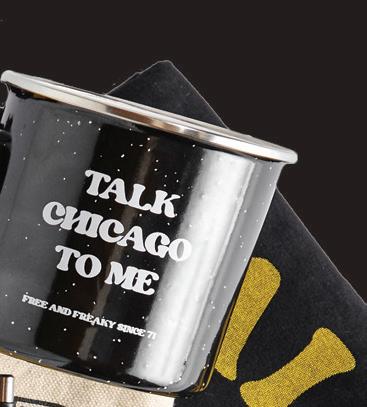

Prepare and furnish company Financial Statements. Oversee accounting department and month end close procedures. Coordinate and lead annual auditing process and prepare audited financial statements. Oversee budgeting, forecasting, and treasury functions, including cash movements. Must have a Master’s degree in Accounting, Finance or a related field. Must have five (5) years of experience as a CFO or Controller. Must also have five (5) years of experience with overseeing accounting departments; preparing regulatory financial reporting, audited and unaudited financial statements; Great Plains; and SQL queries. The position offers the option of limited telecommuting up to 20% of the time. All telecommuting must be done within 50 miles of the main worksite. If qualified, please submit your resume to humanresources@dvtrading. co and reference code DF0422.
Des Plaines Clinical Lab, Inc. D/B/A NTL Laboratories seeks a Medical Laboratory Technologist. Mail resume to 8833 Gross Point Rd, Suite 308, Skokie, IL.

TransUnion, LLC seeks Sr. Engineers (Web Hosting) for various & unanticipated worksites throughout the U.S. (HQ: Chicago, IL) to dev sw app designs using business & operational req’s for new & existing systems. Master’s in Comp Eng/Electronics & Comp Tech/related field +2yrs exp OR Bachelor’s in Comp Eng/Electronics & Comp Tech/related field +5yrs exp req’d. Req’d Skills: Websphere, JBoss, Apache, Tomcat, IBM HTTP Server, Siteminder, Shell scripting, Jython, Linux. 100% telecommuting permitted. Send resume to: A. Goodpasture, REF: PP, 555 W. Adams St., Chicago, IL 60661.
Selbert Perkins Design seeks Senior Designer in Chicago, IL to design, develop concepts & implement graphics. Reqs. bachelor’s in graphic design, interior design, industrial design, architecture or rltd & 5 yrs of exp. in graphic design or rltd; Must have 3 yrs of exp. planning, documenting & managing environmental graphic design, branded environment graphics & wayfinding; some exp. using Adobe Creative Suite & CAD tools. Nationwide travel 2-3 times per yr. Send CV to svaldes@ selbertperkins.com.
Have you had an unwanted sexual experience since age 18? Did you tell someone in your life about it who is also willing to participate? Women ages 18+ who have someone else in their life they told about their experience also willing to participate will be paid to complete a confidential online research survey for the Women’s Dyadic Support Study. Contact Dr. Sarah Ullman of the University of Illinois at Chicago, Criminology, Law, & Justice Department at ForWomen@uic.edu, 312-996-5508. Protocol #2021-0019.
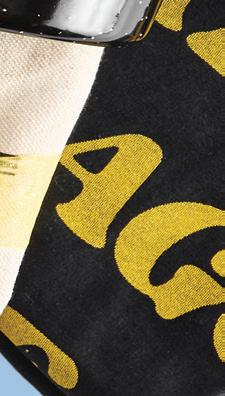
Huge Artist/Work Studio for Rent $1800 a month plus utilities in Wicker Park - 3000 sf includes finished basement, garage door and high ceilings: Call Celia at 630.788.3143


CHESTNUT ORGANIZING AND CLEANING SERVICES: especially for people who need an organizing service because of depression, elderly, physical or mental challenges or other causes for your home’s clutter, disorganization, dysfunction, etc. We can organize for the downsizing of your current possessions to more easily move into a smaller home. With your help, we can help to organize your move. We can organize and clean for the deceased in lieu of having the bereaved needing to do the preparation to sell or rent the deceased’s home. We are absolutely not judgmental; we’ve seen and done “worse” than your job assignment. With your help, can we please help you? Chestnut Cleaning Service: 312-332-5575. www. ChestnutCleaning.com


































